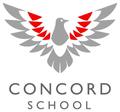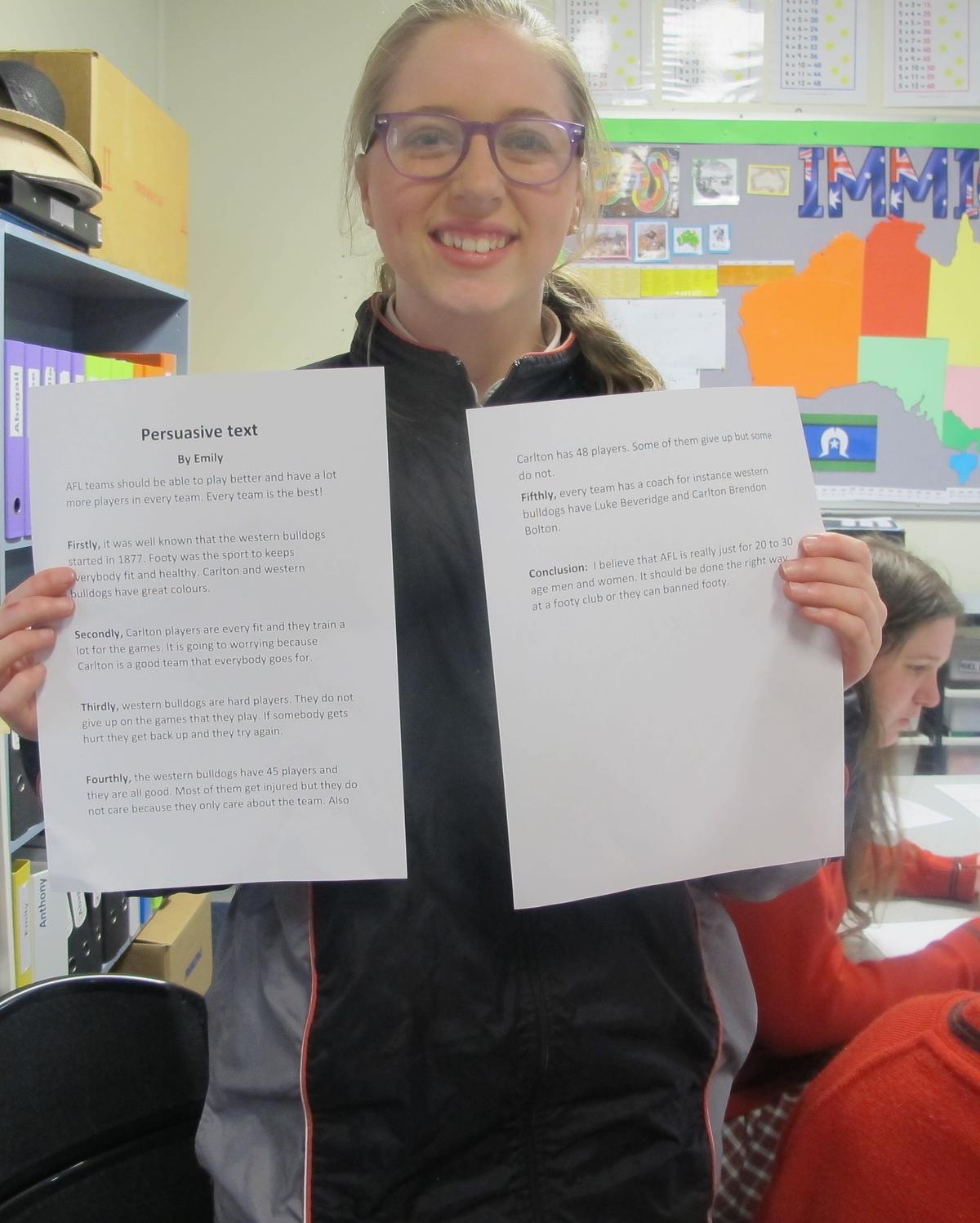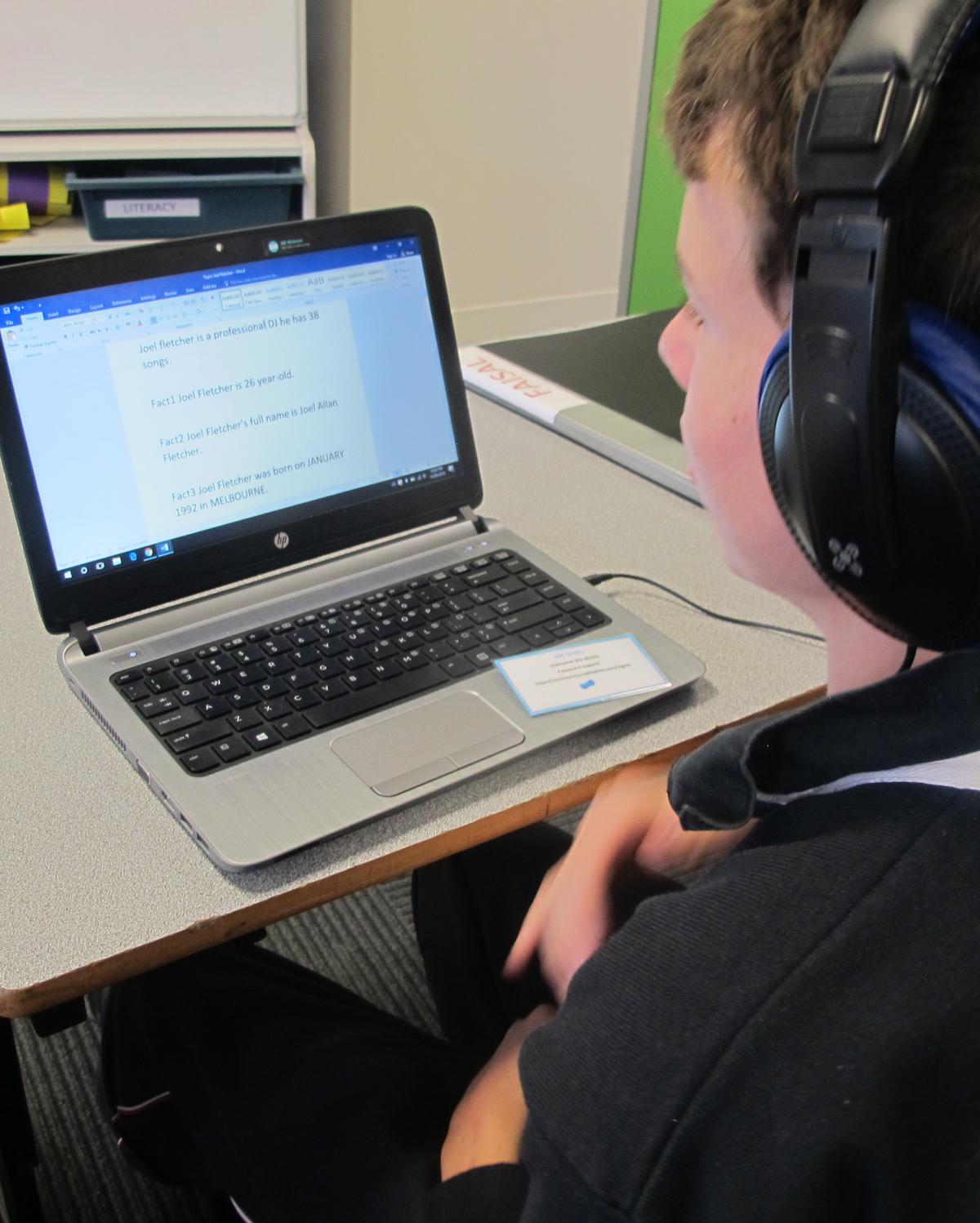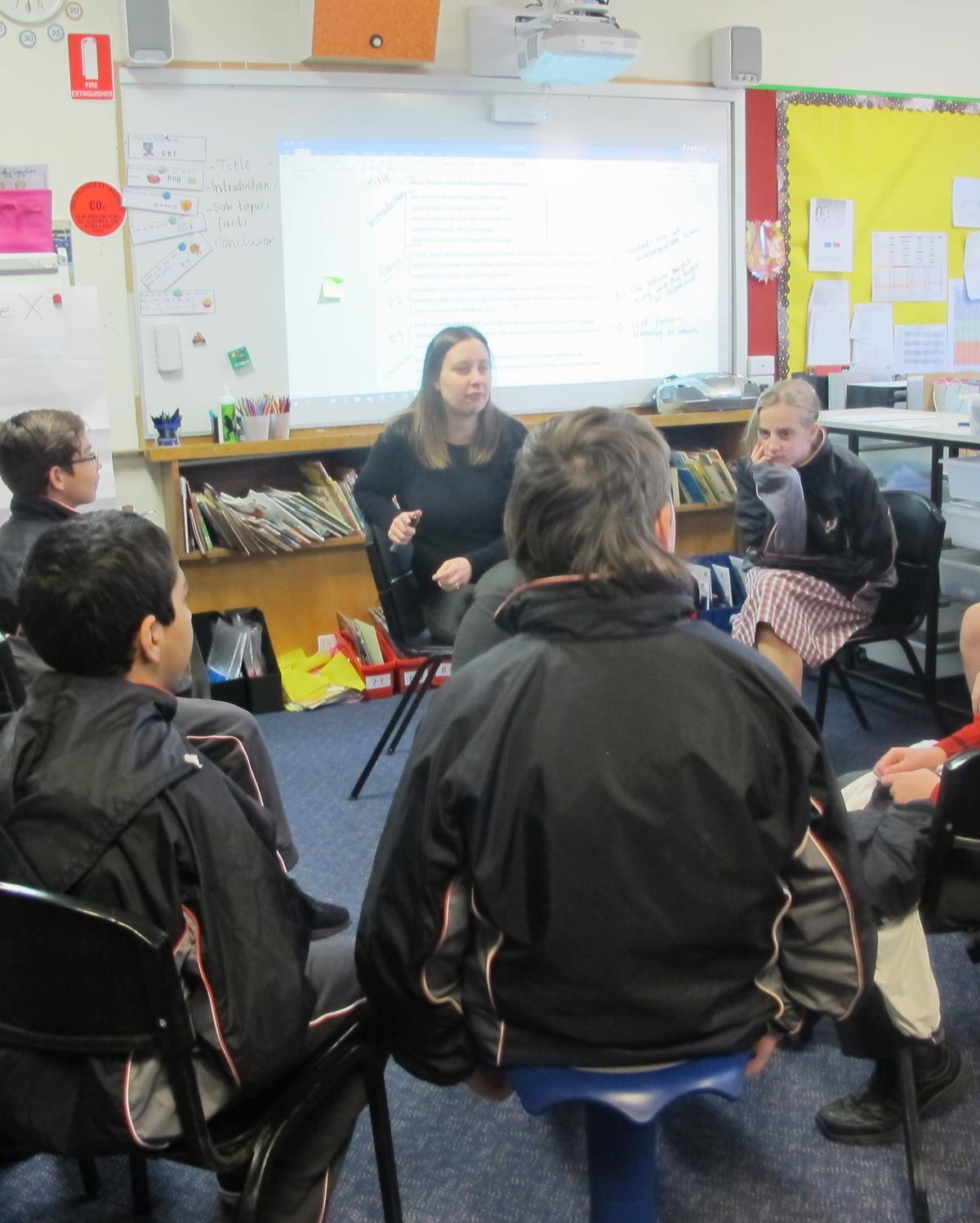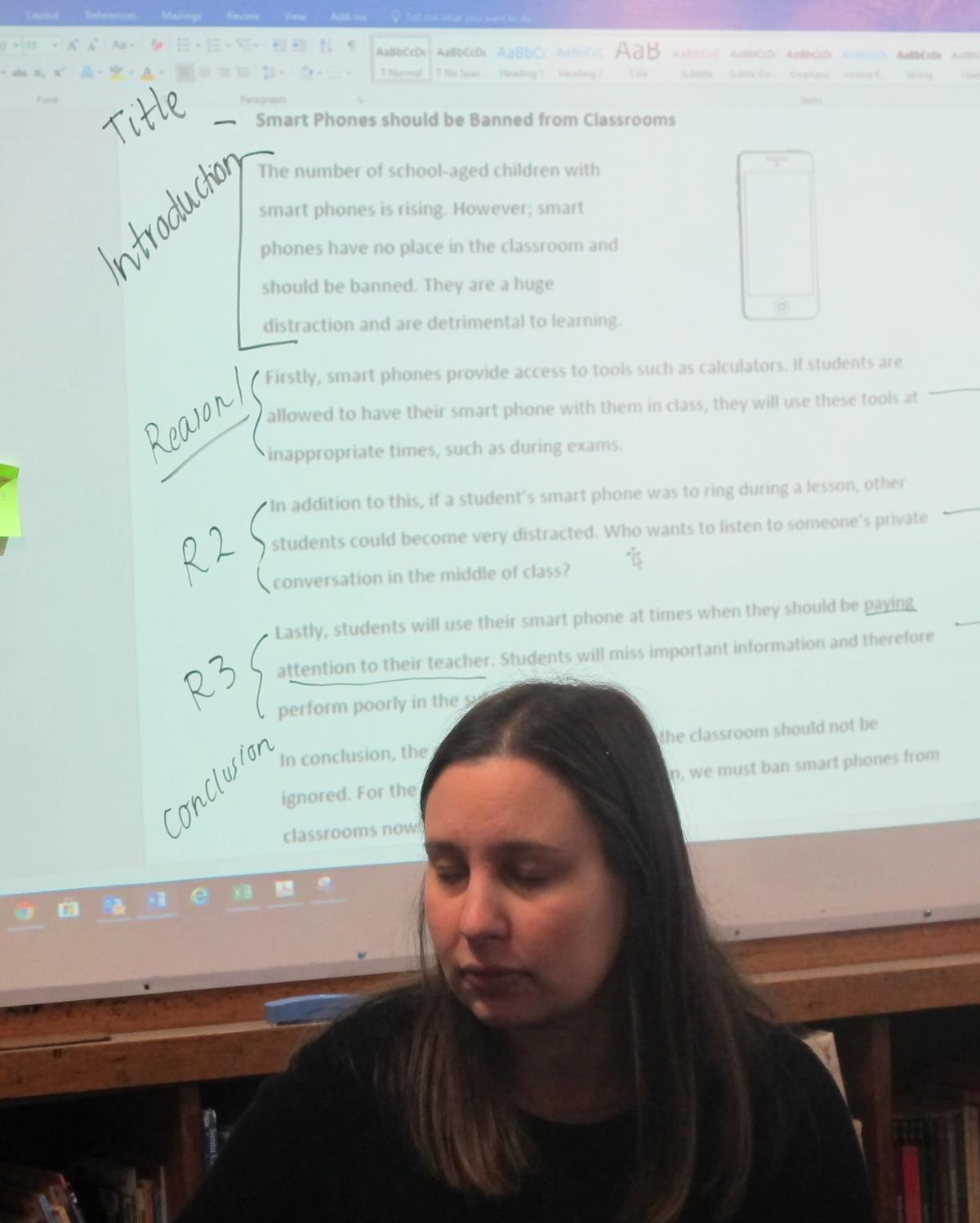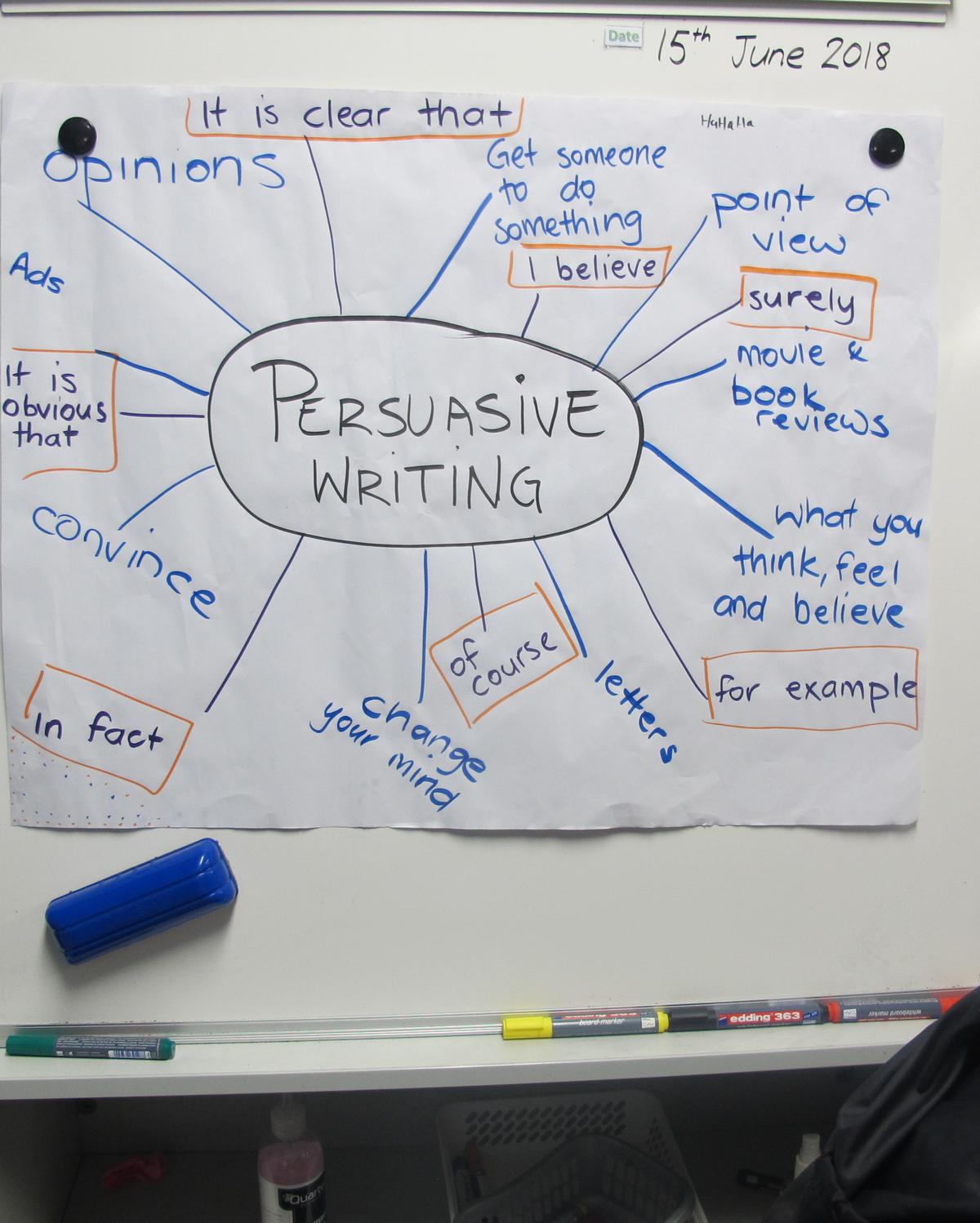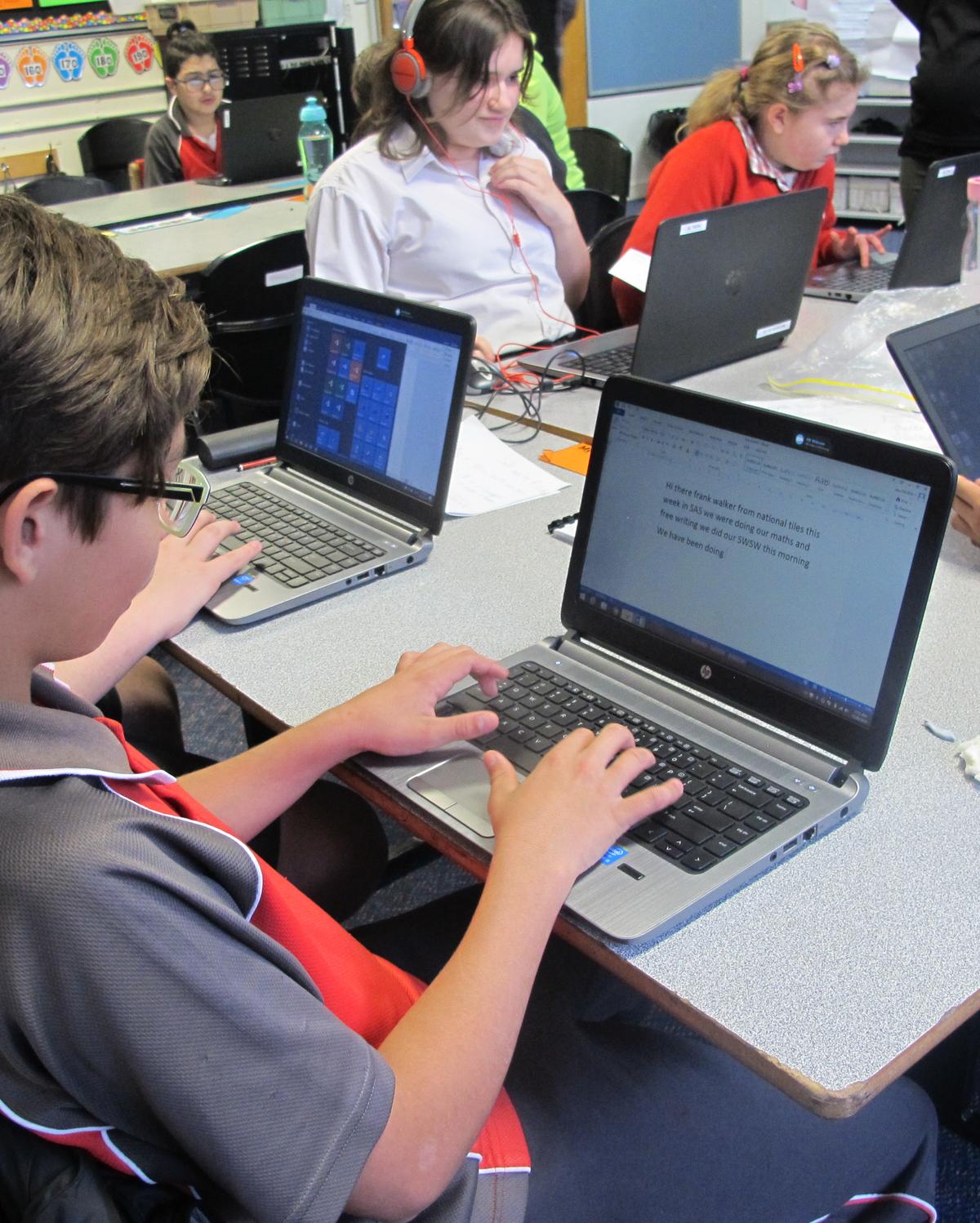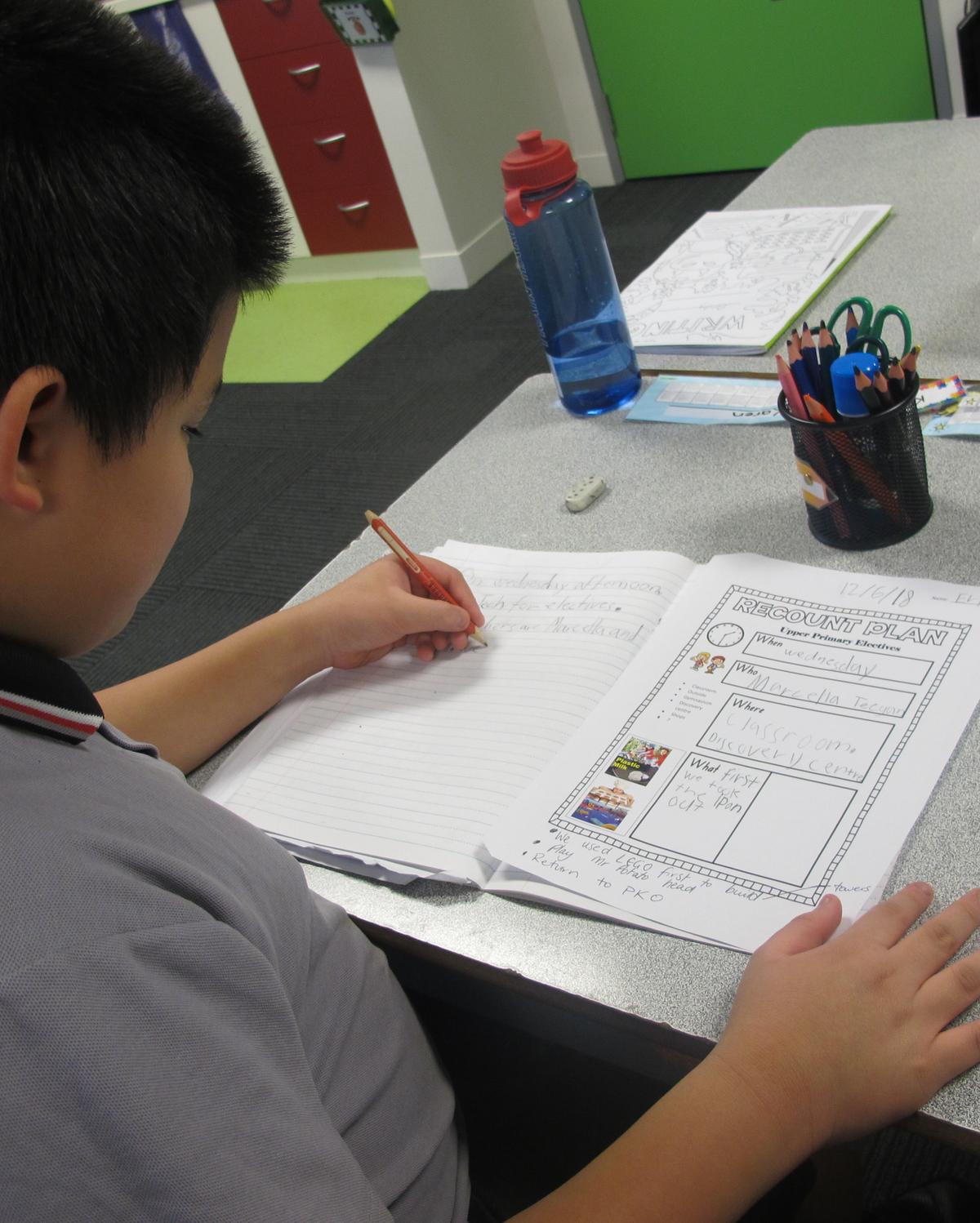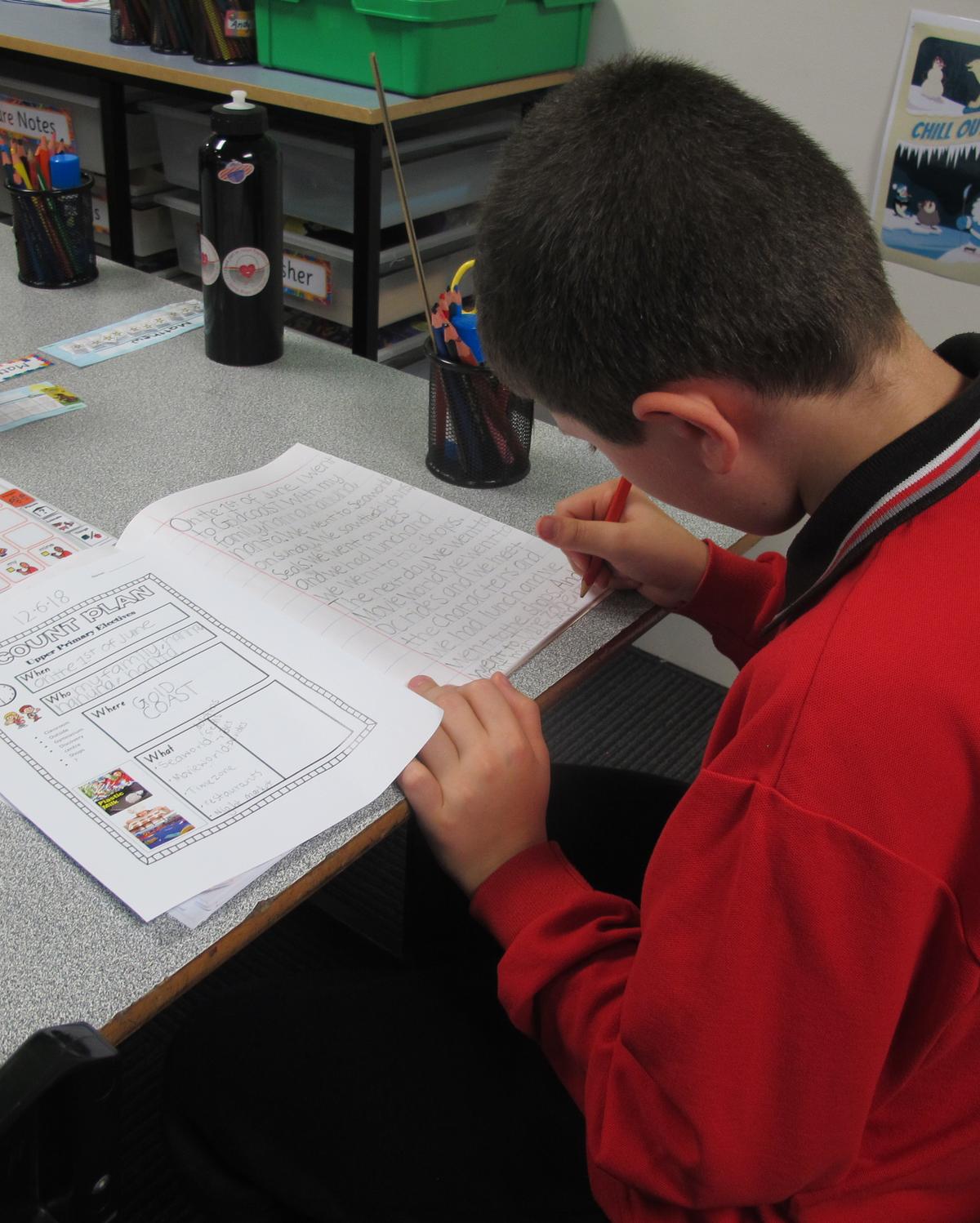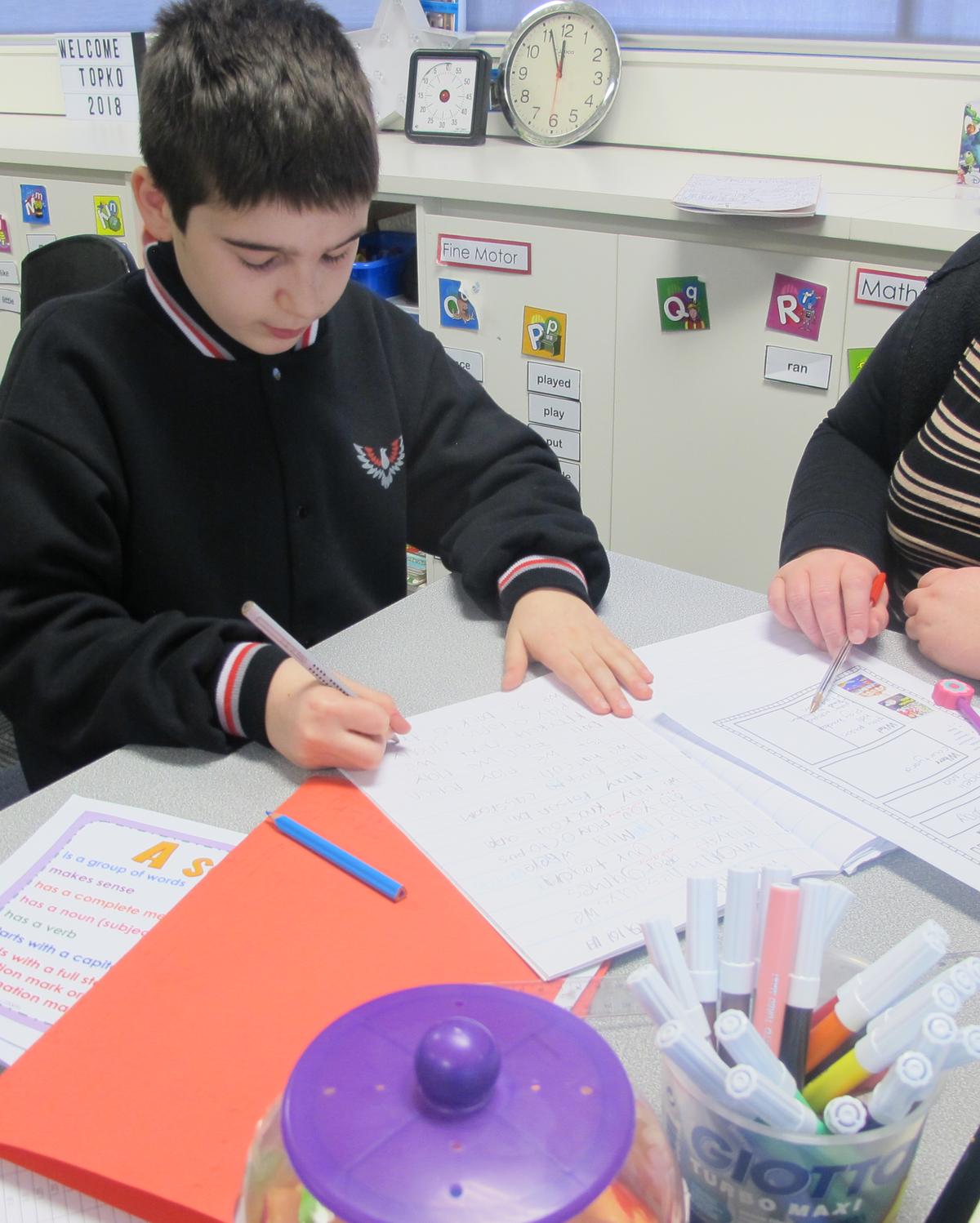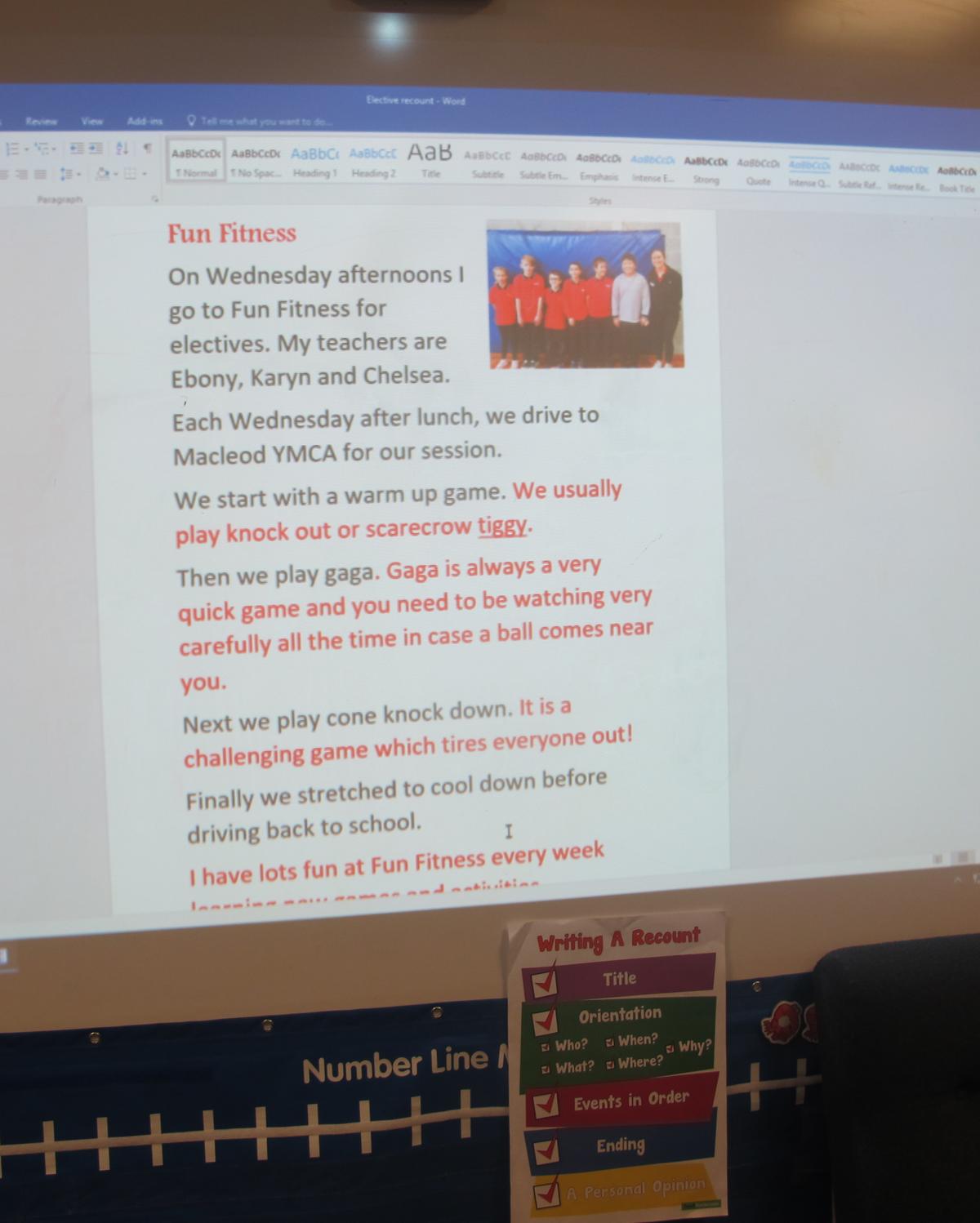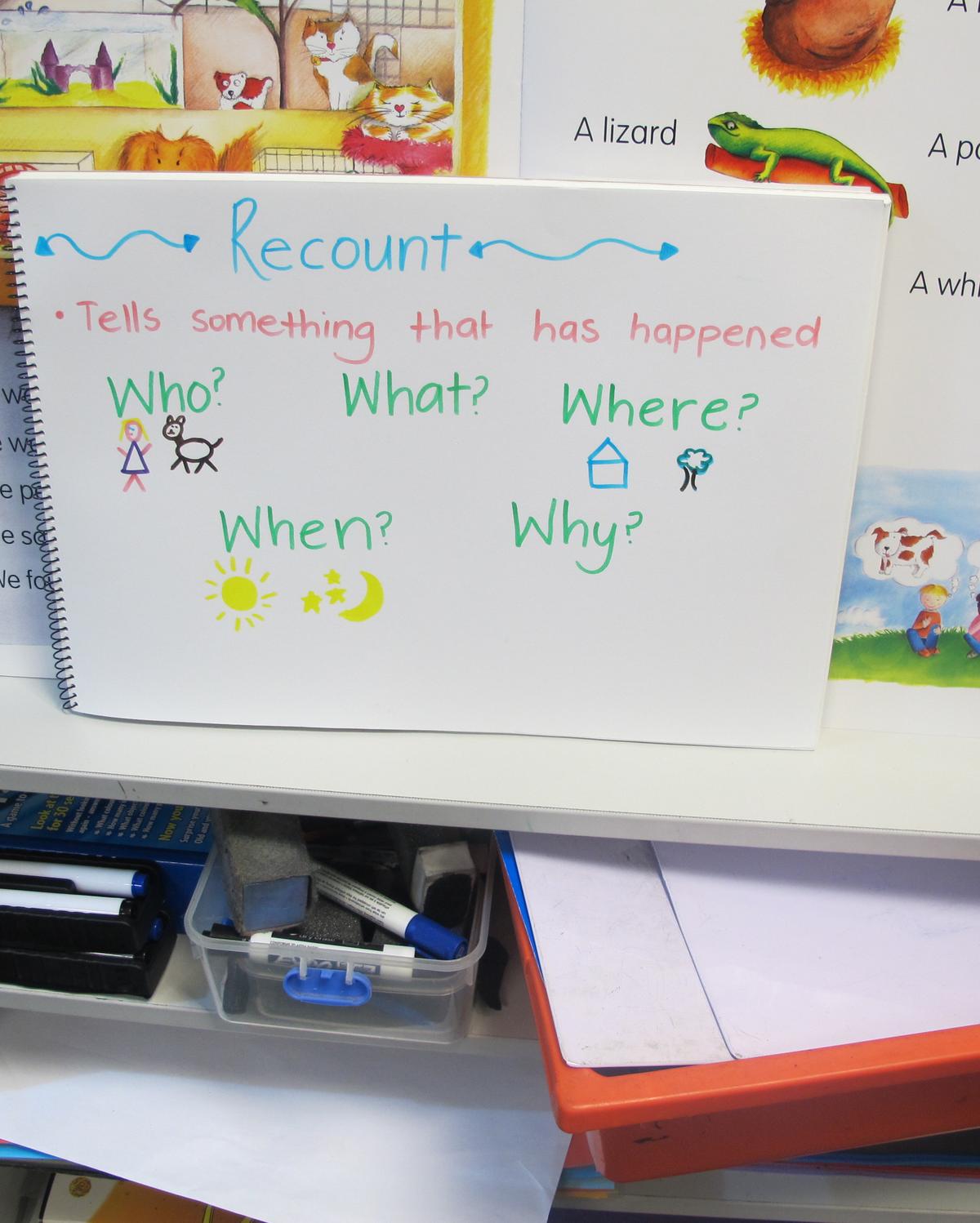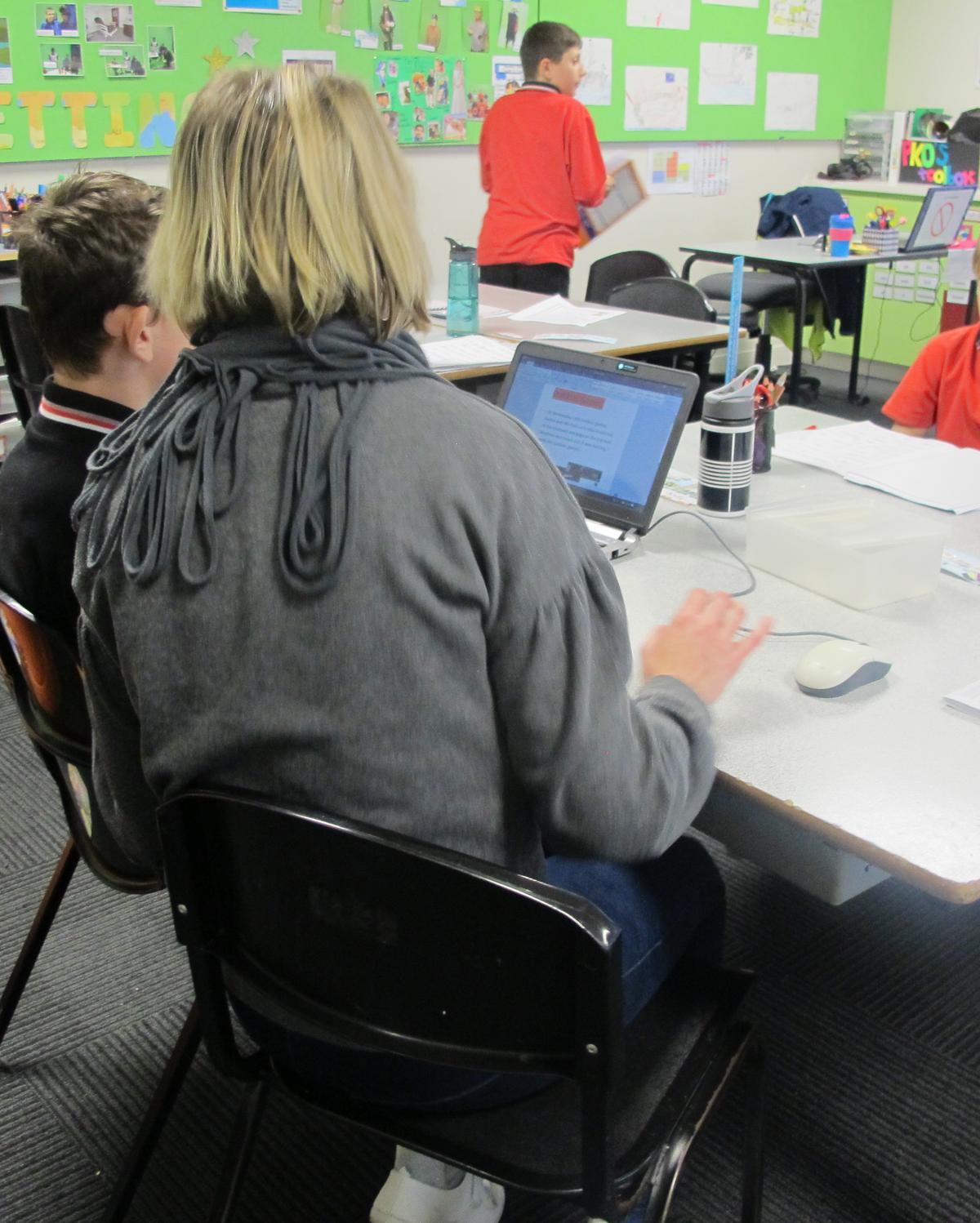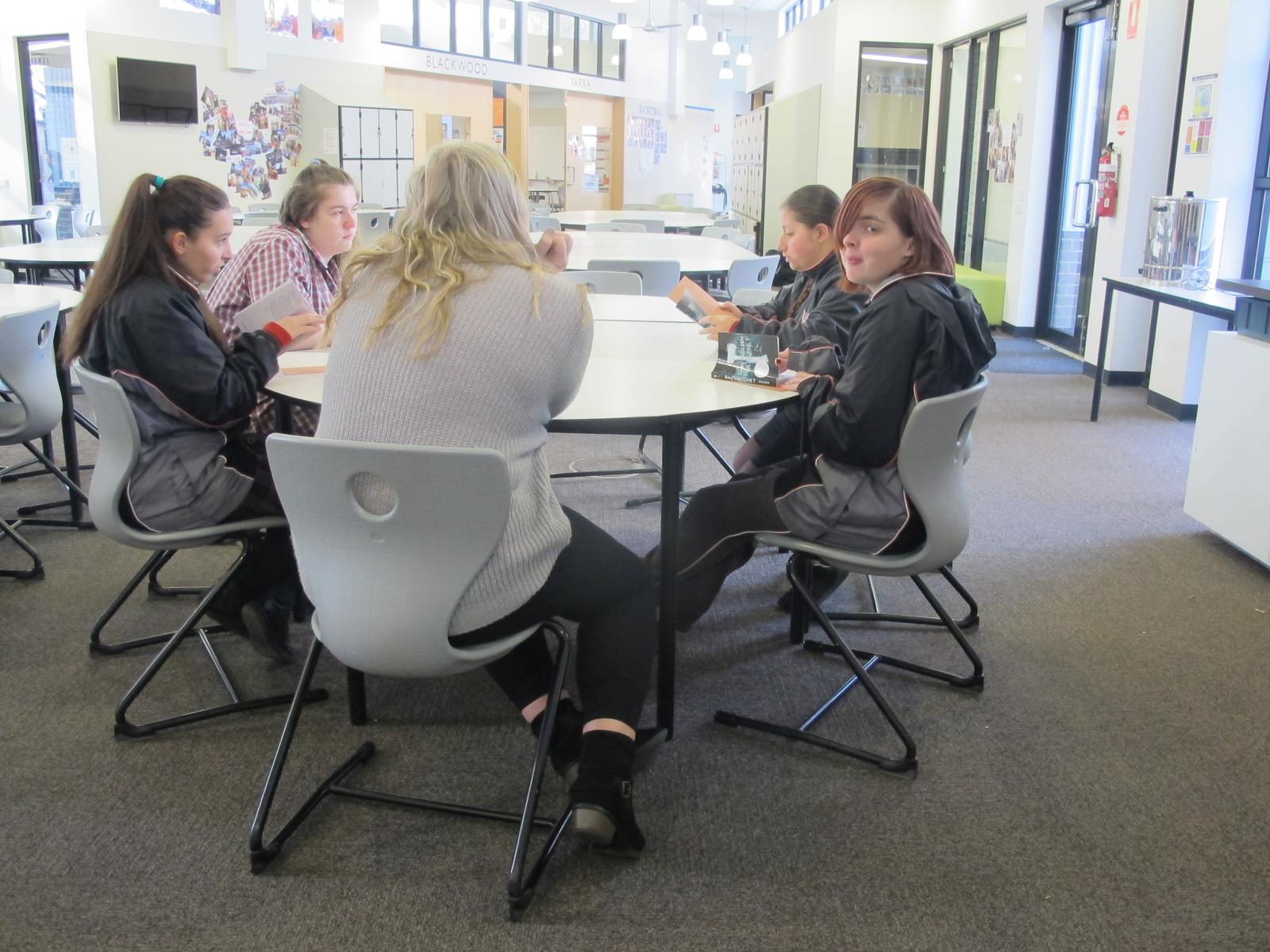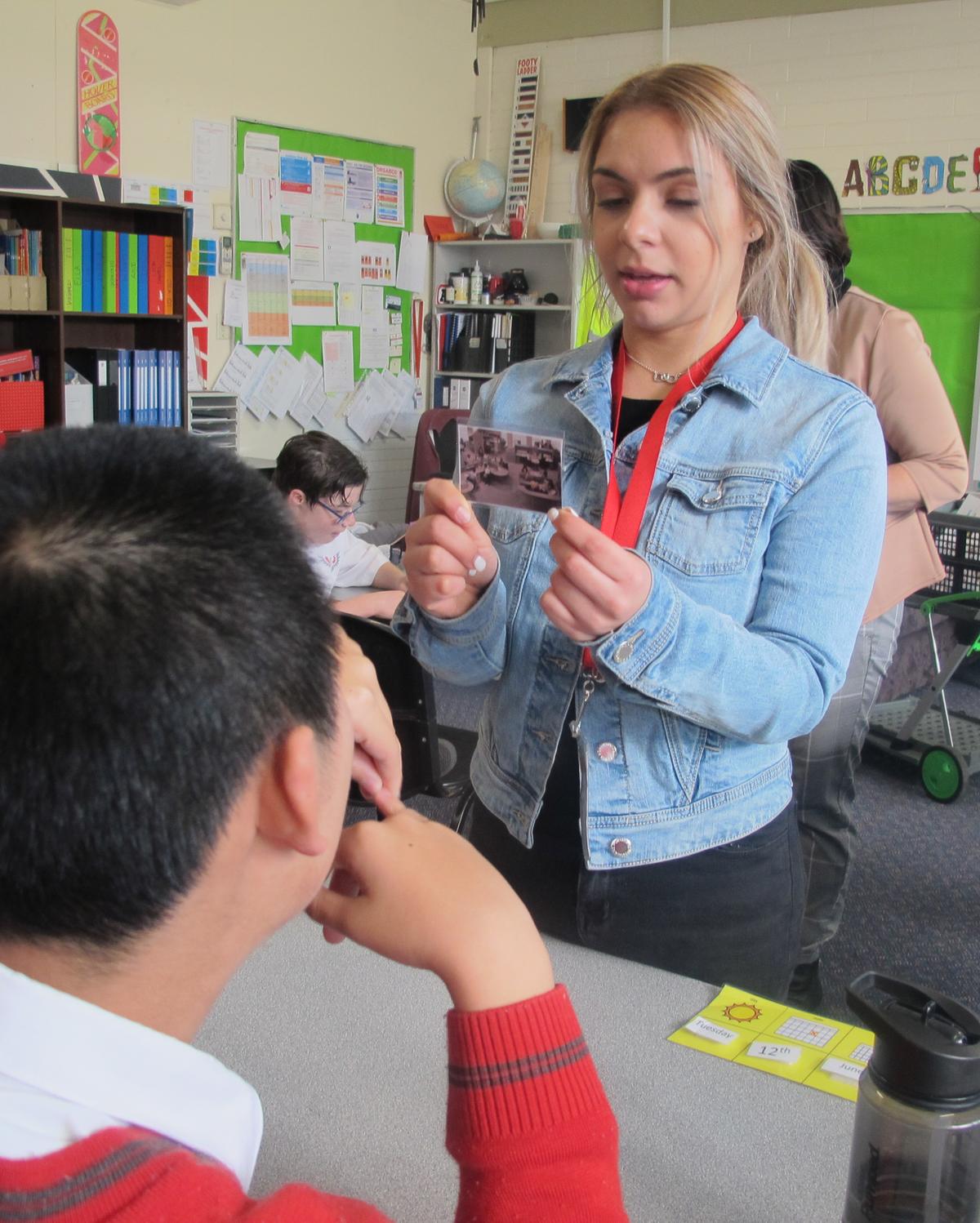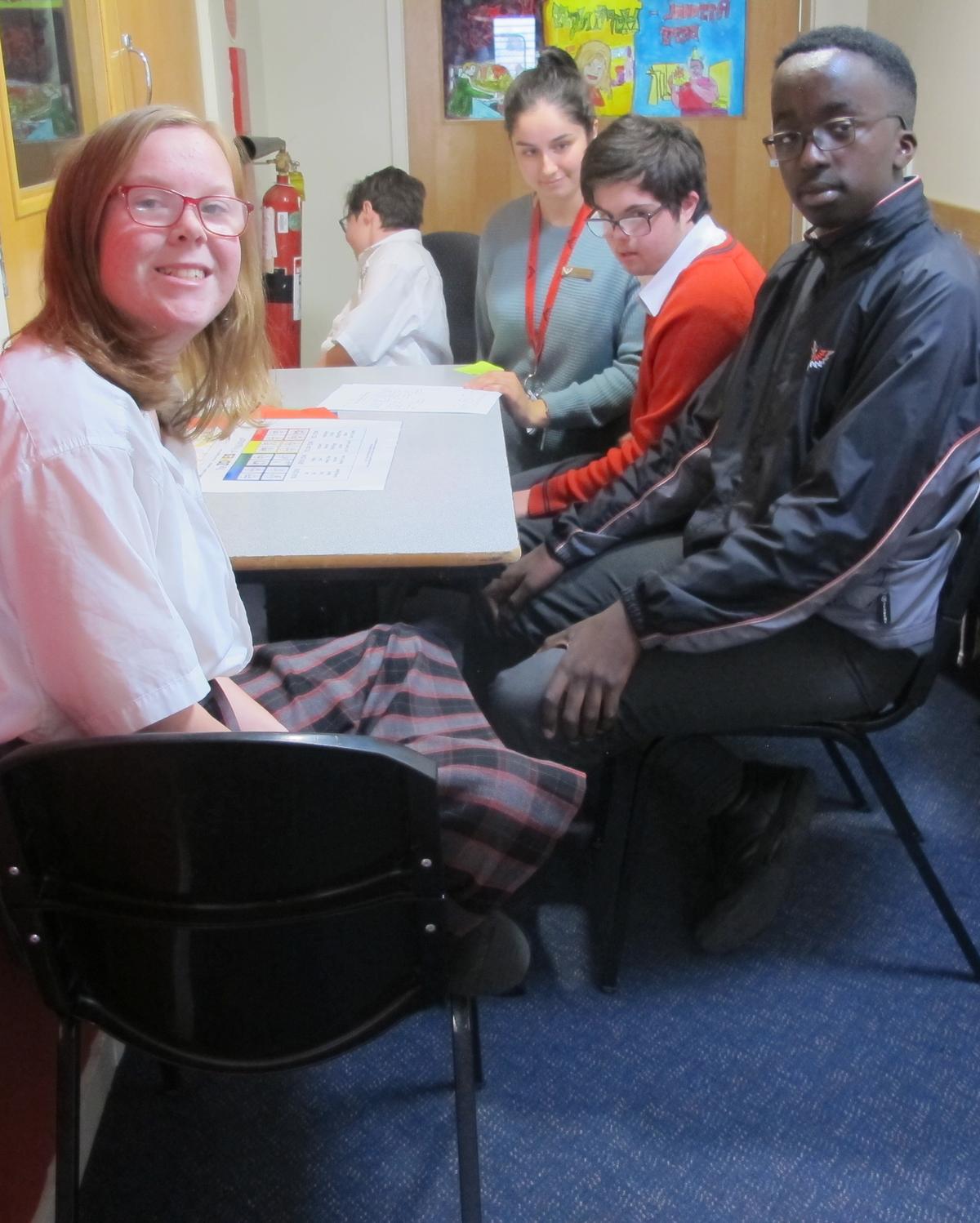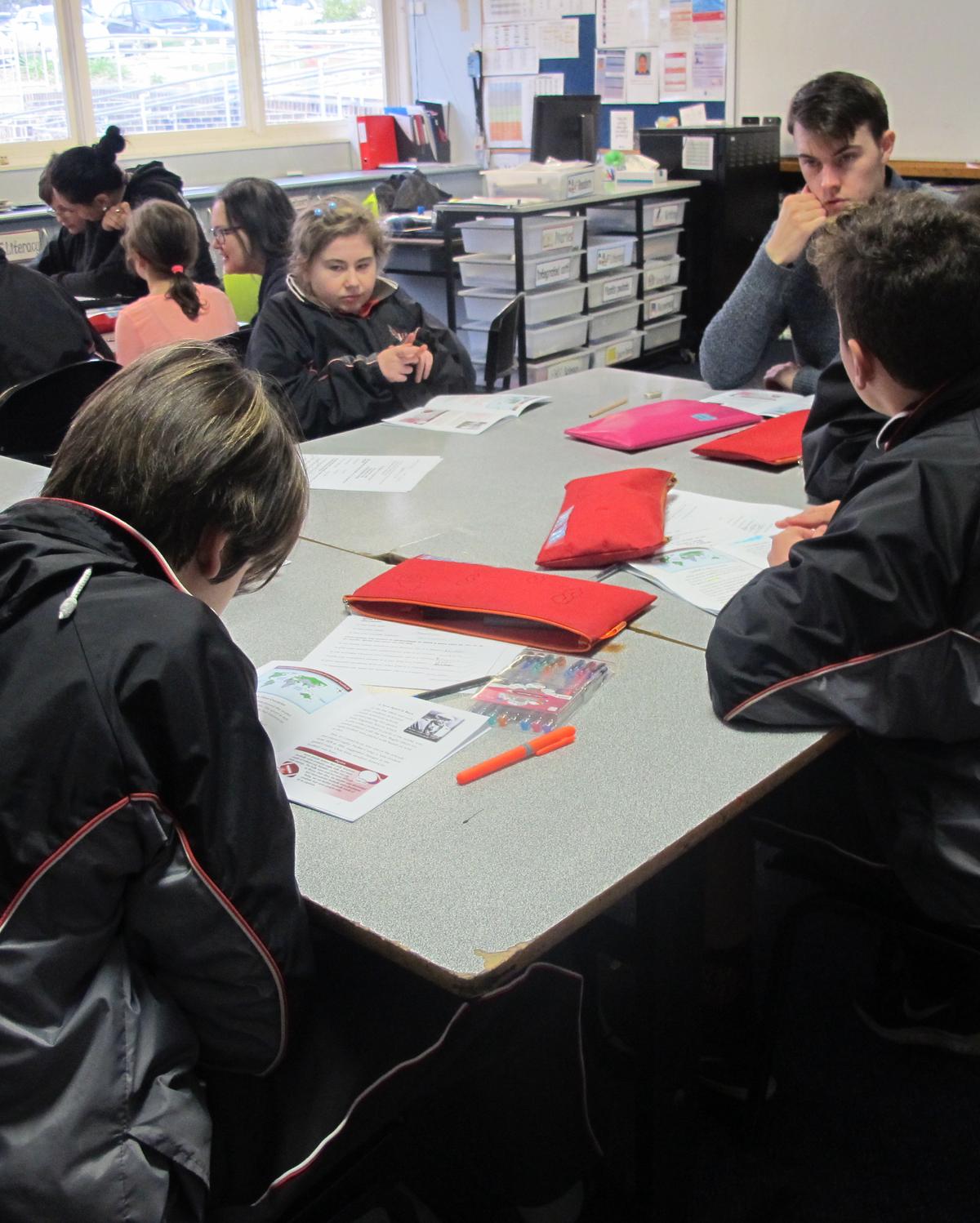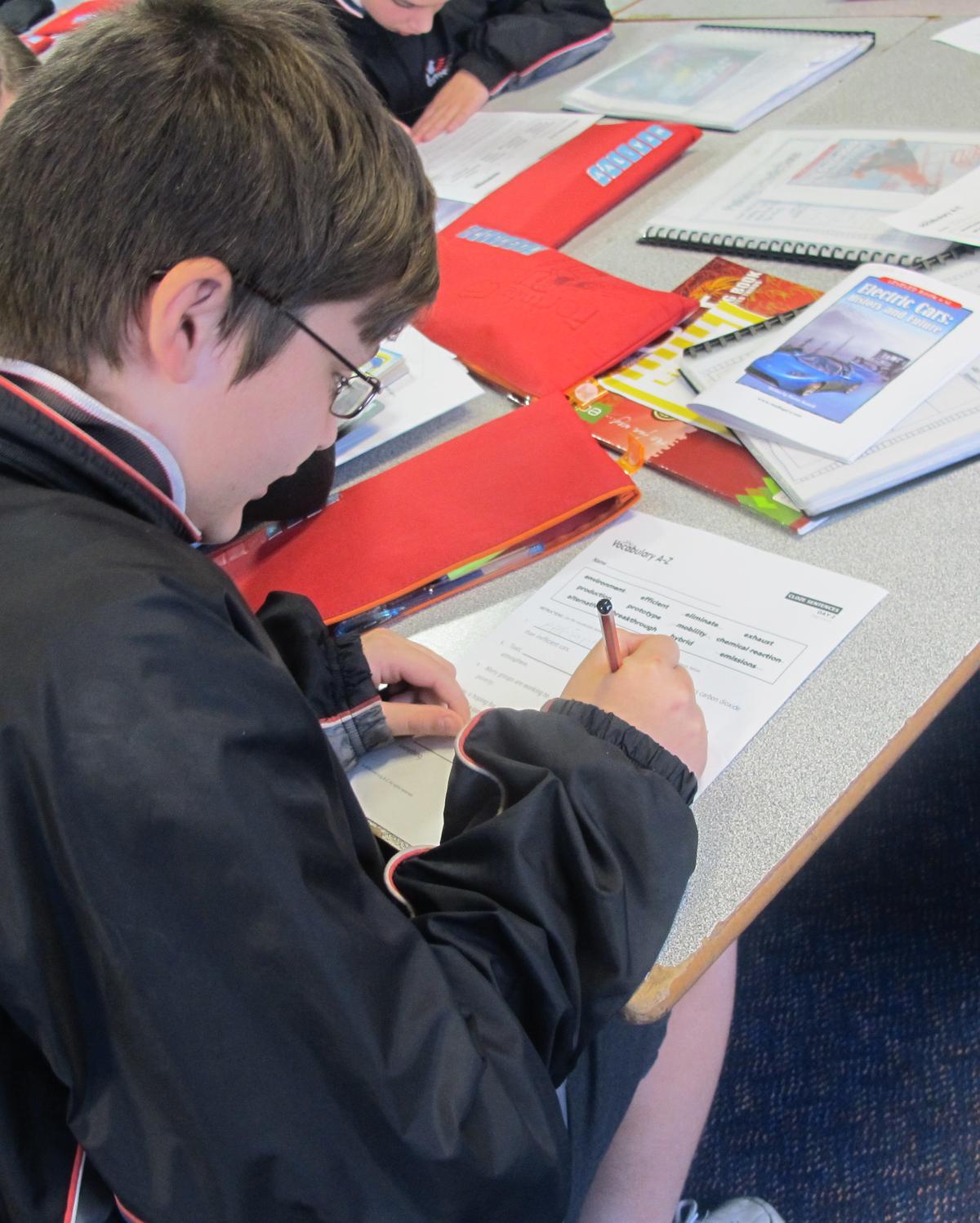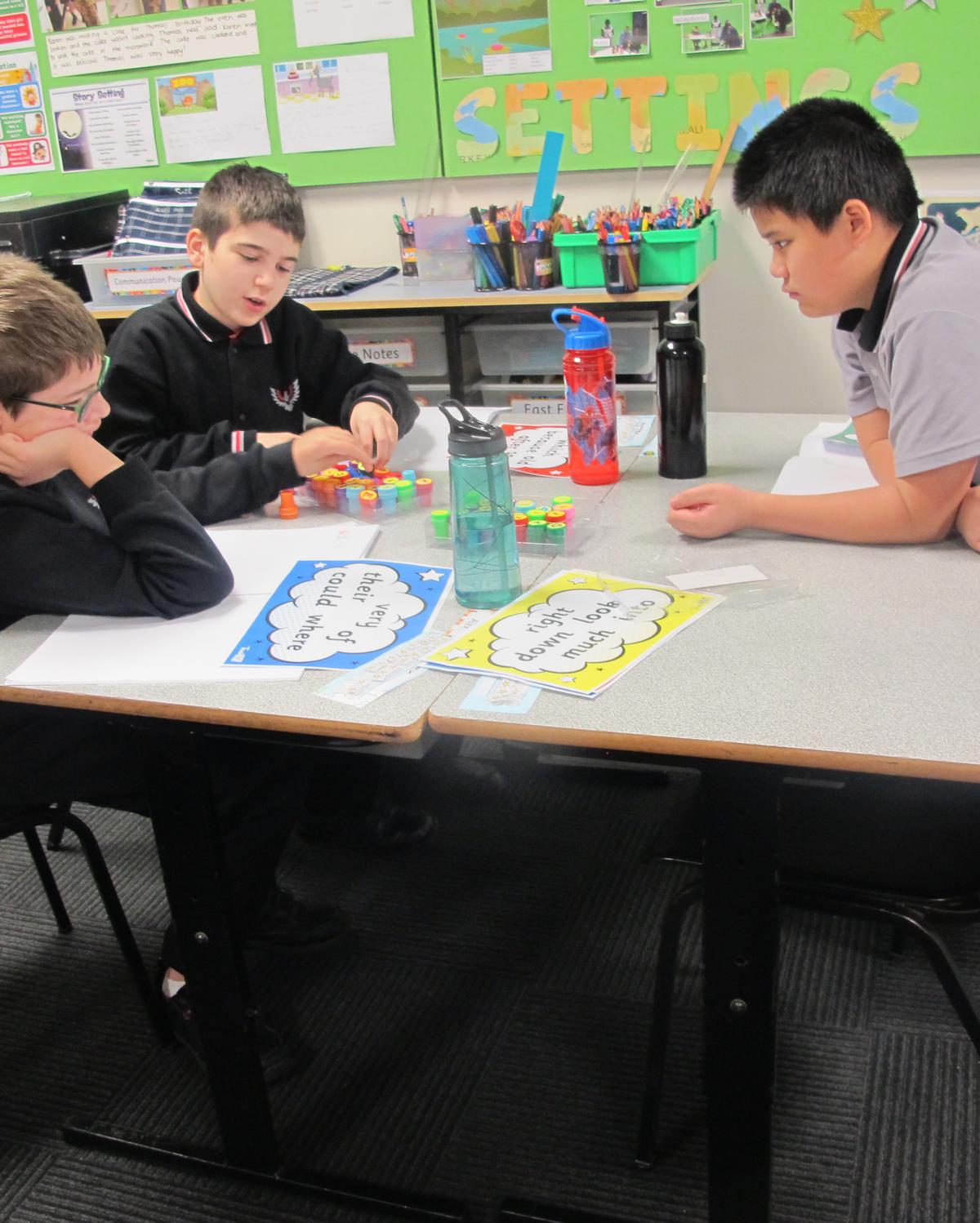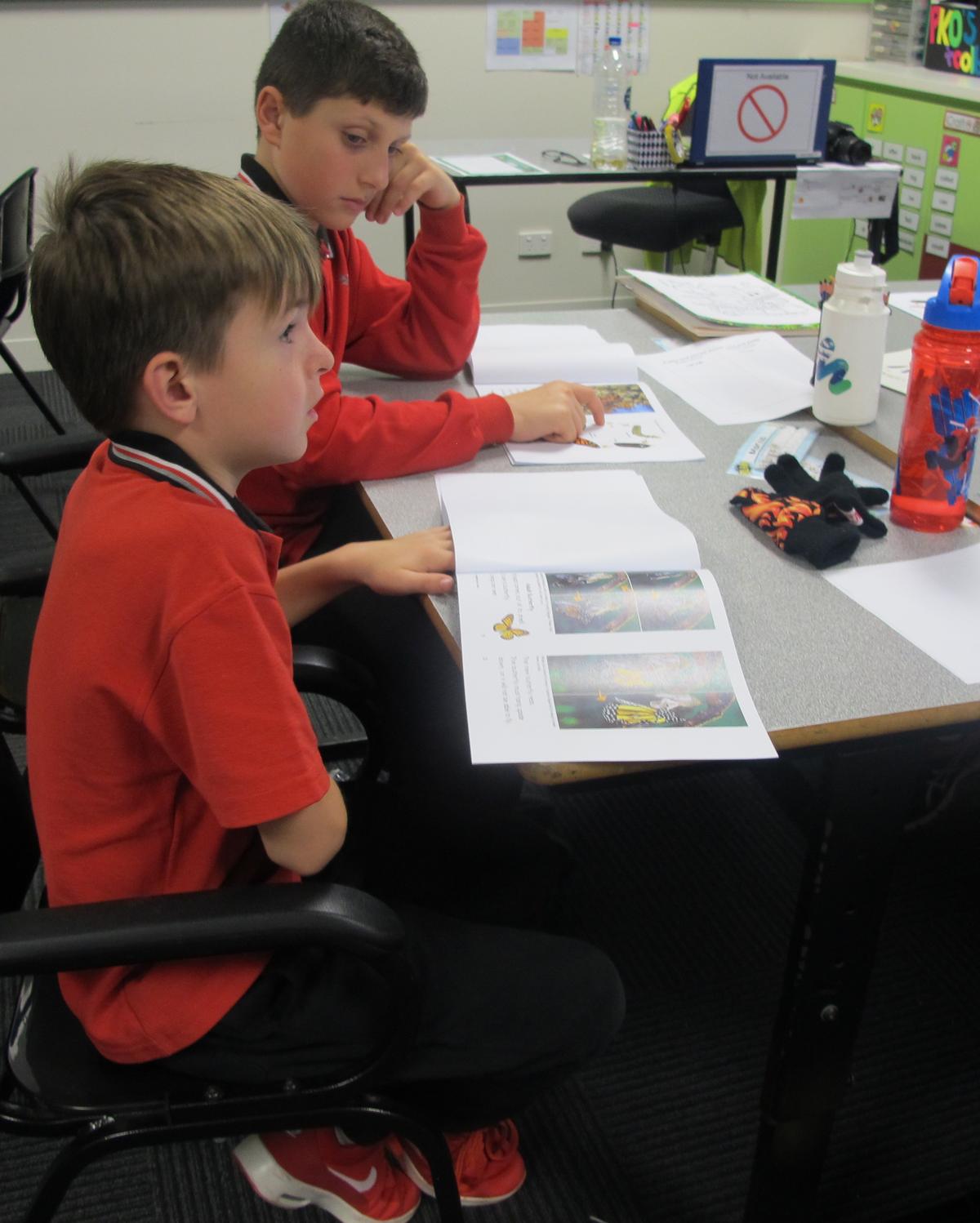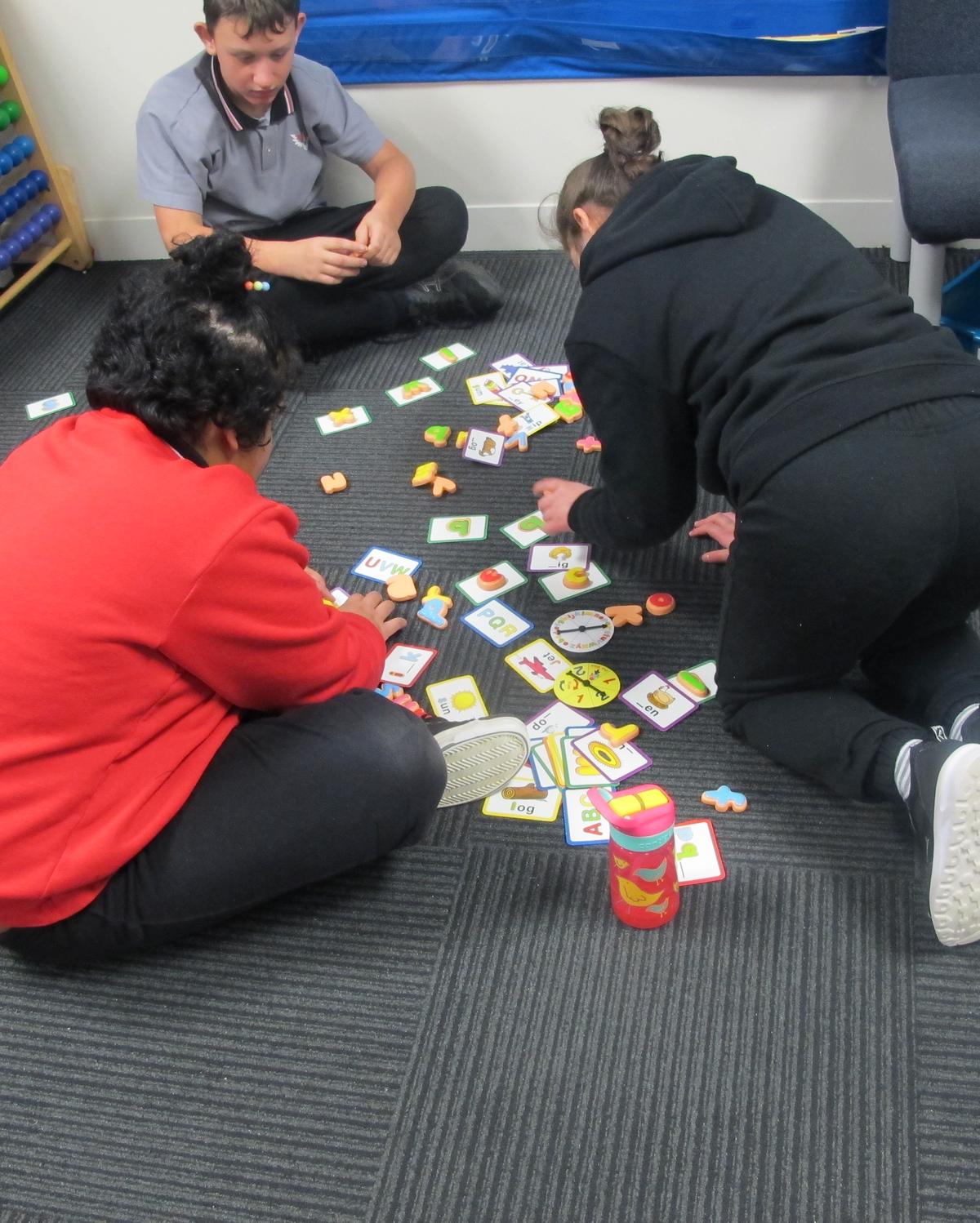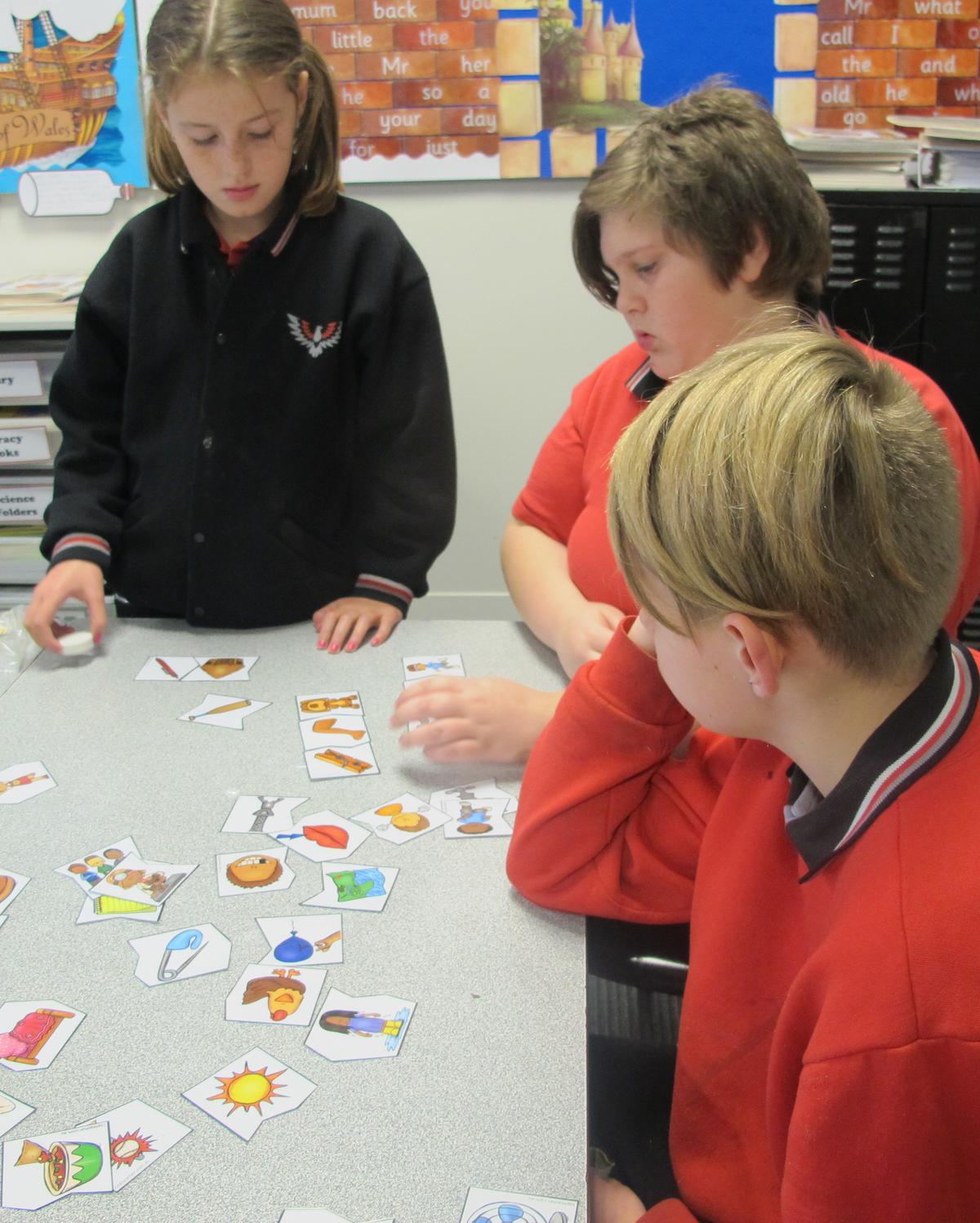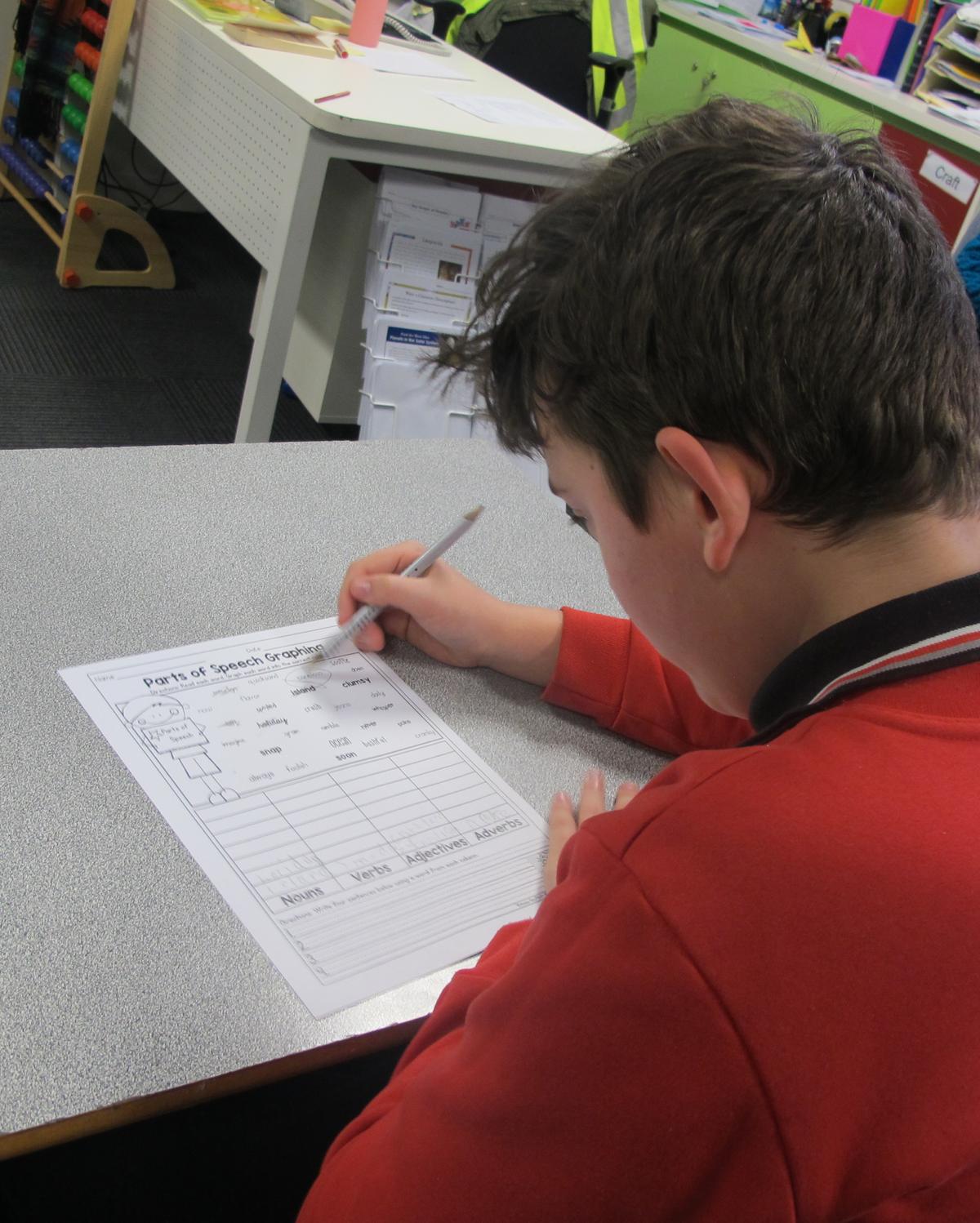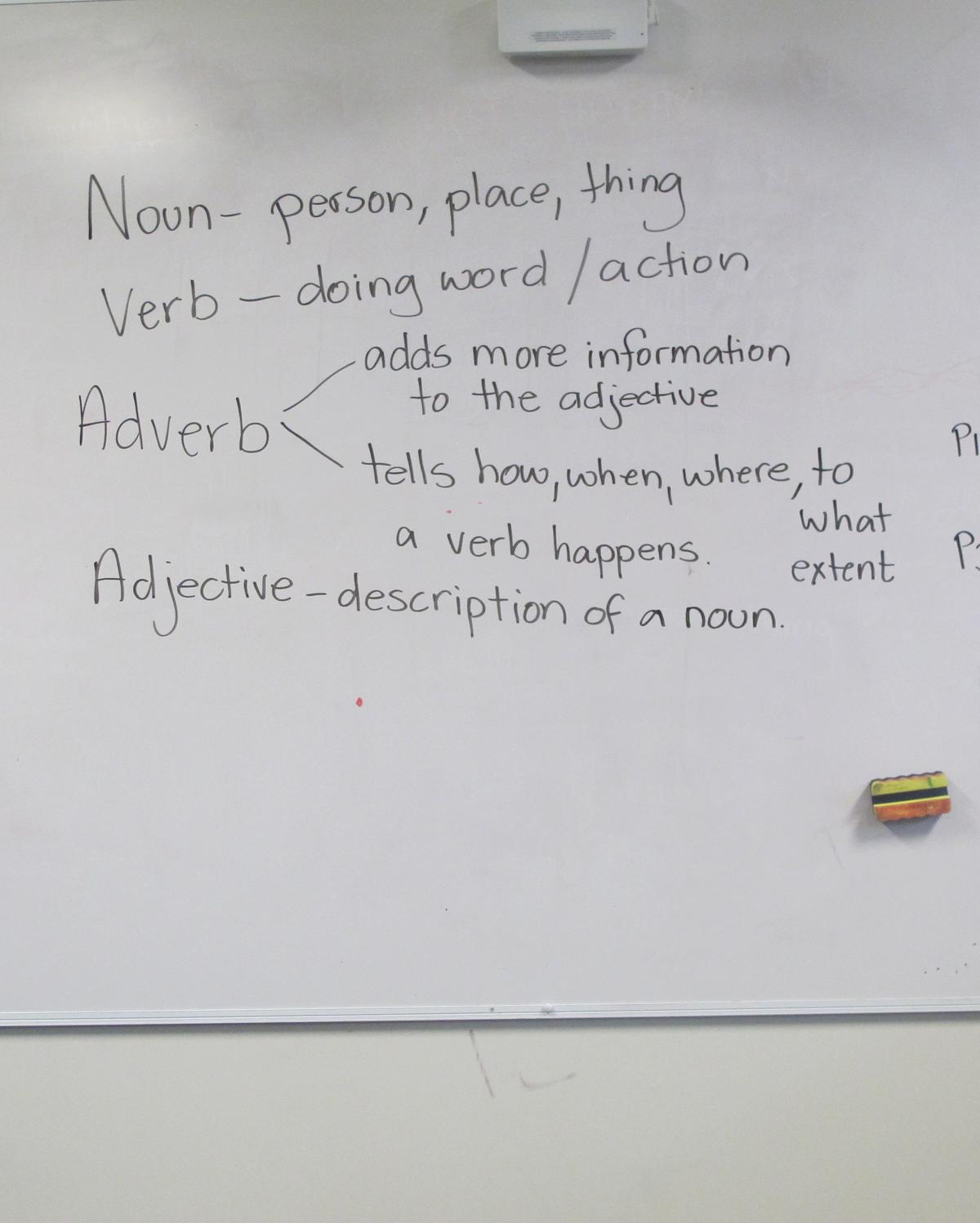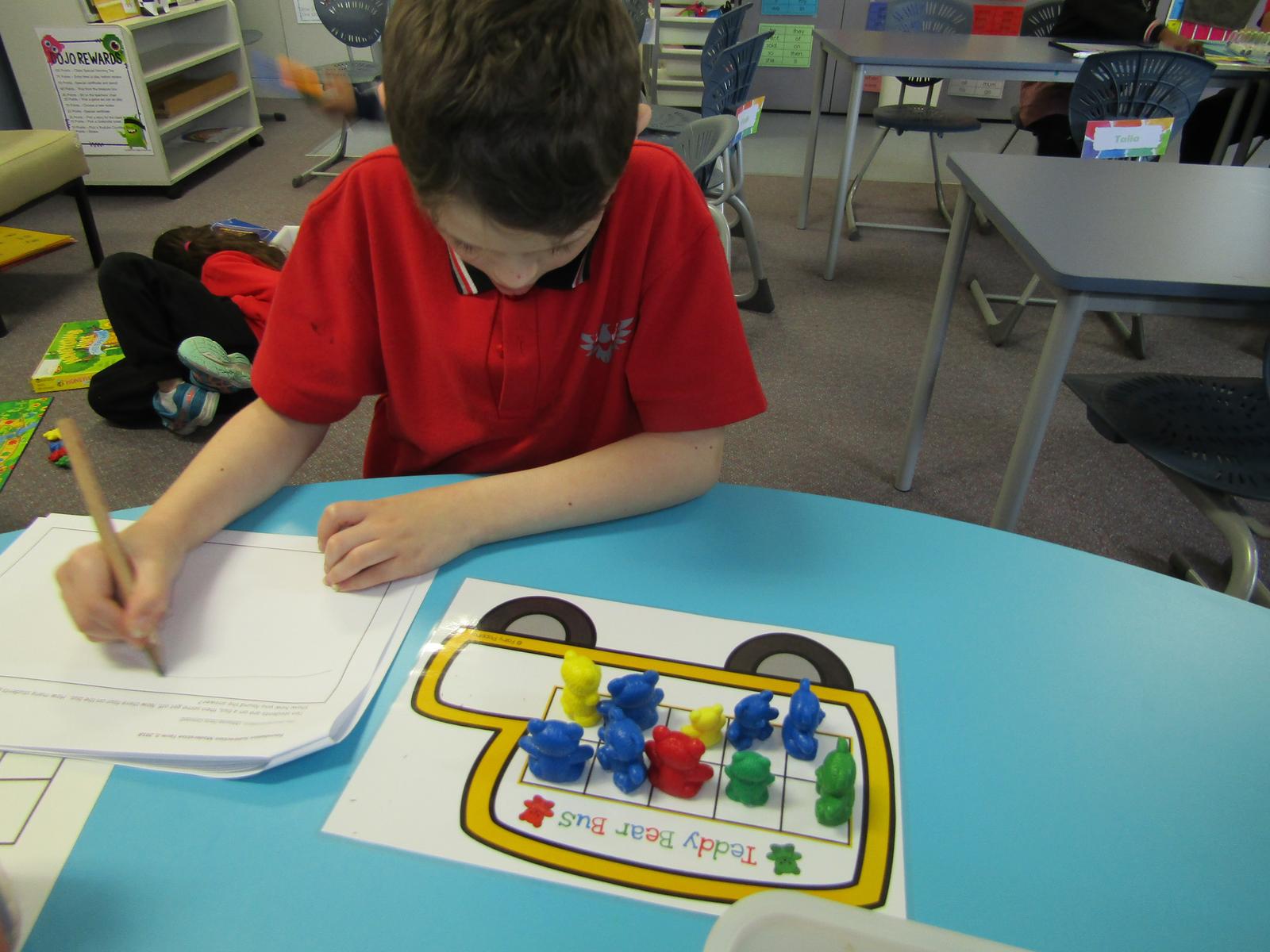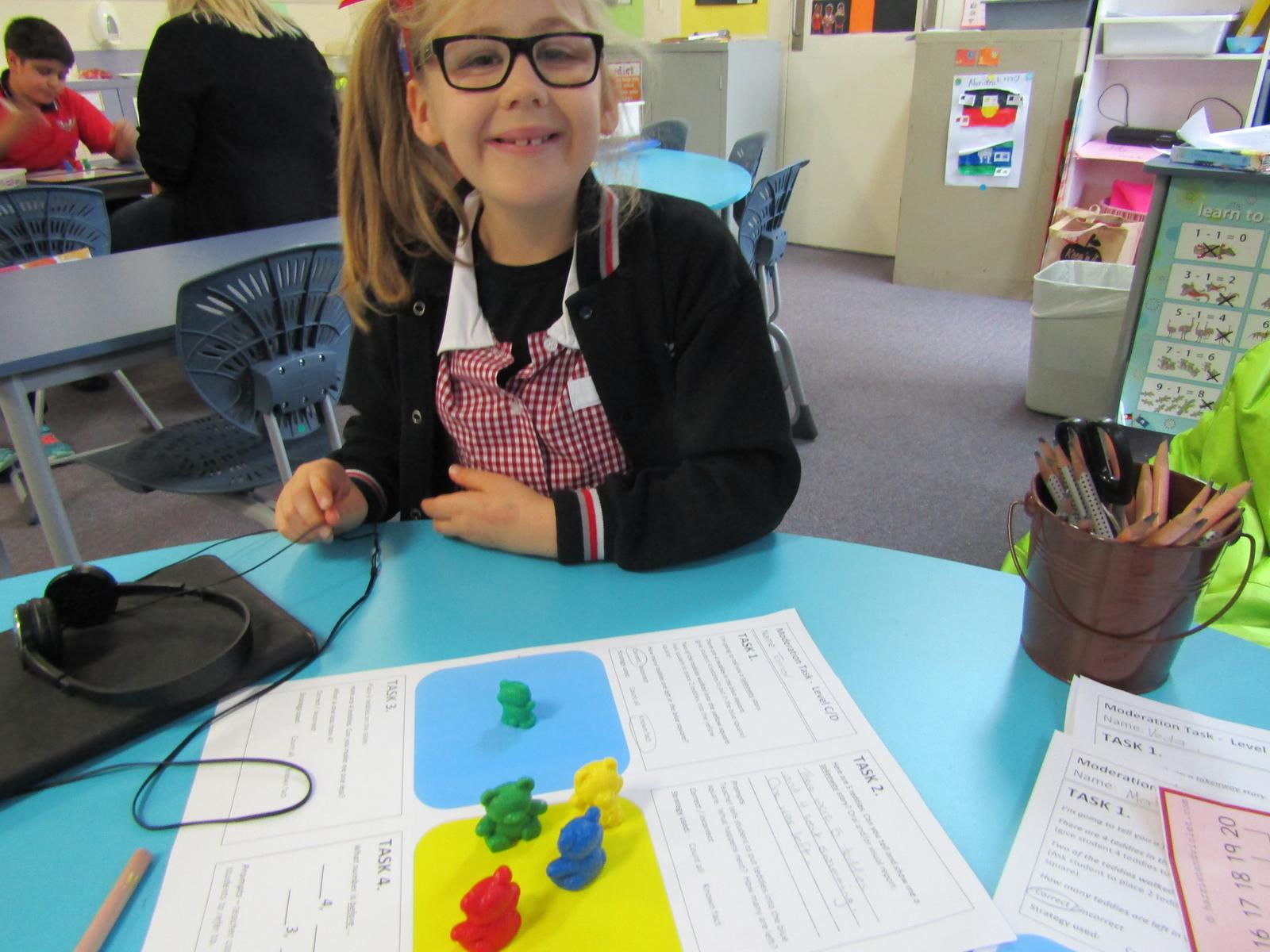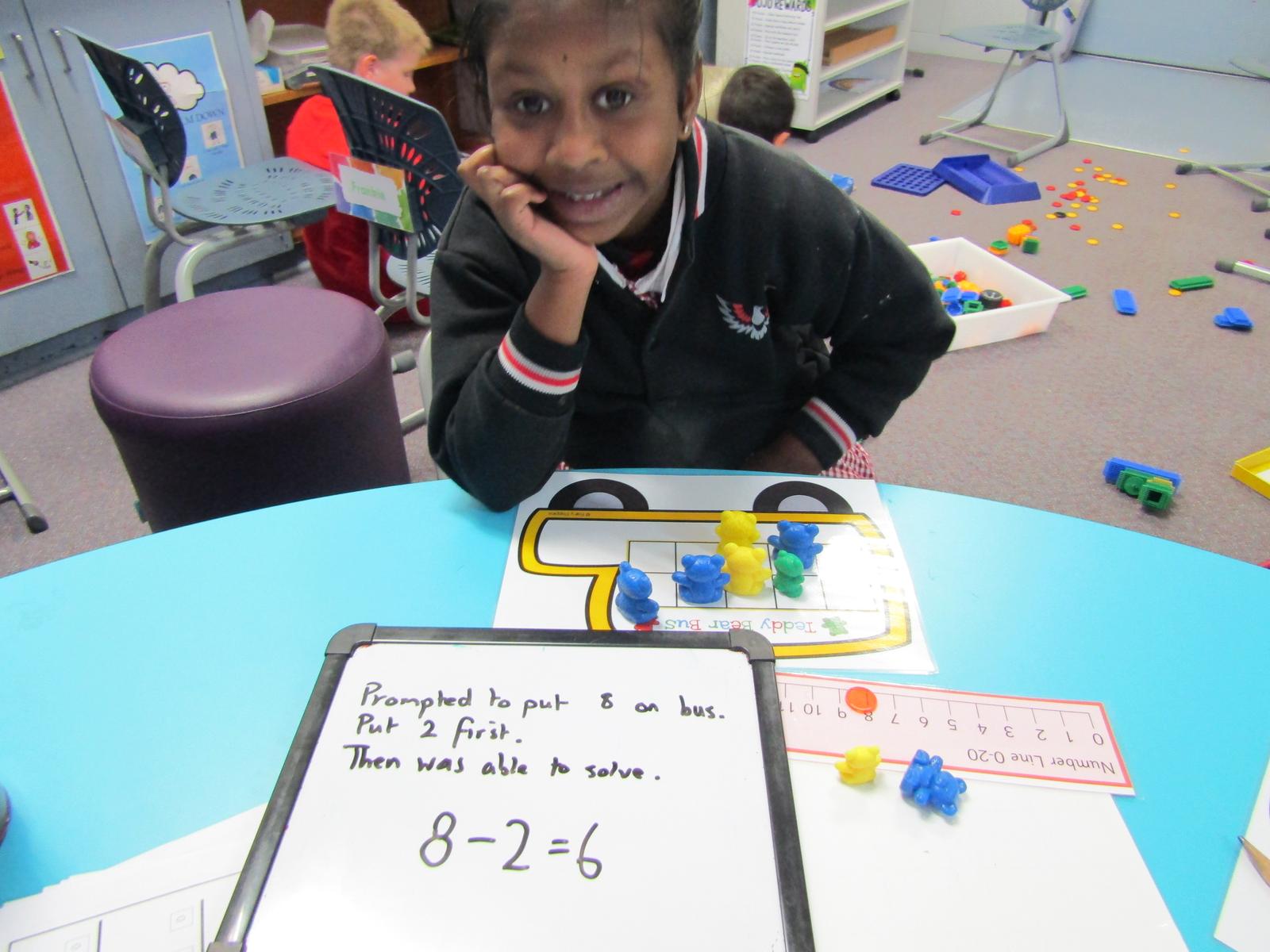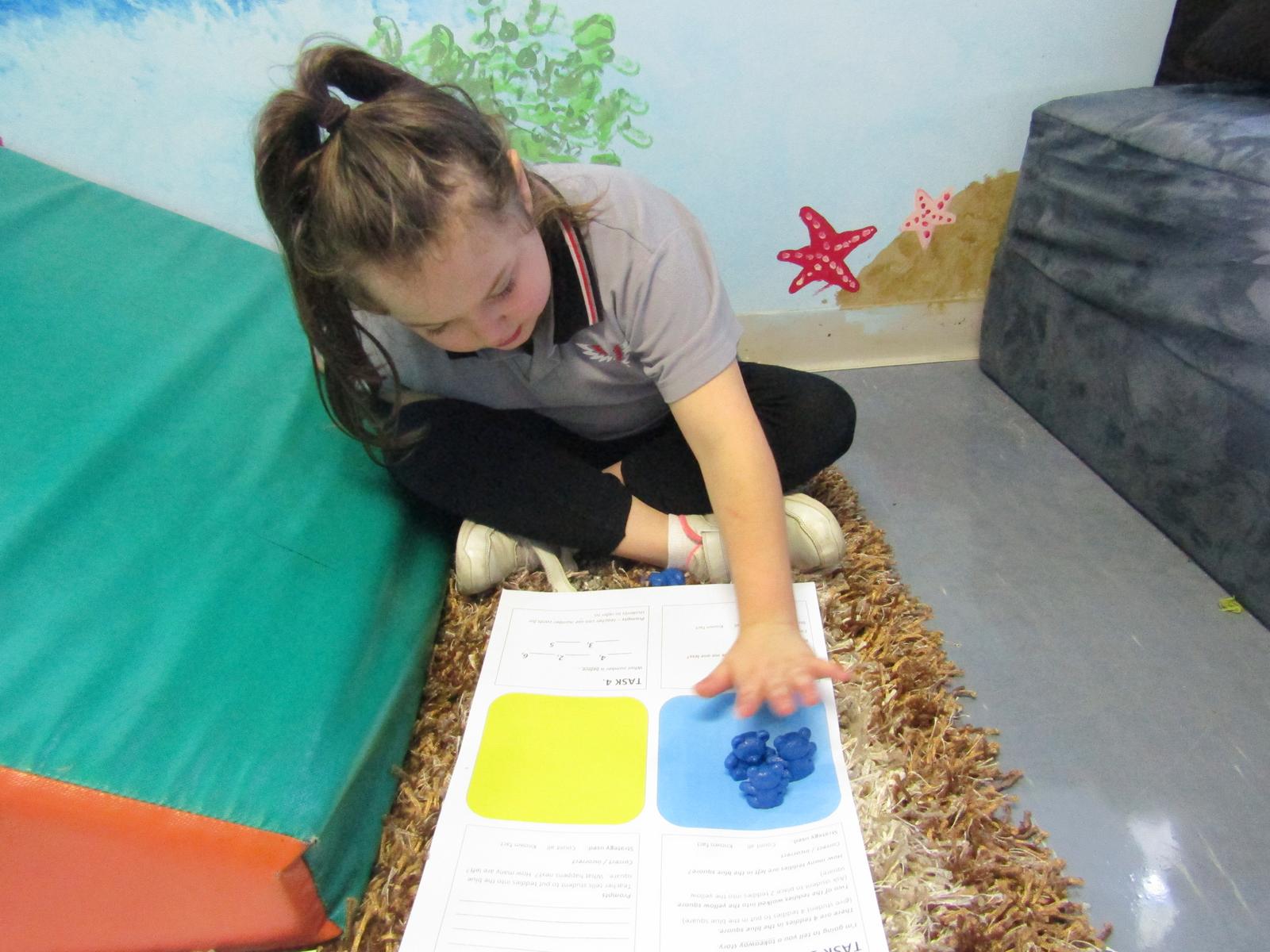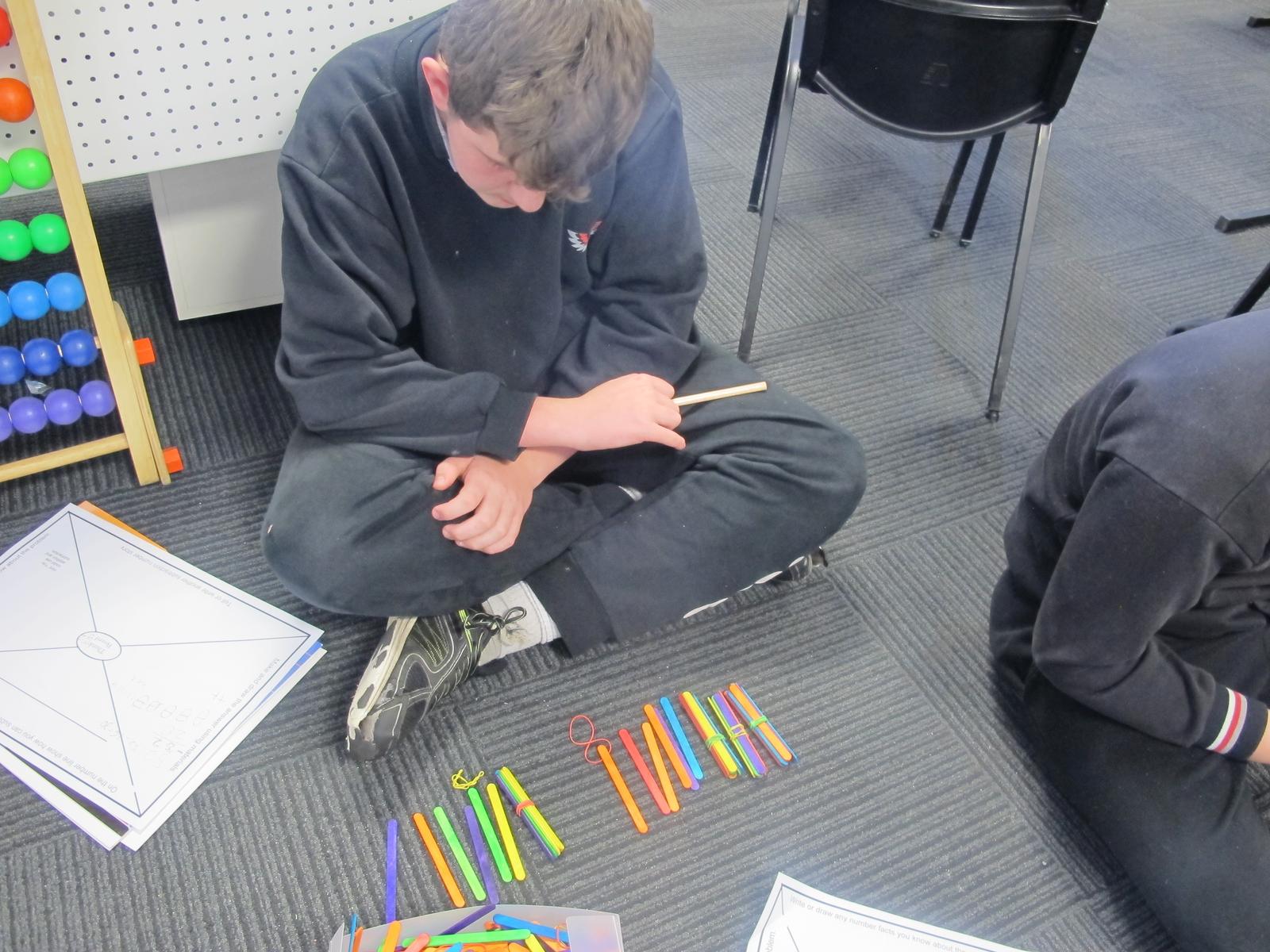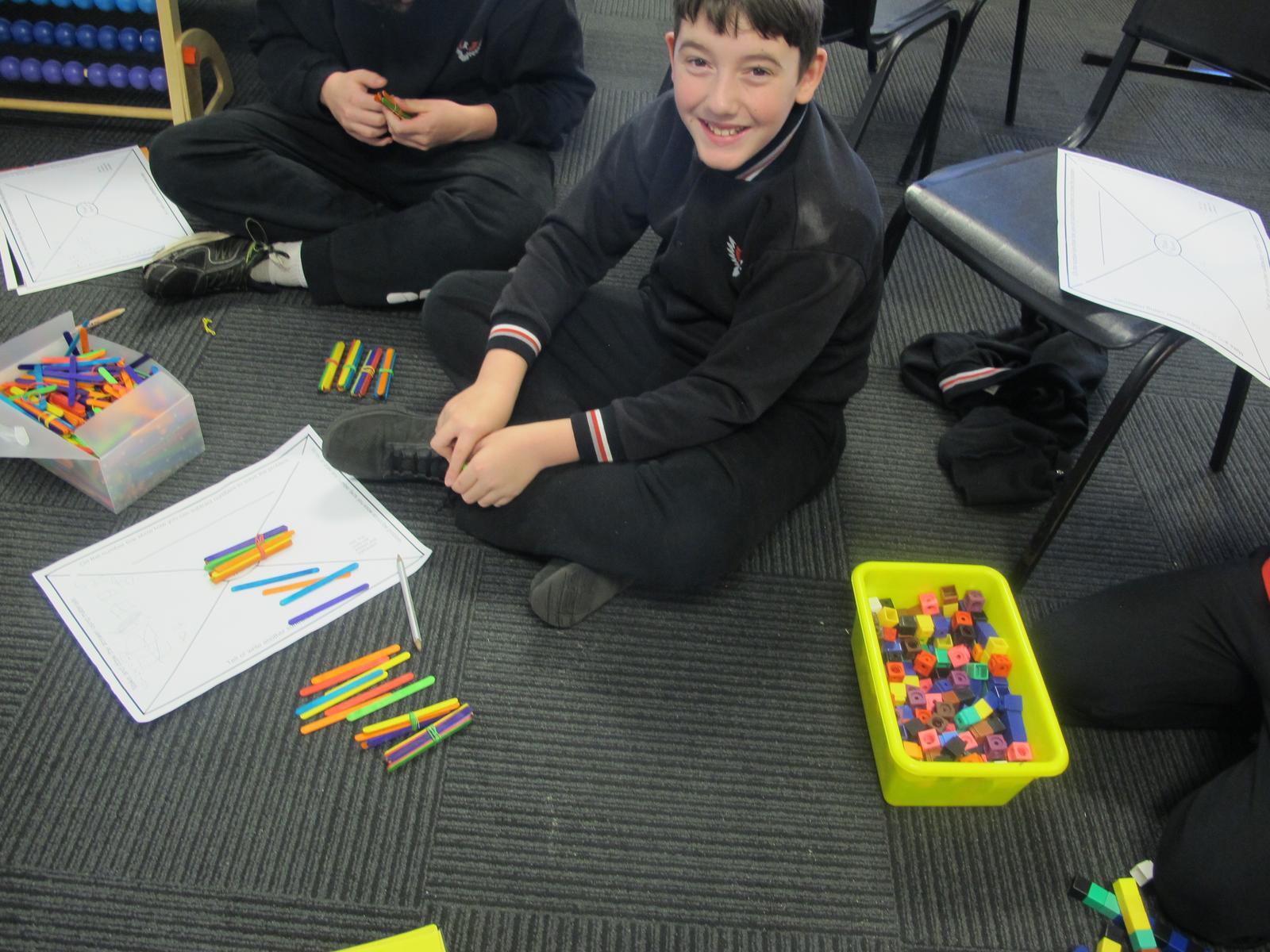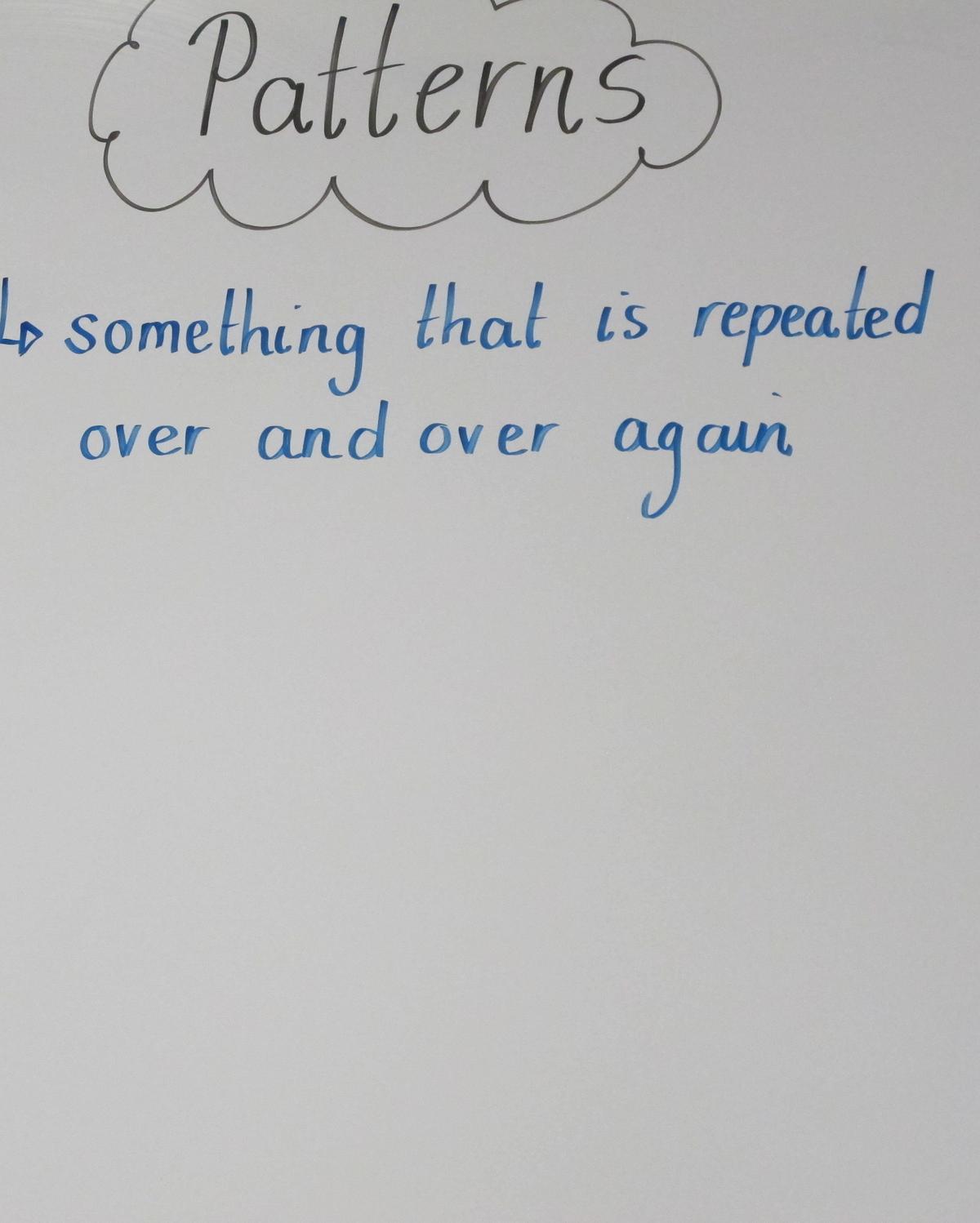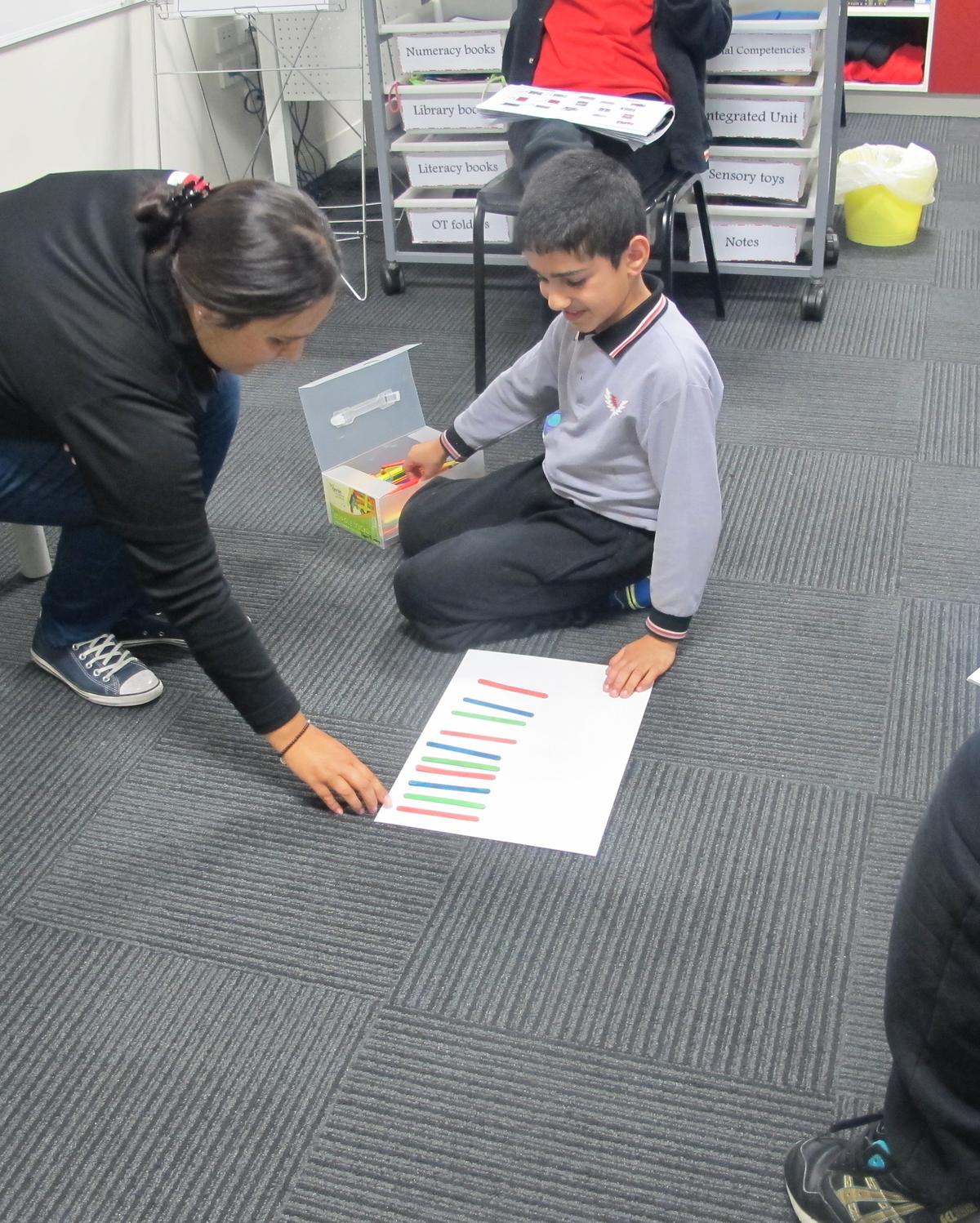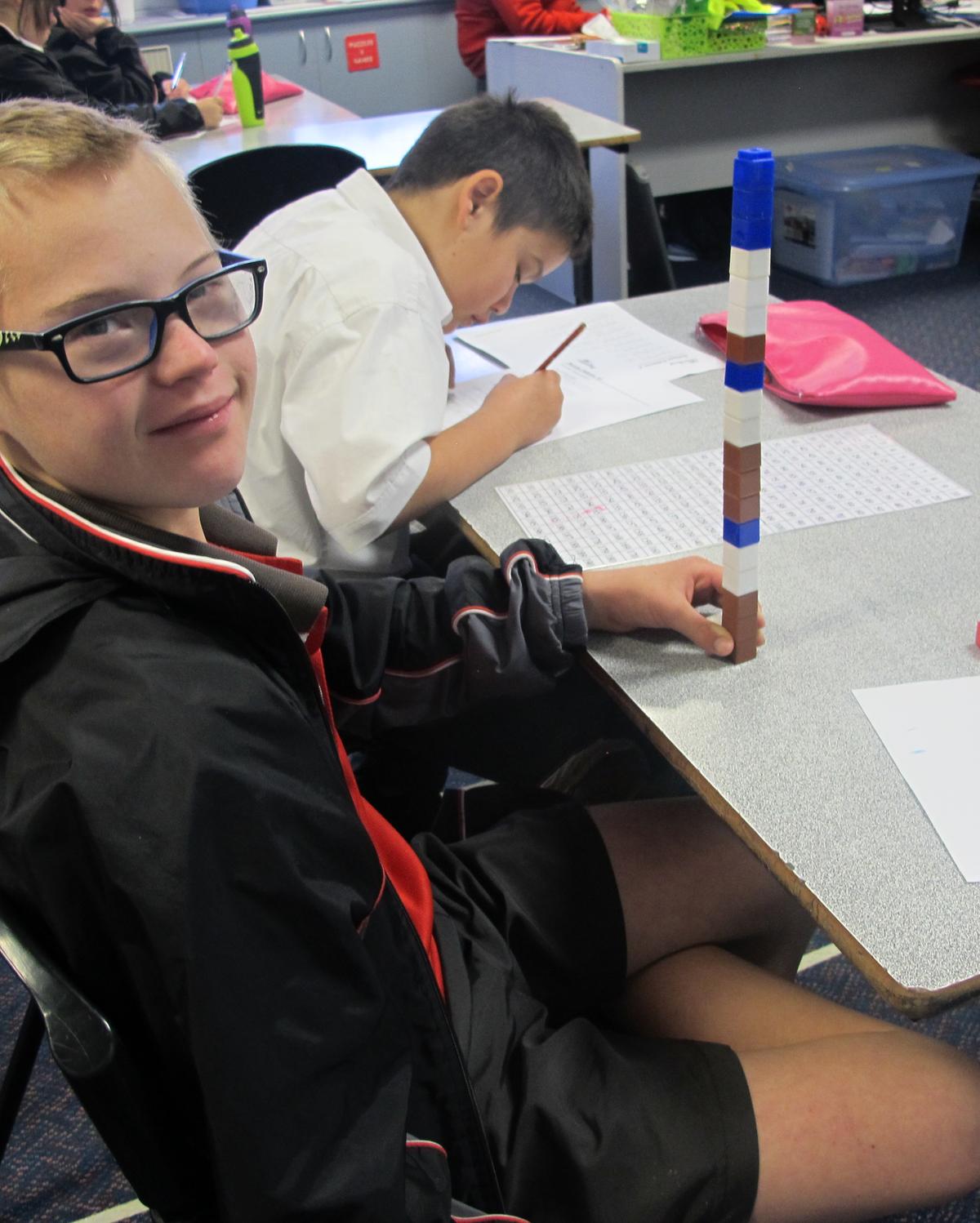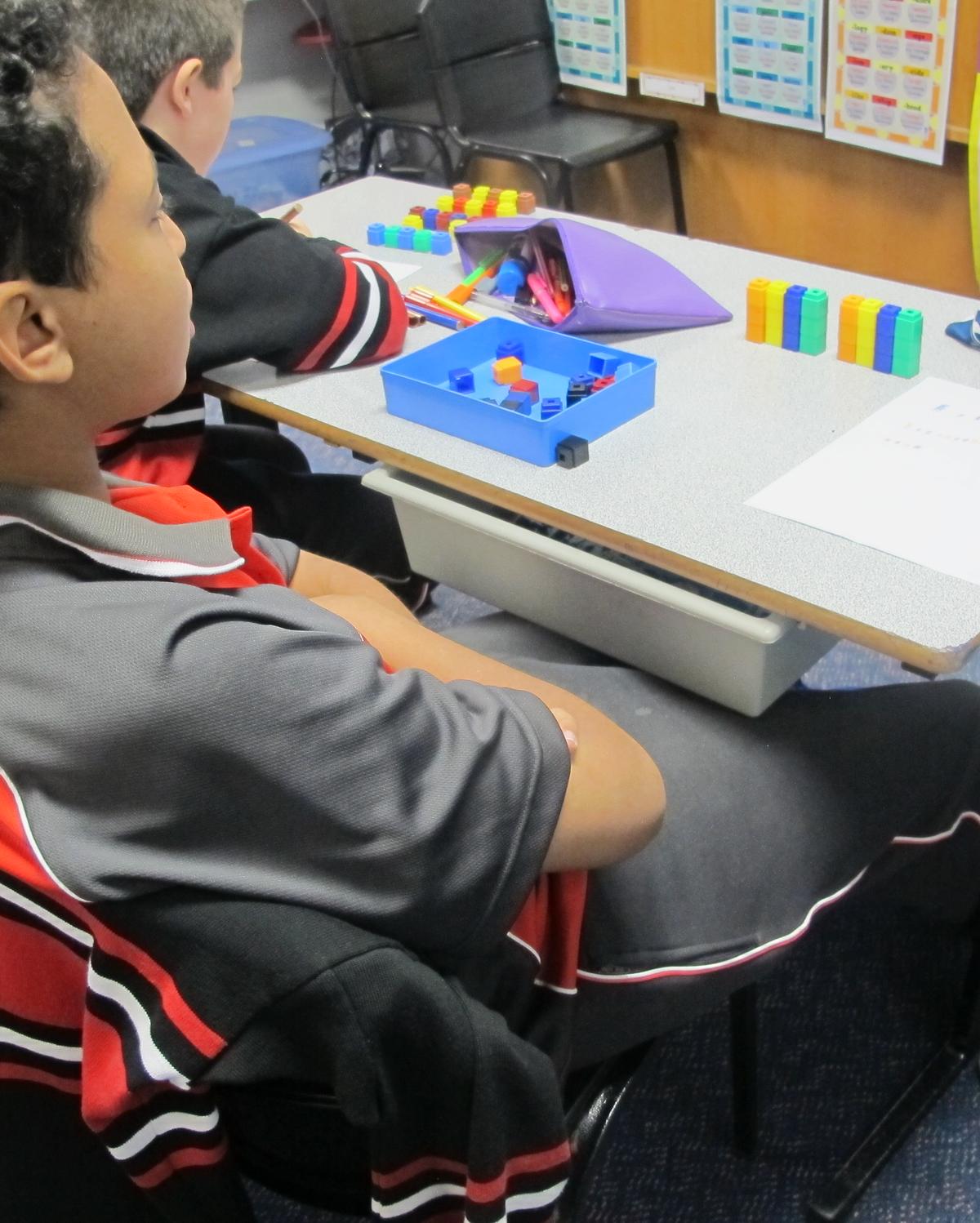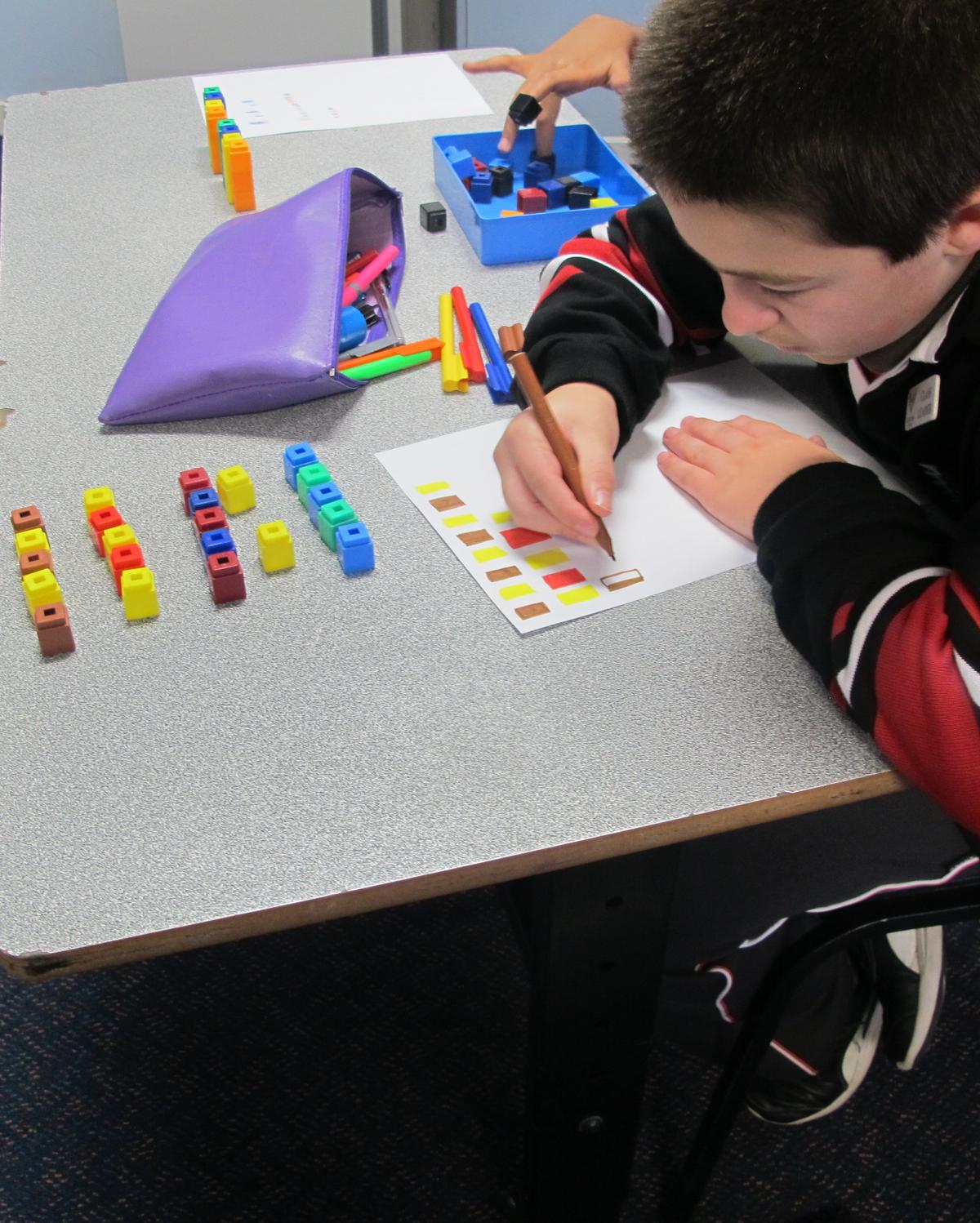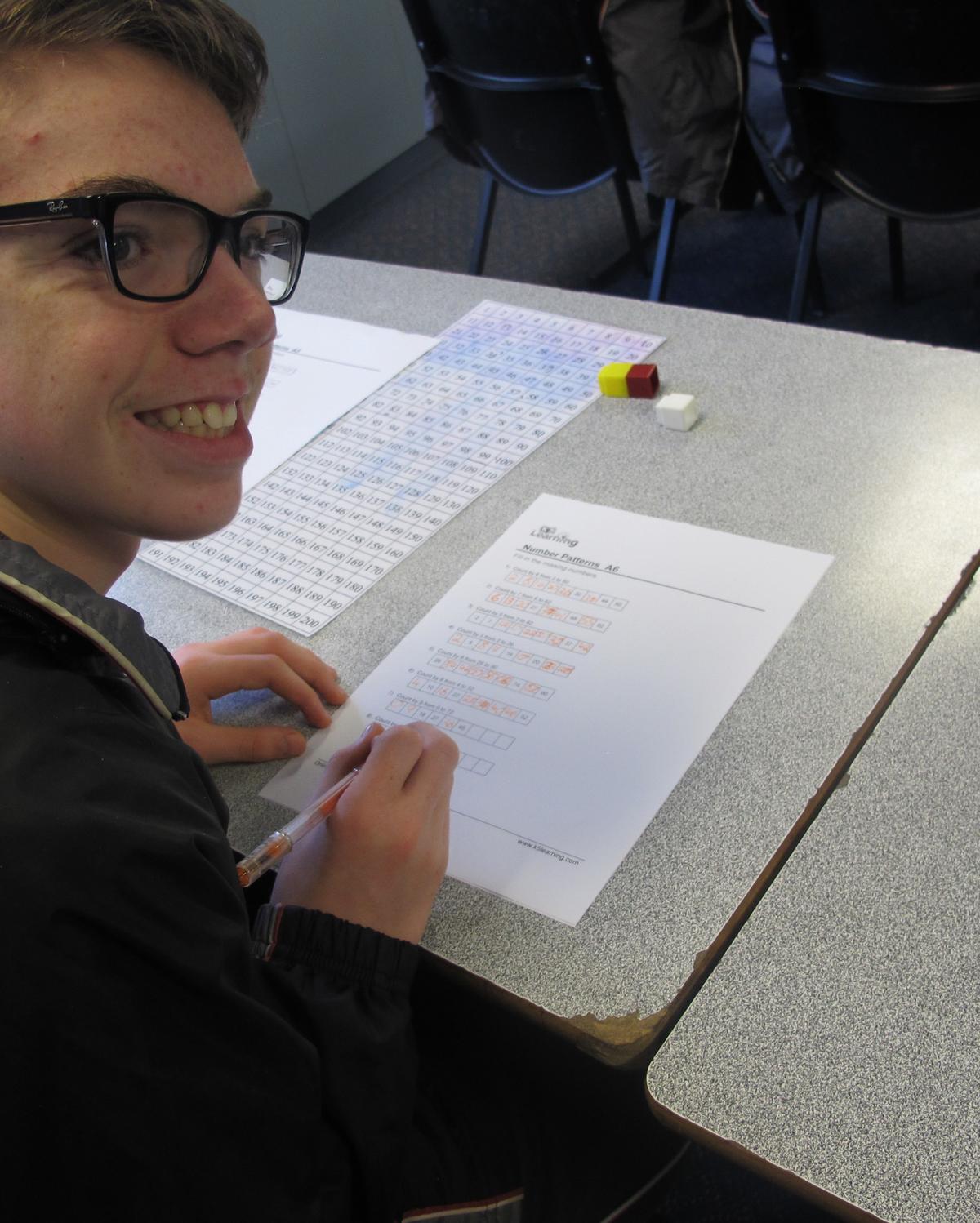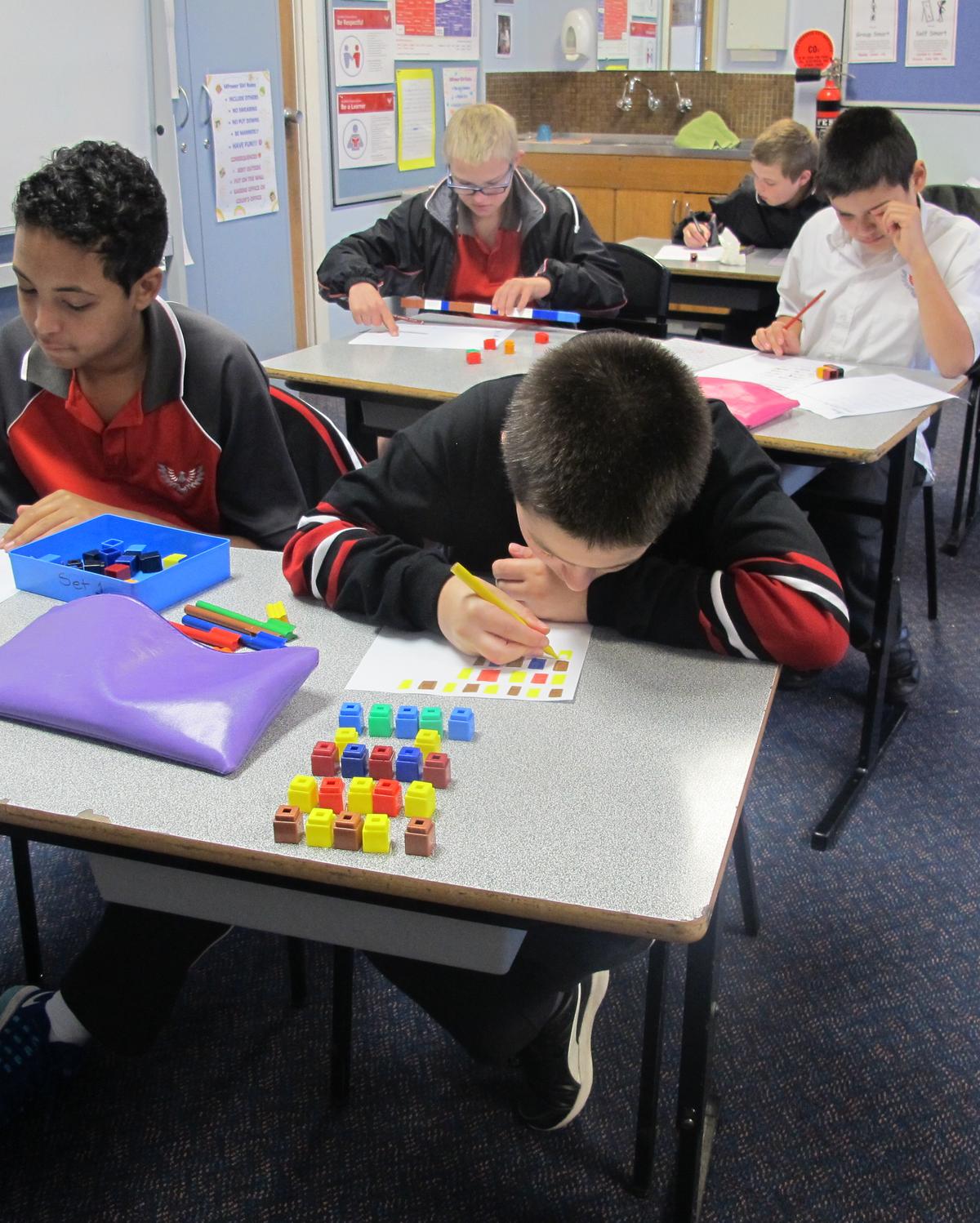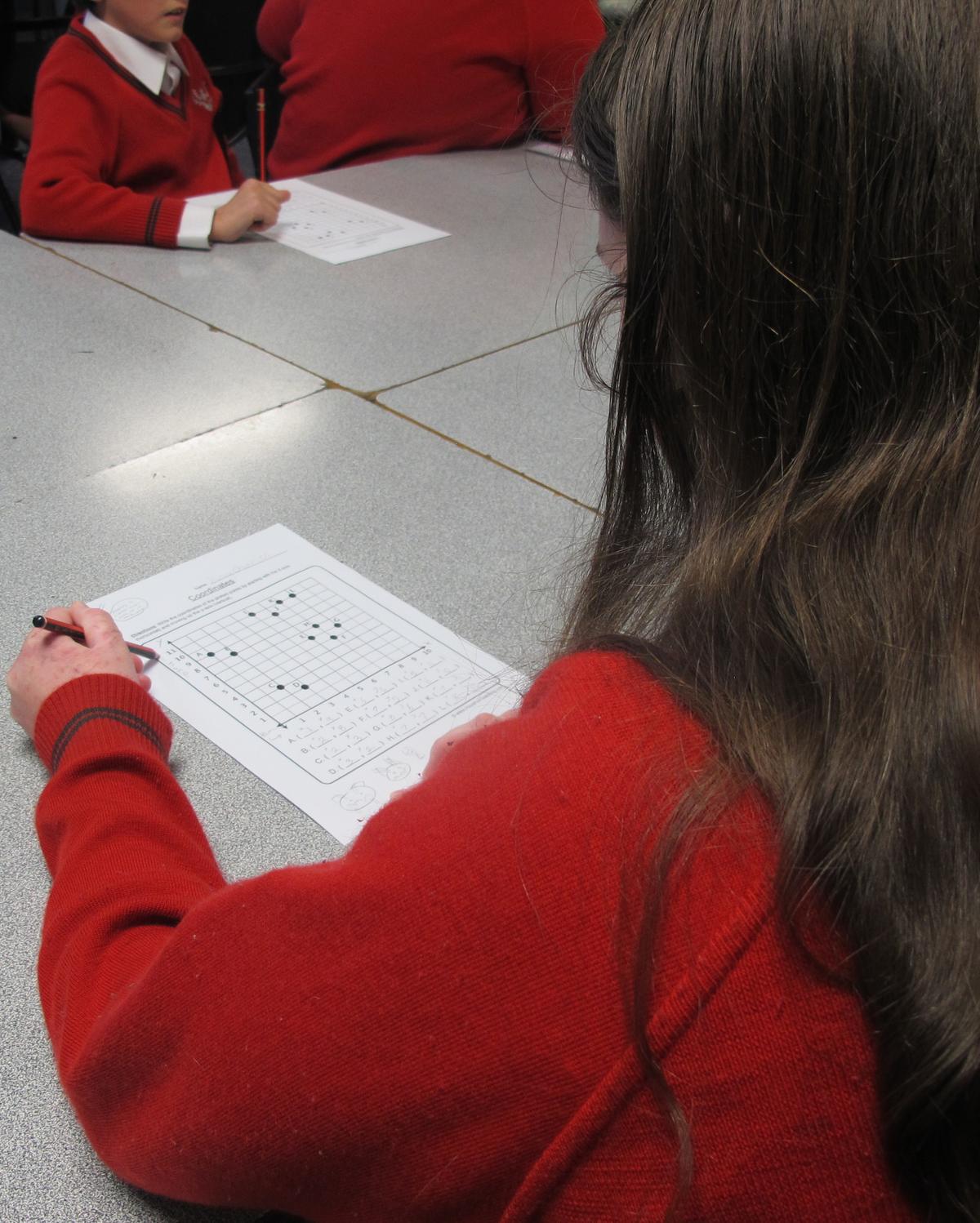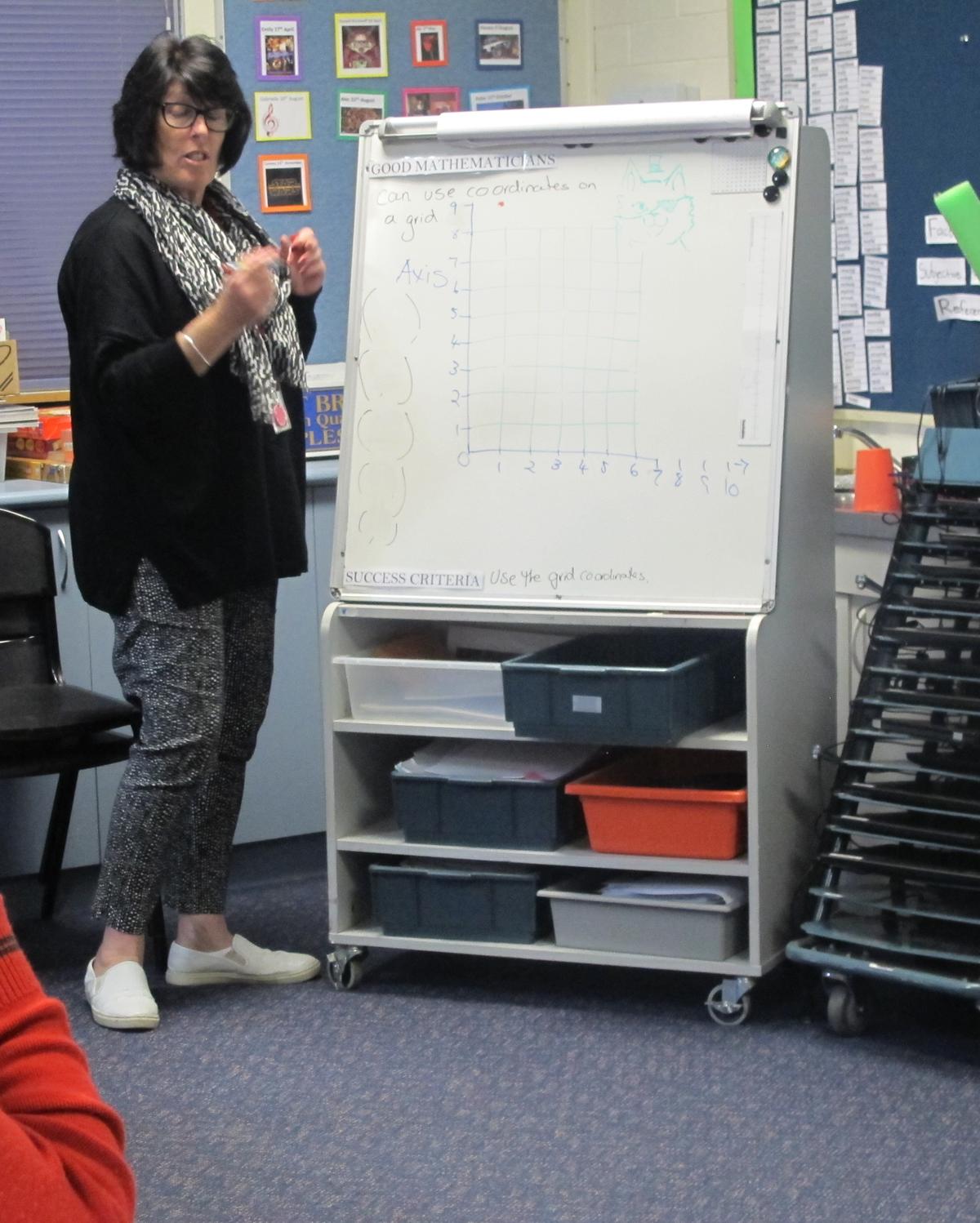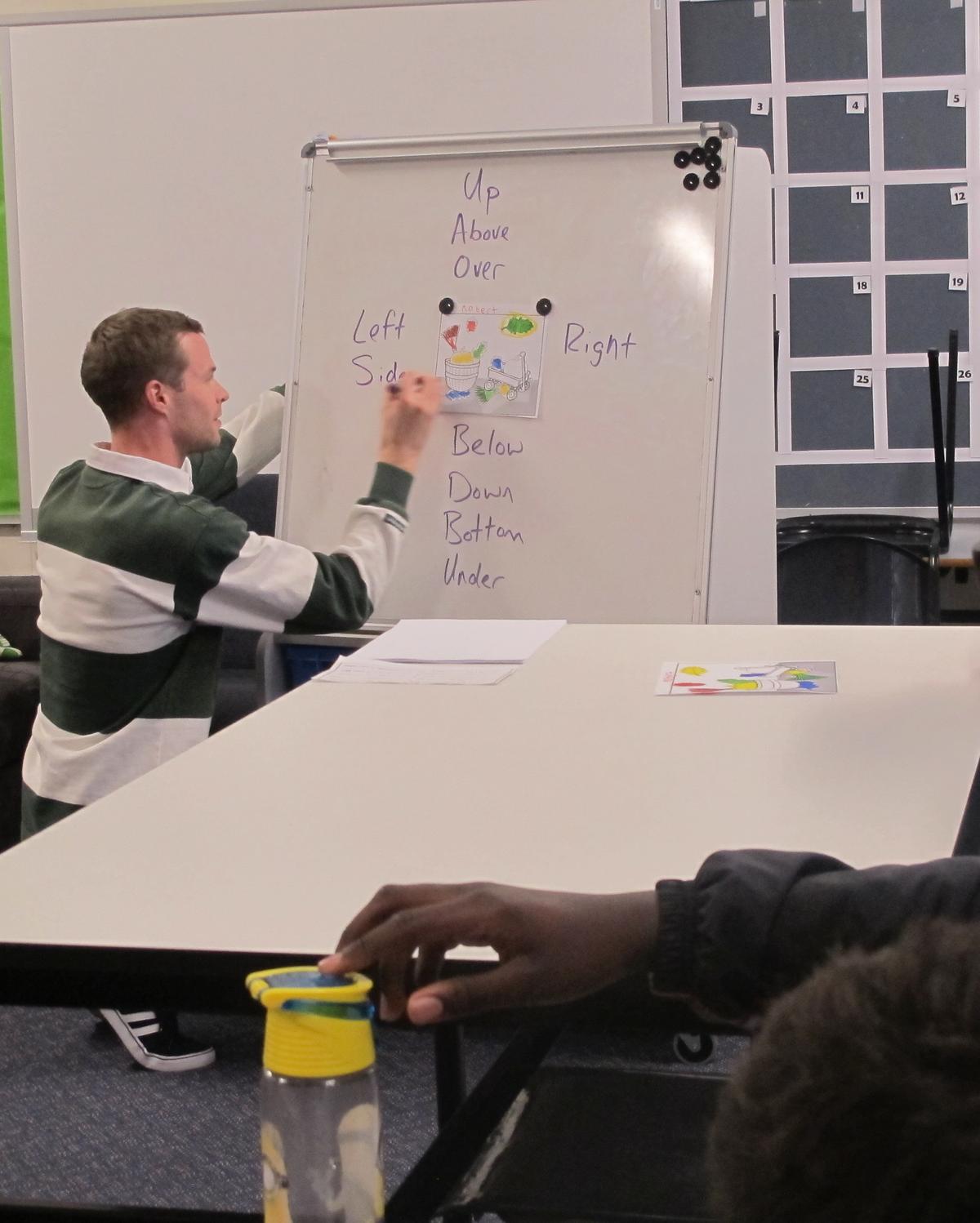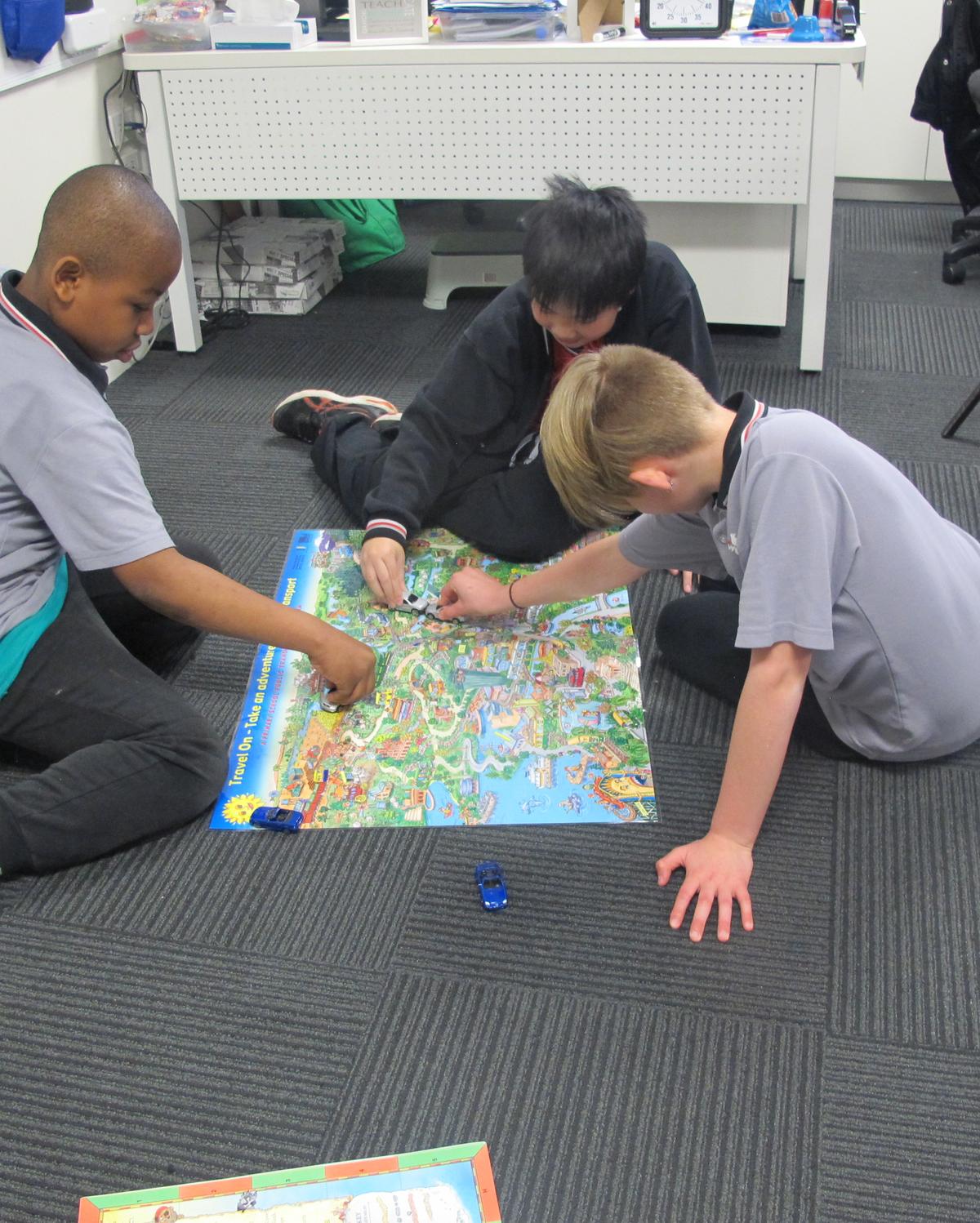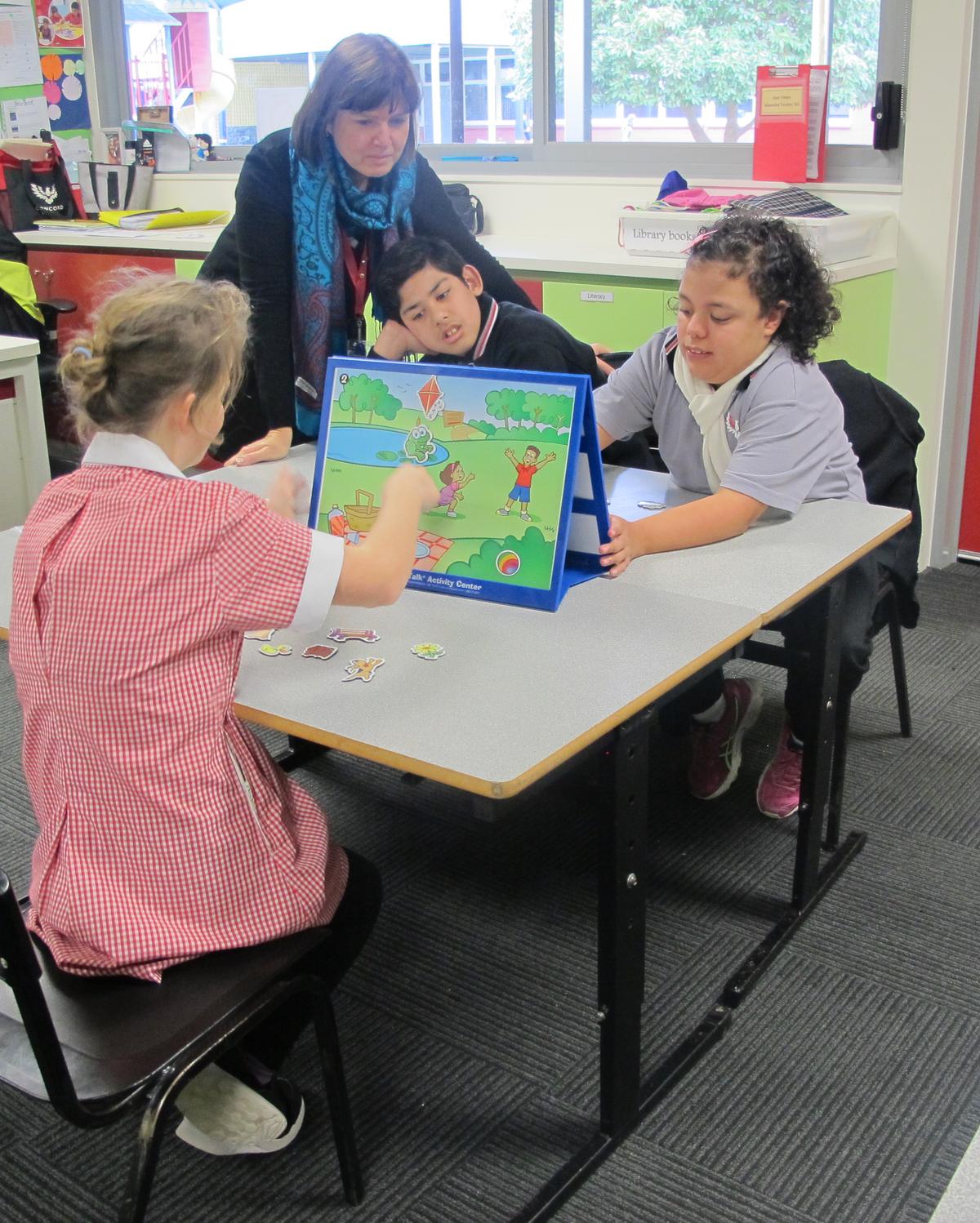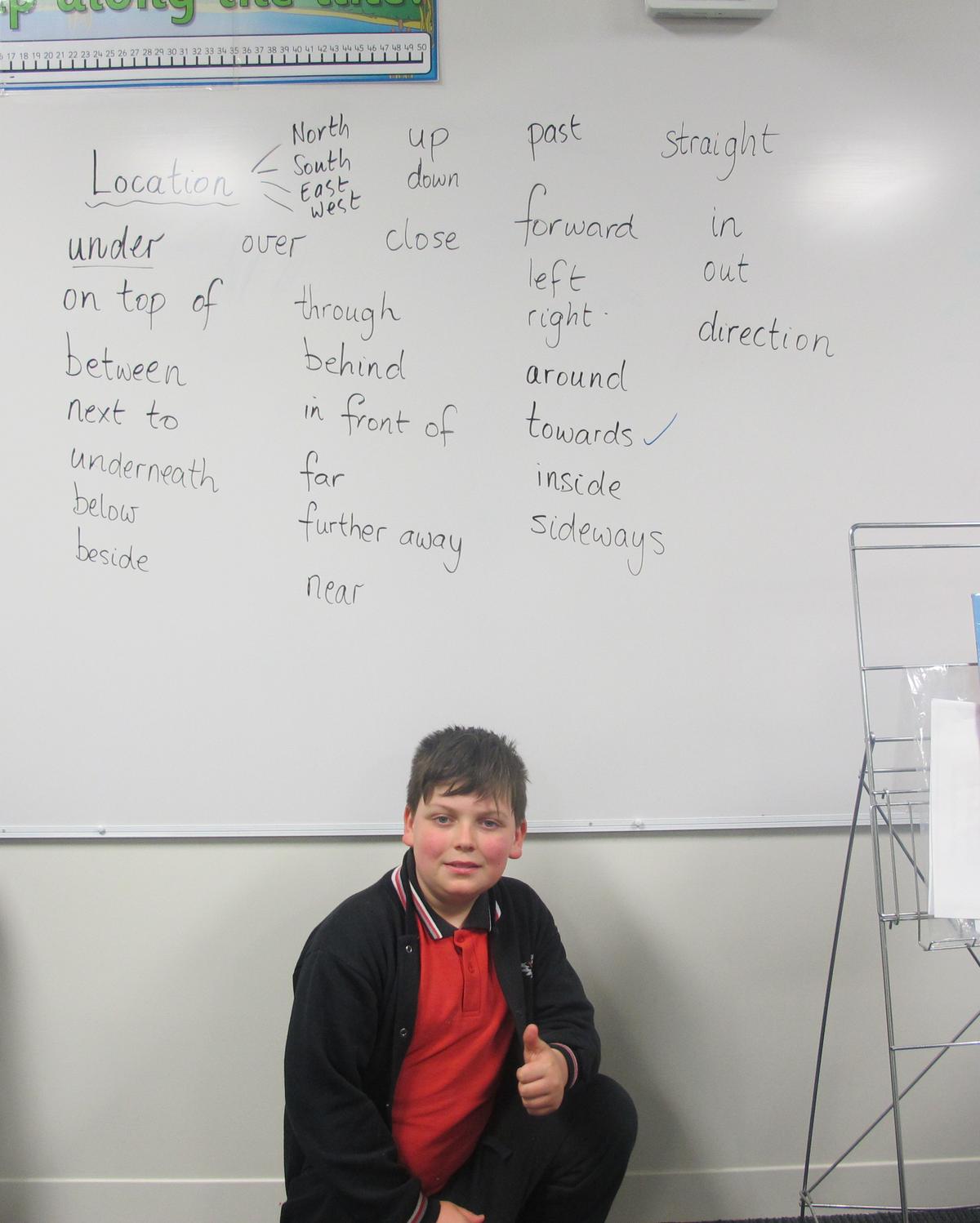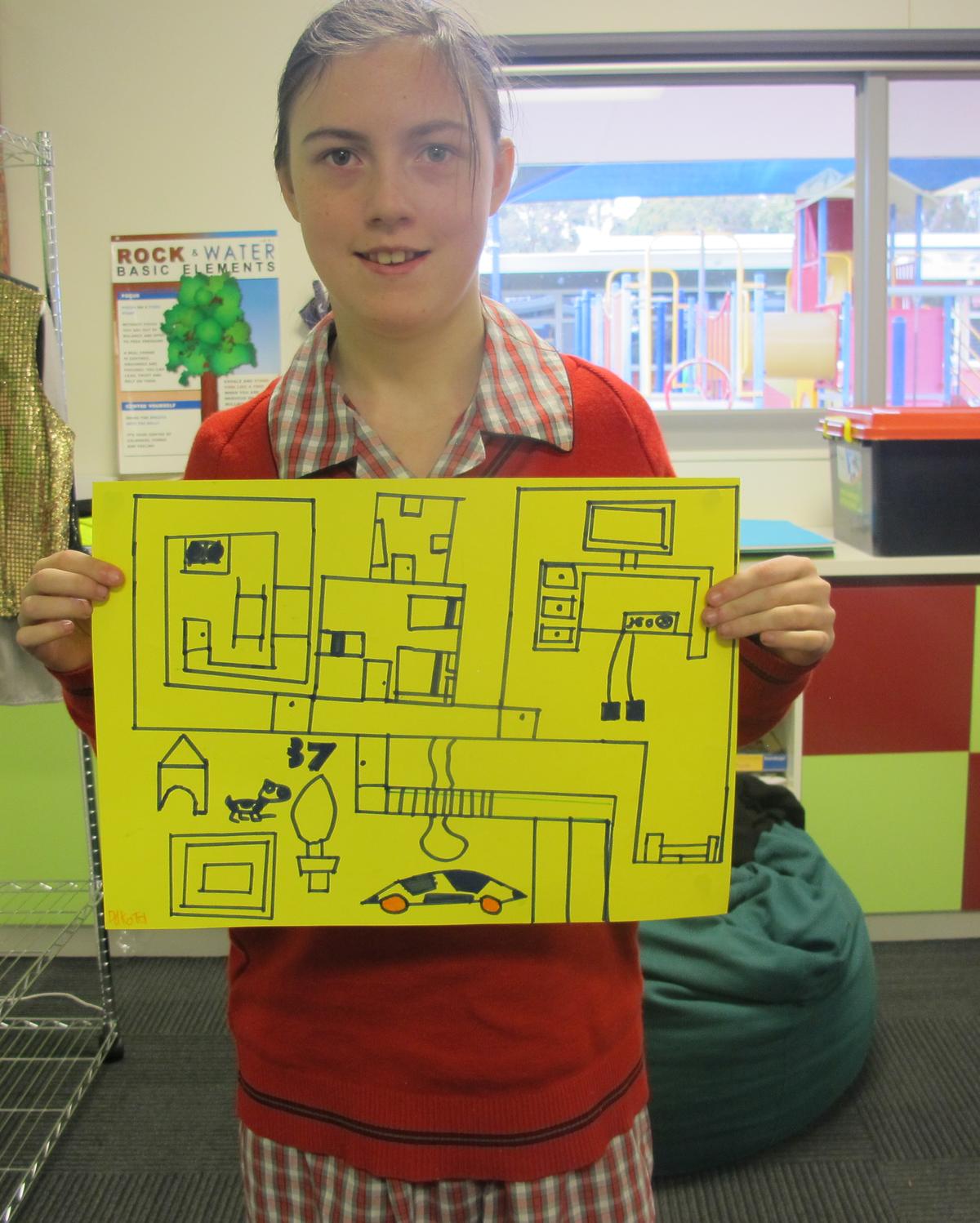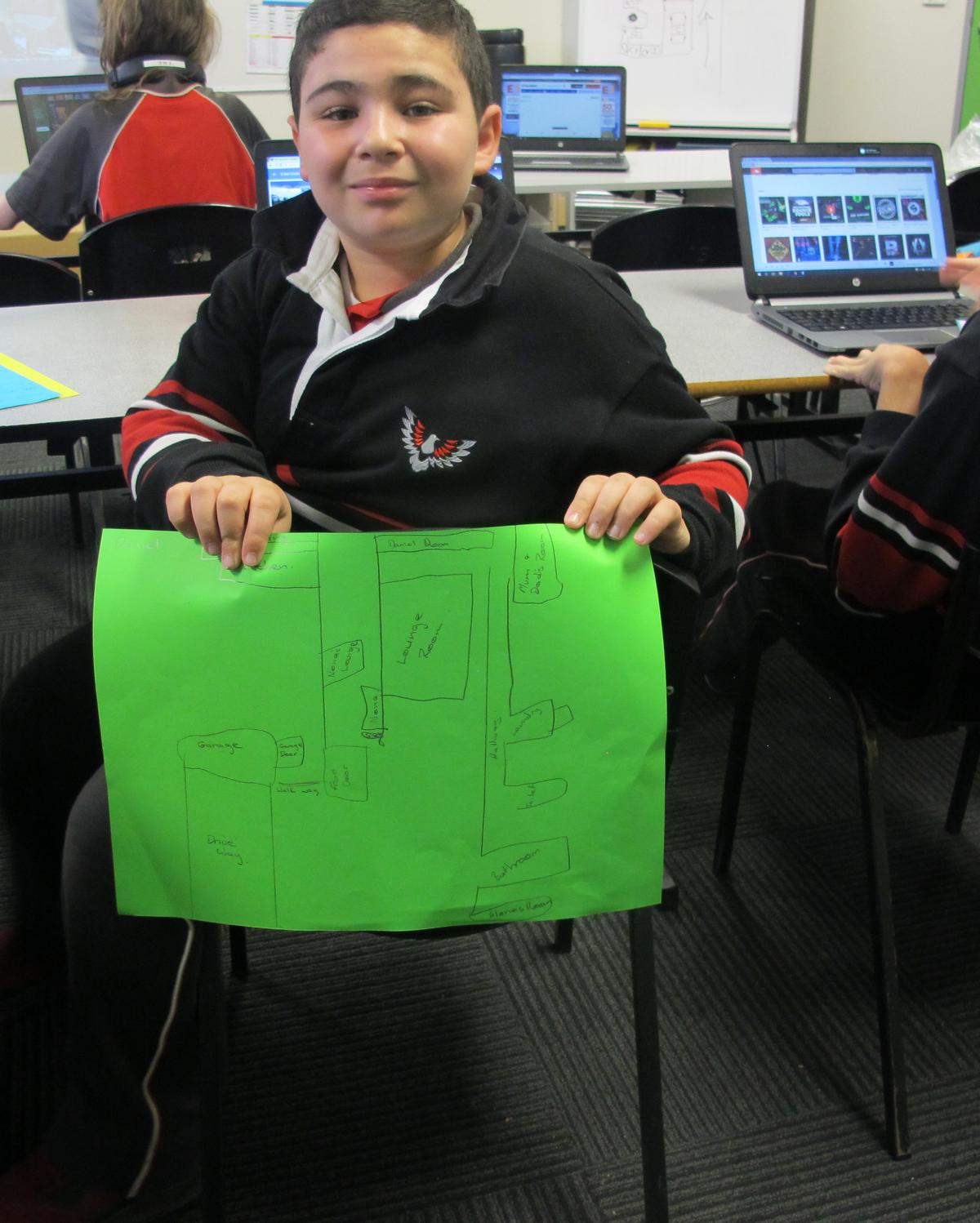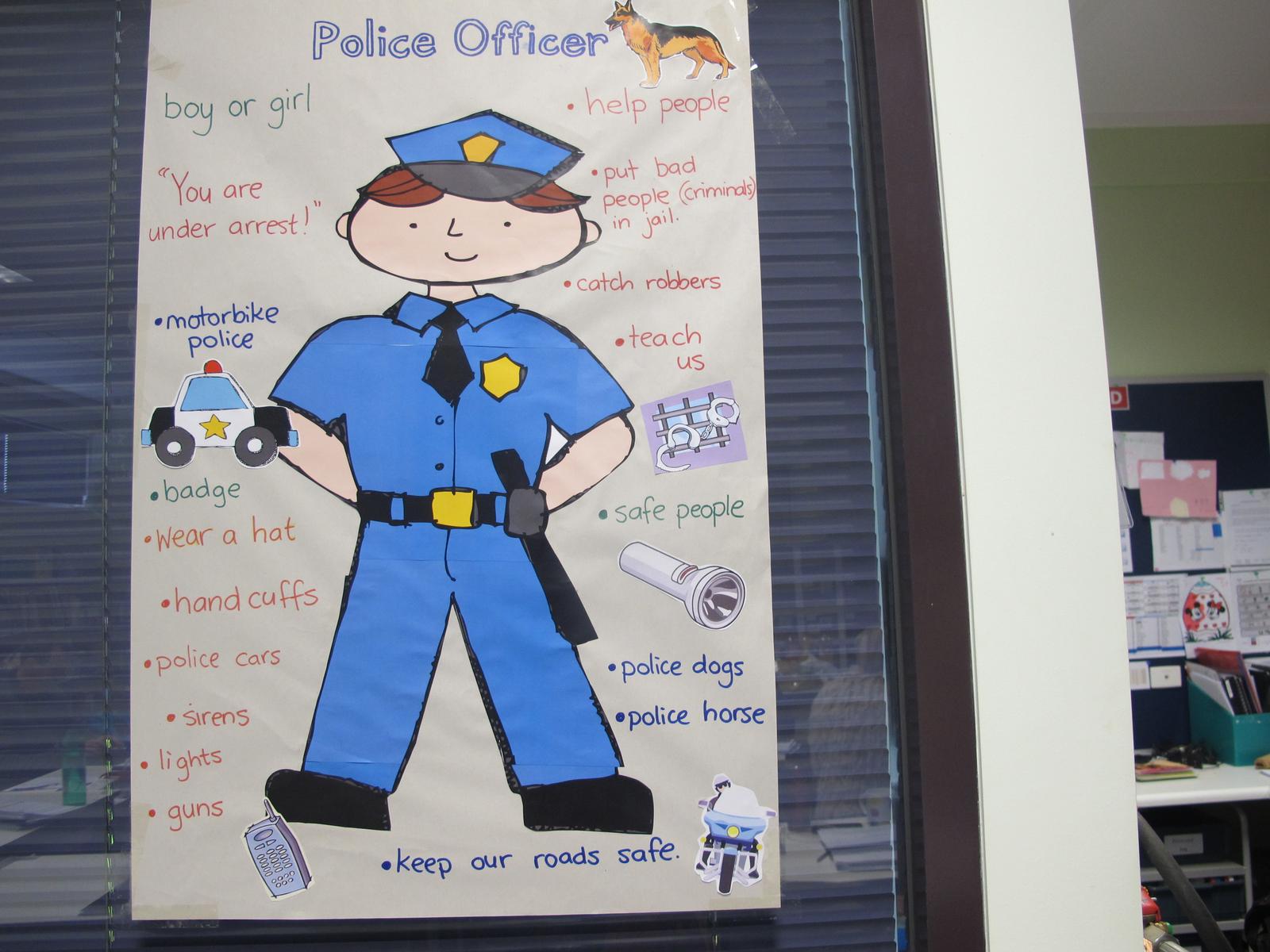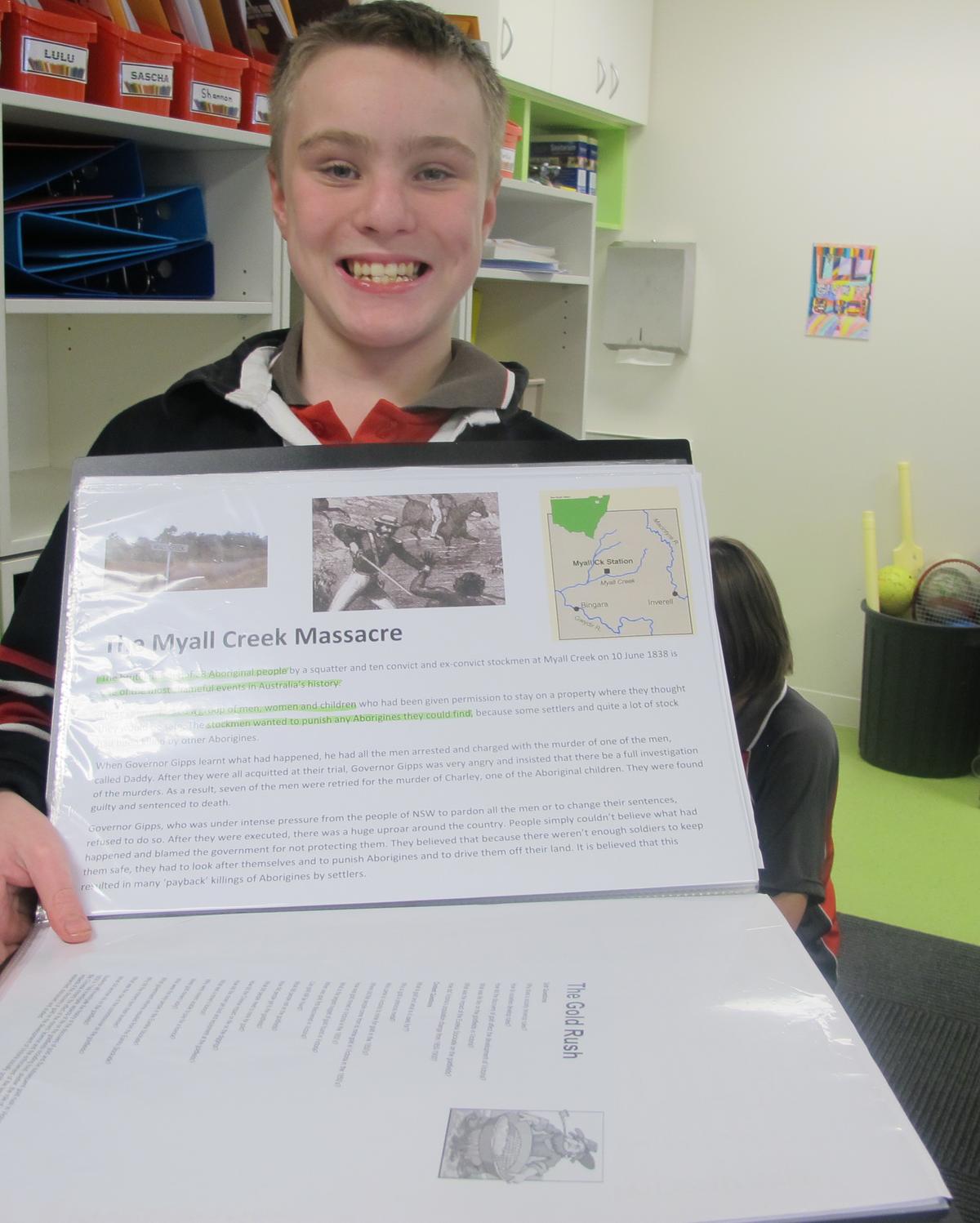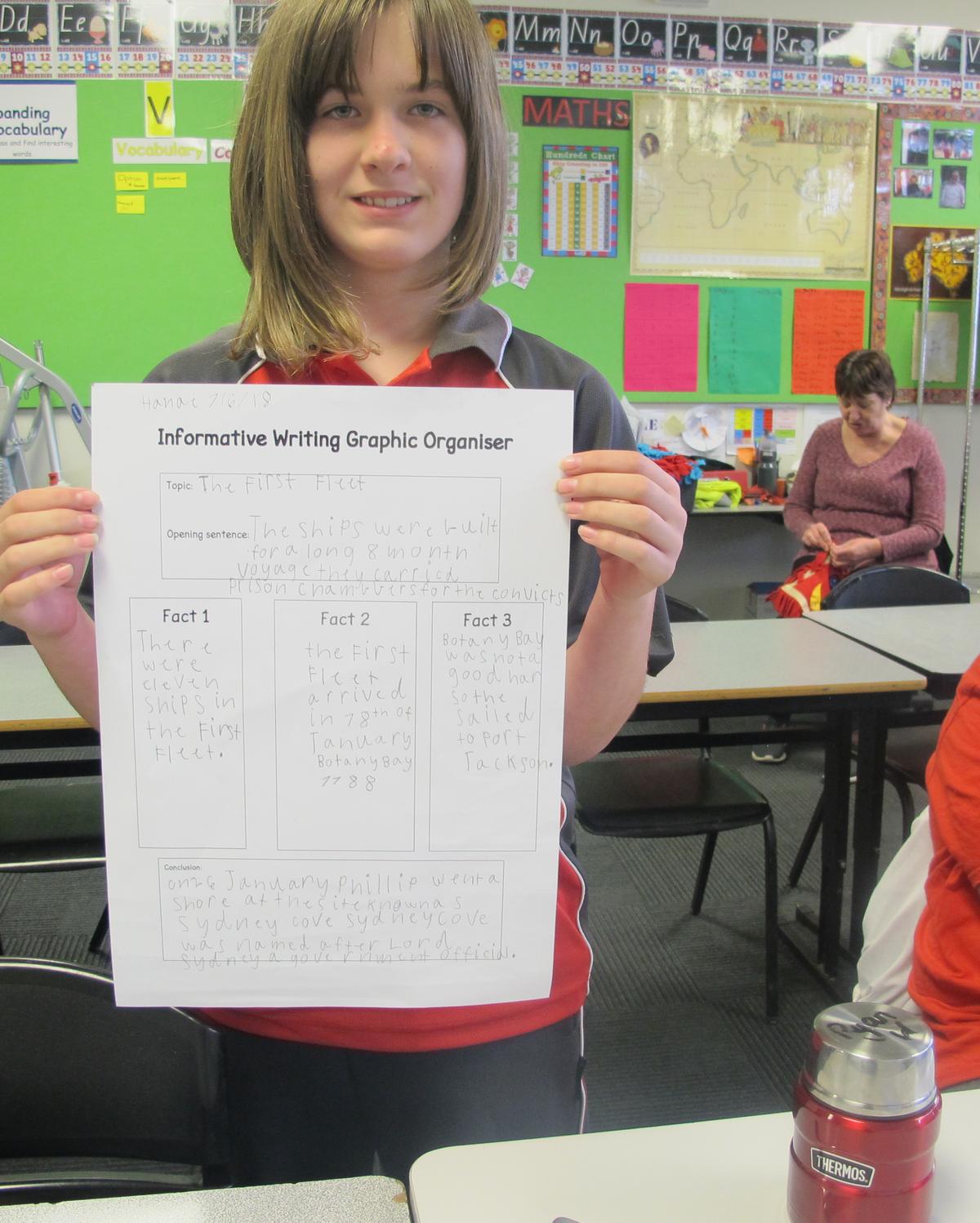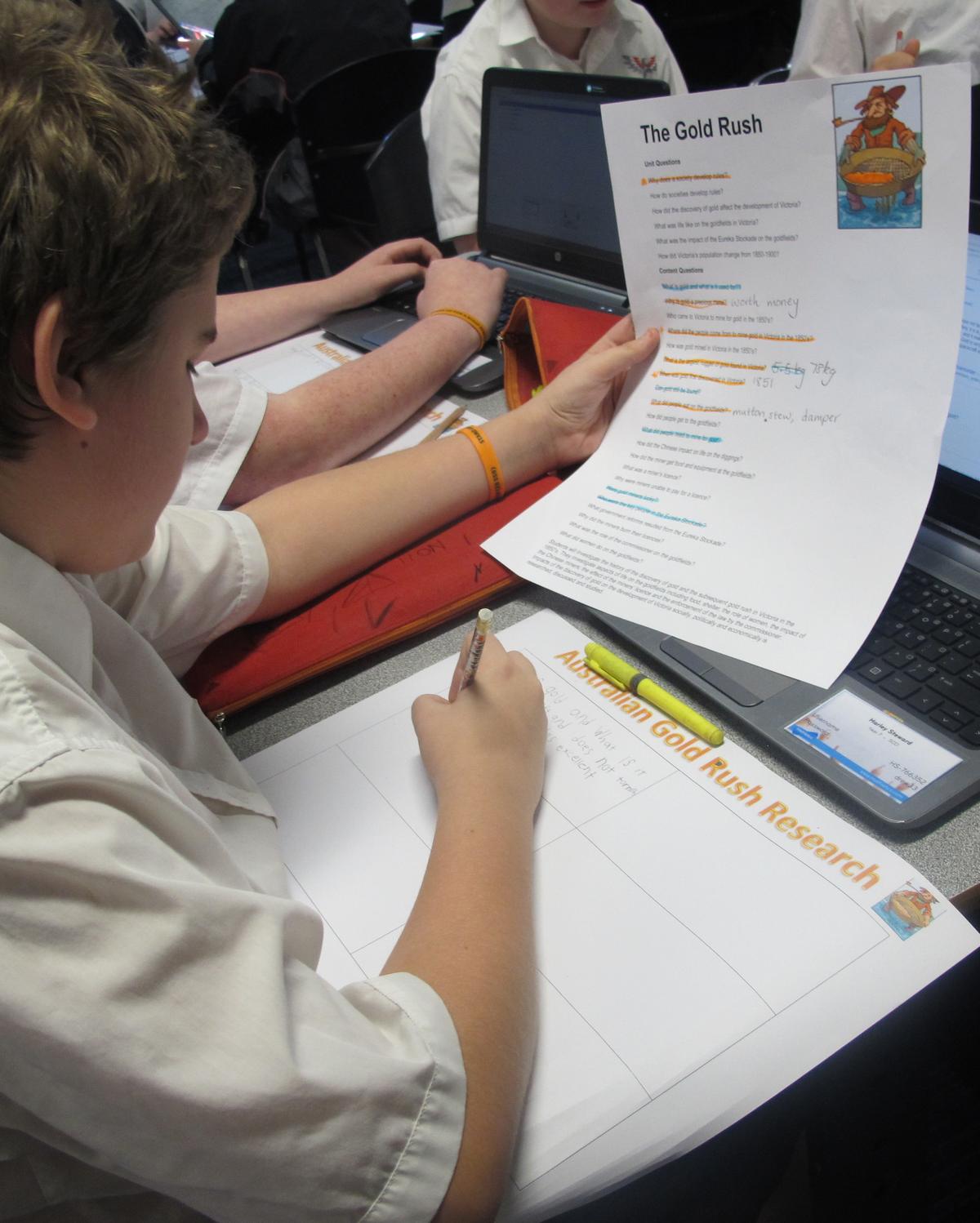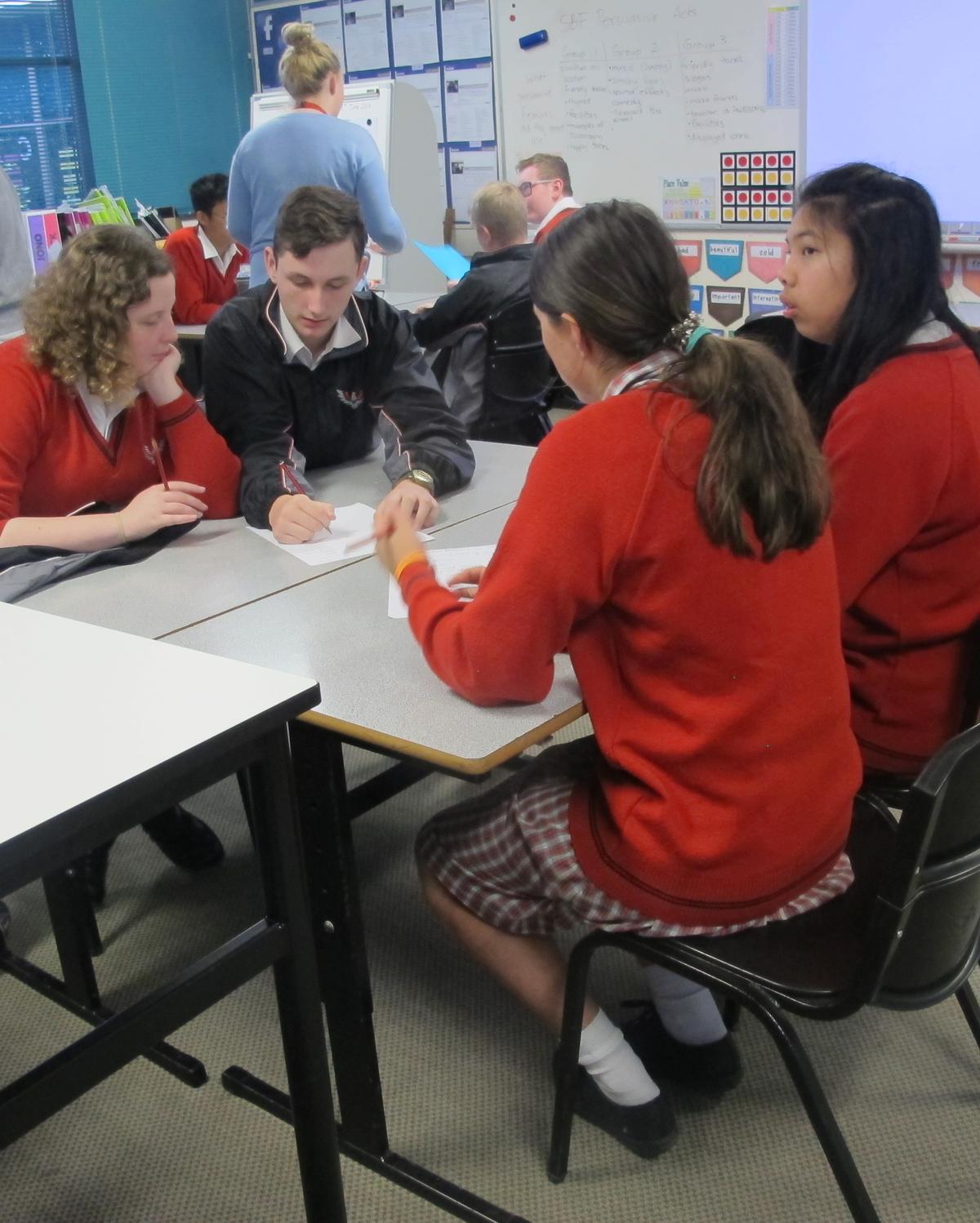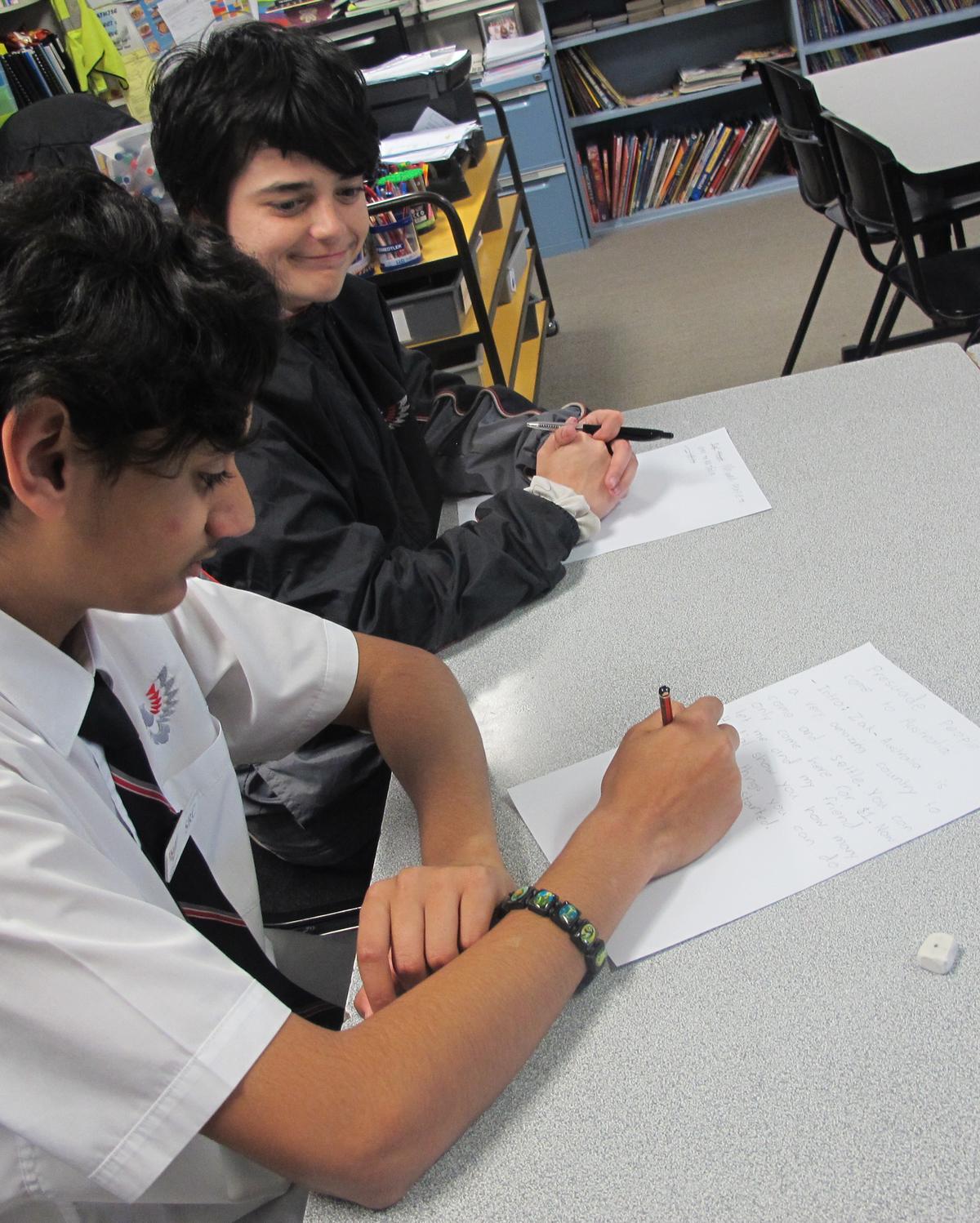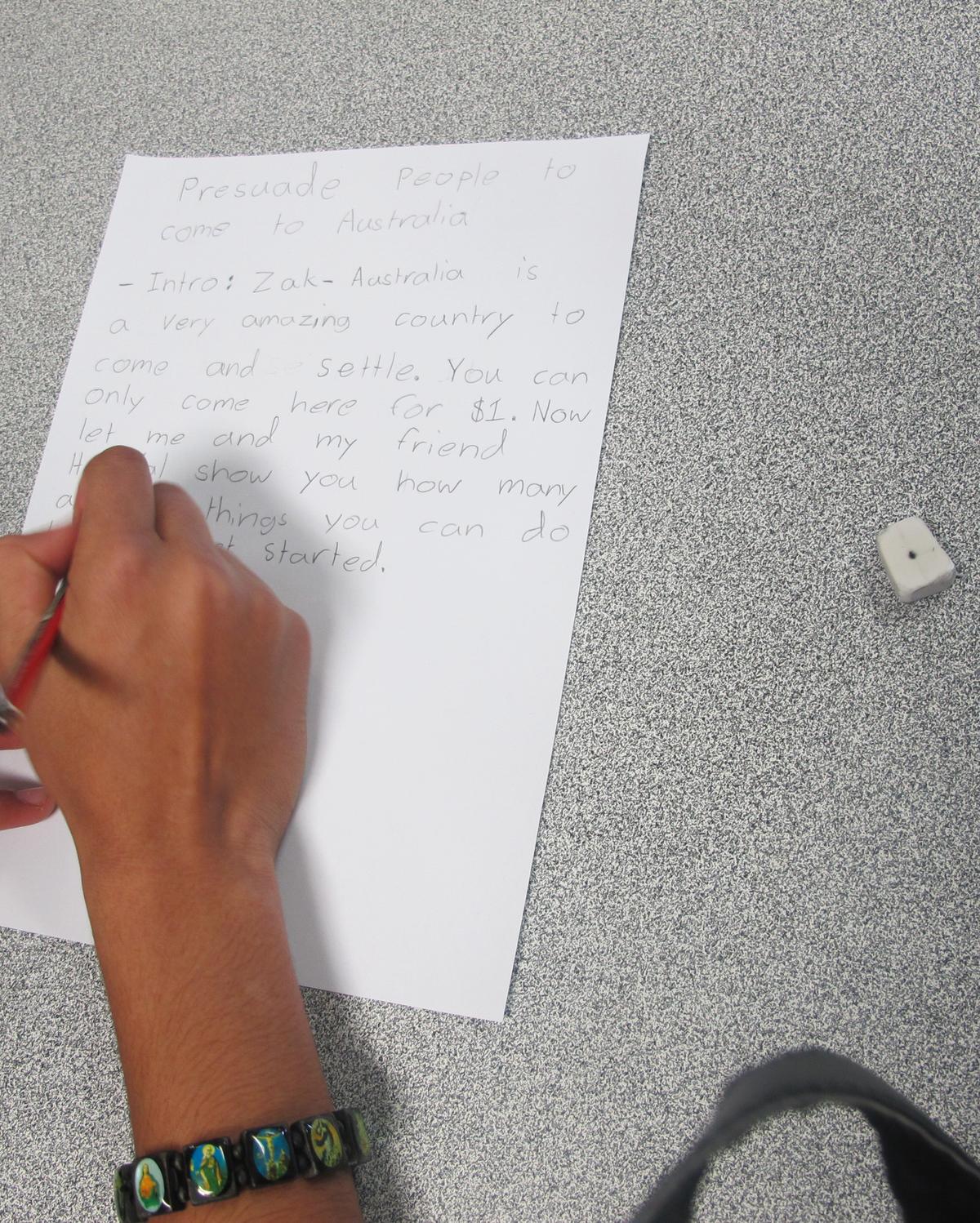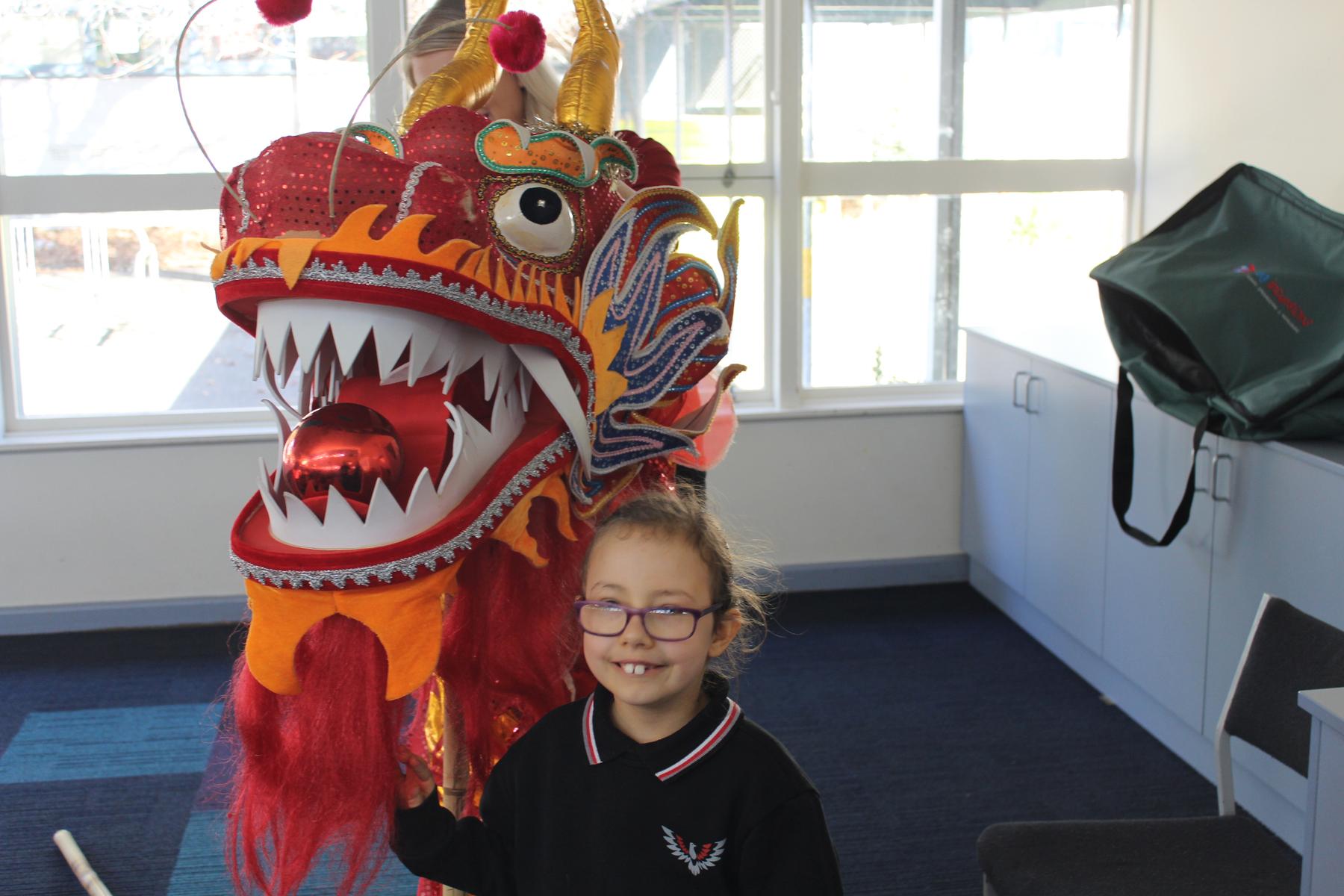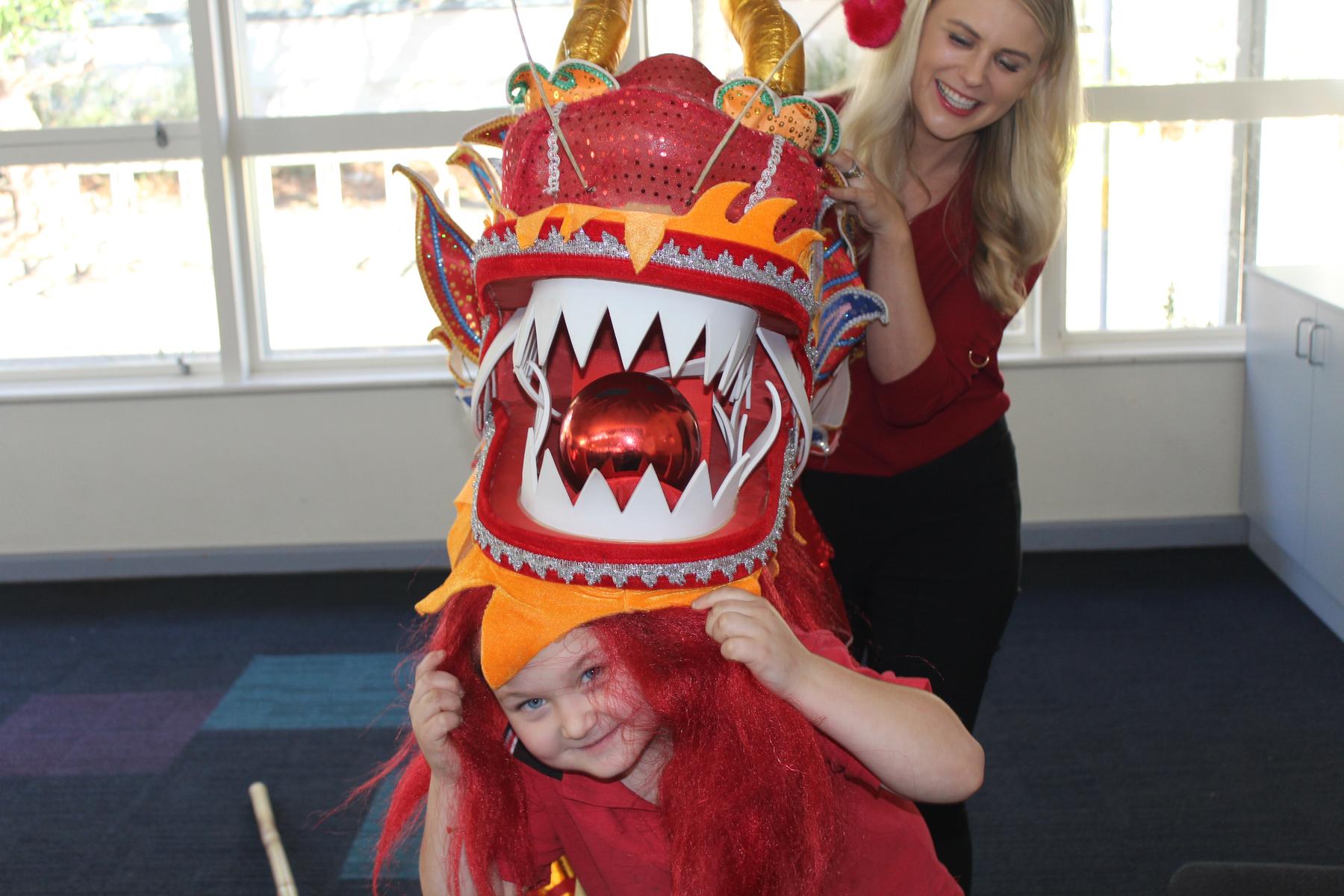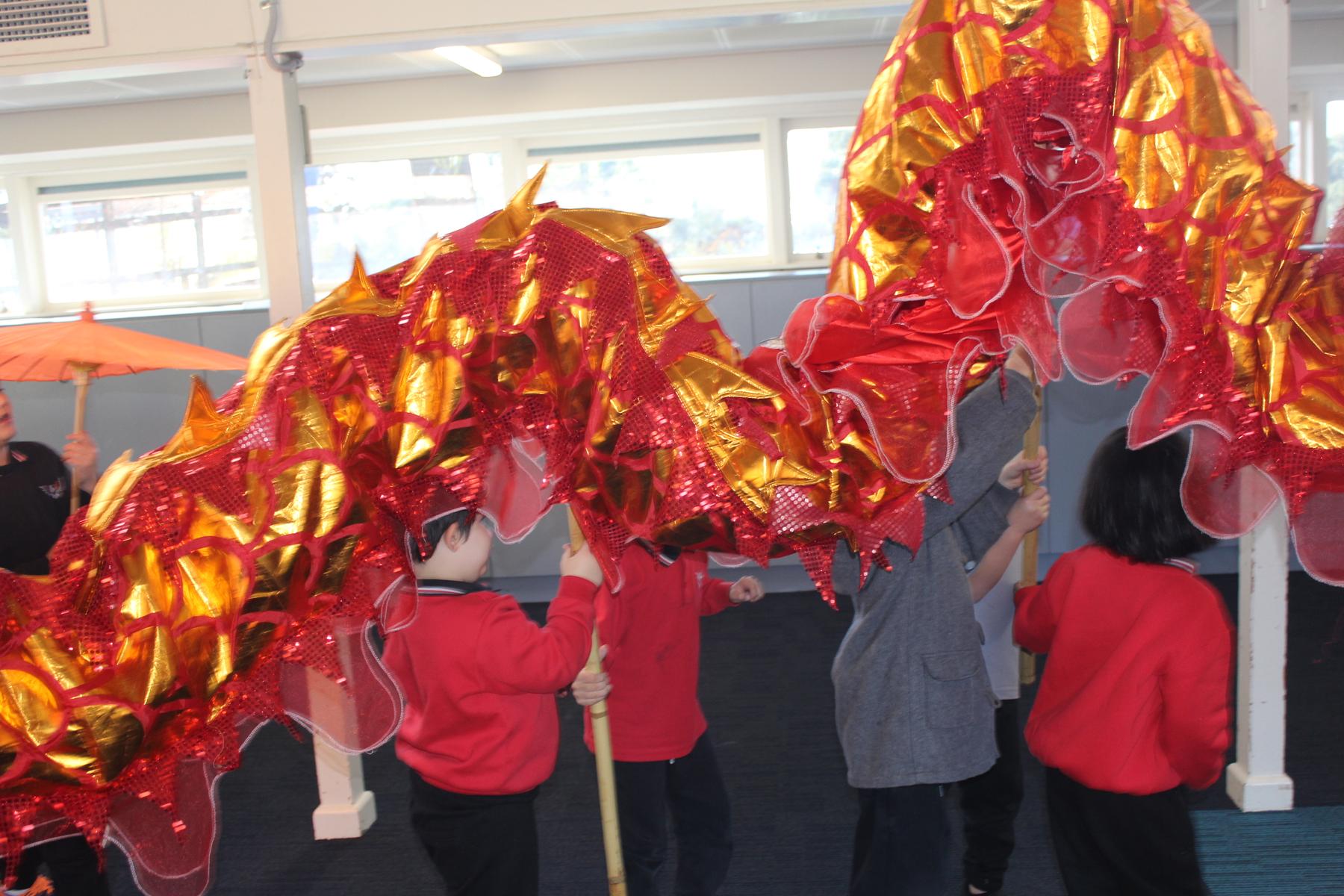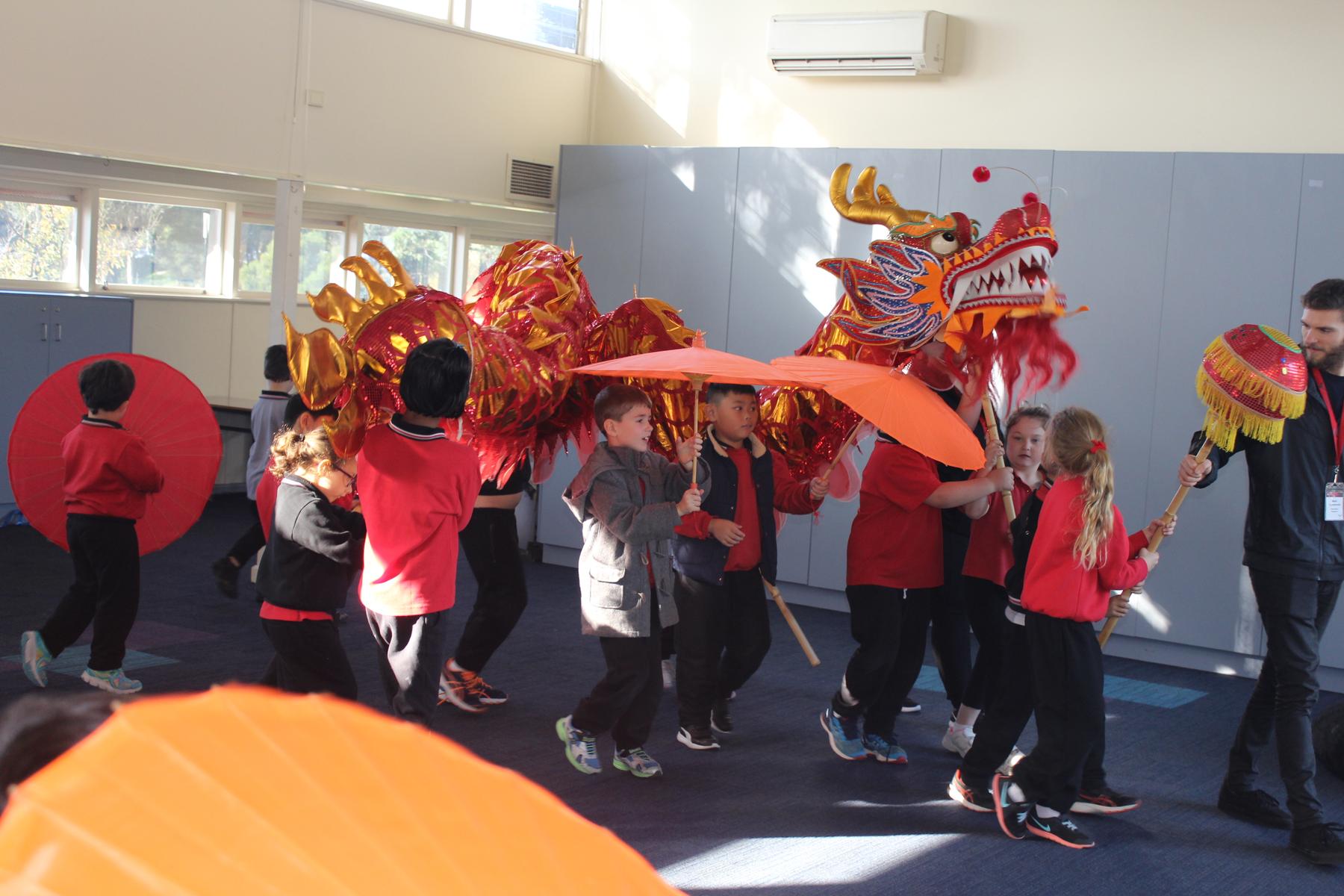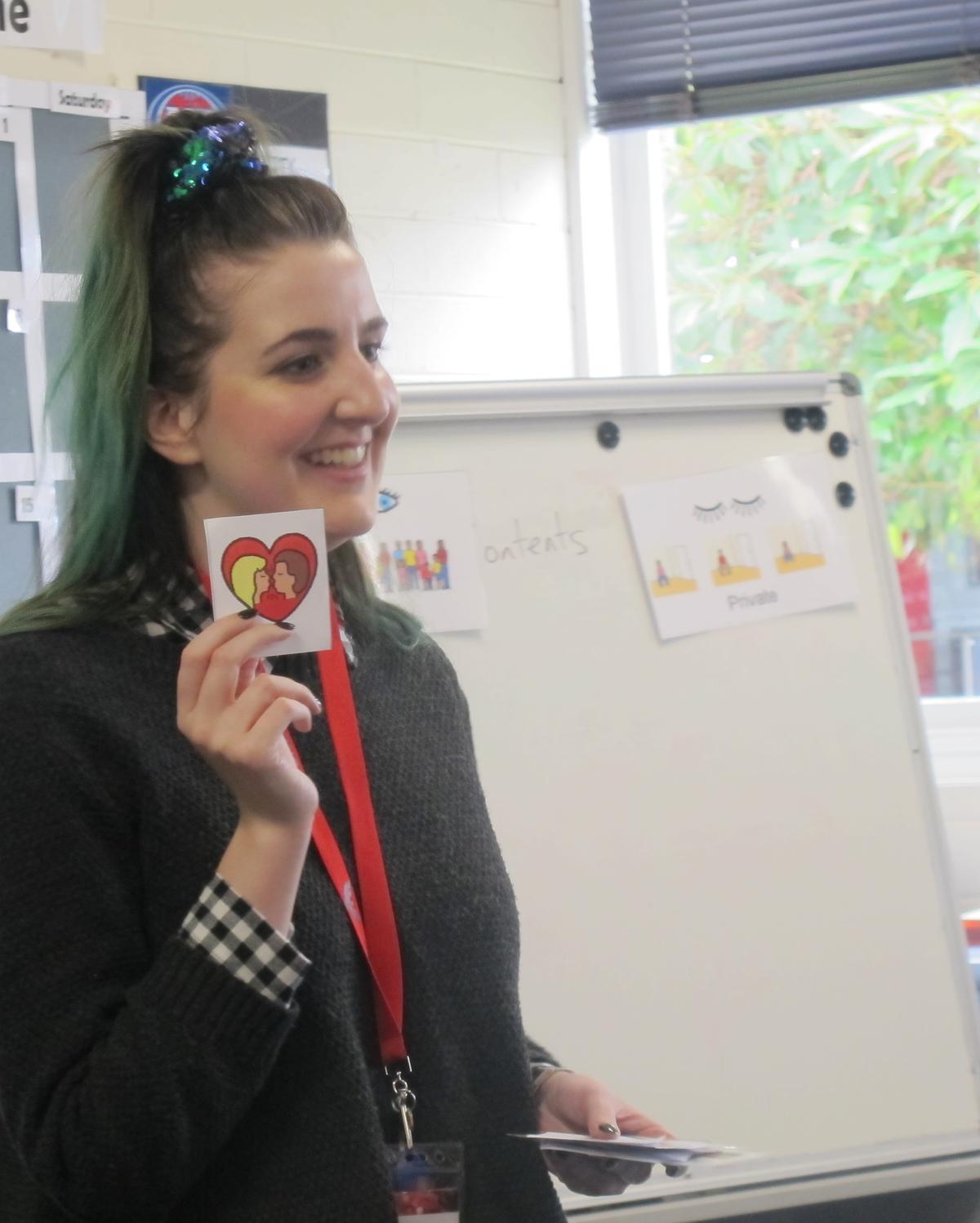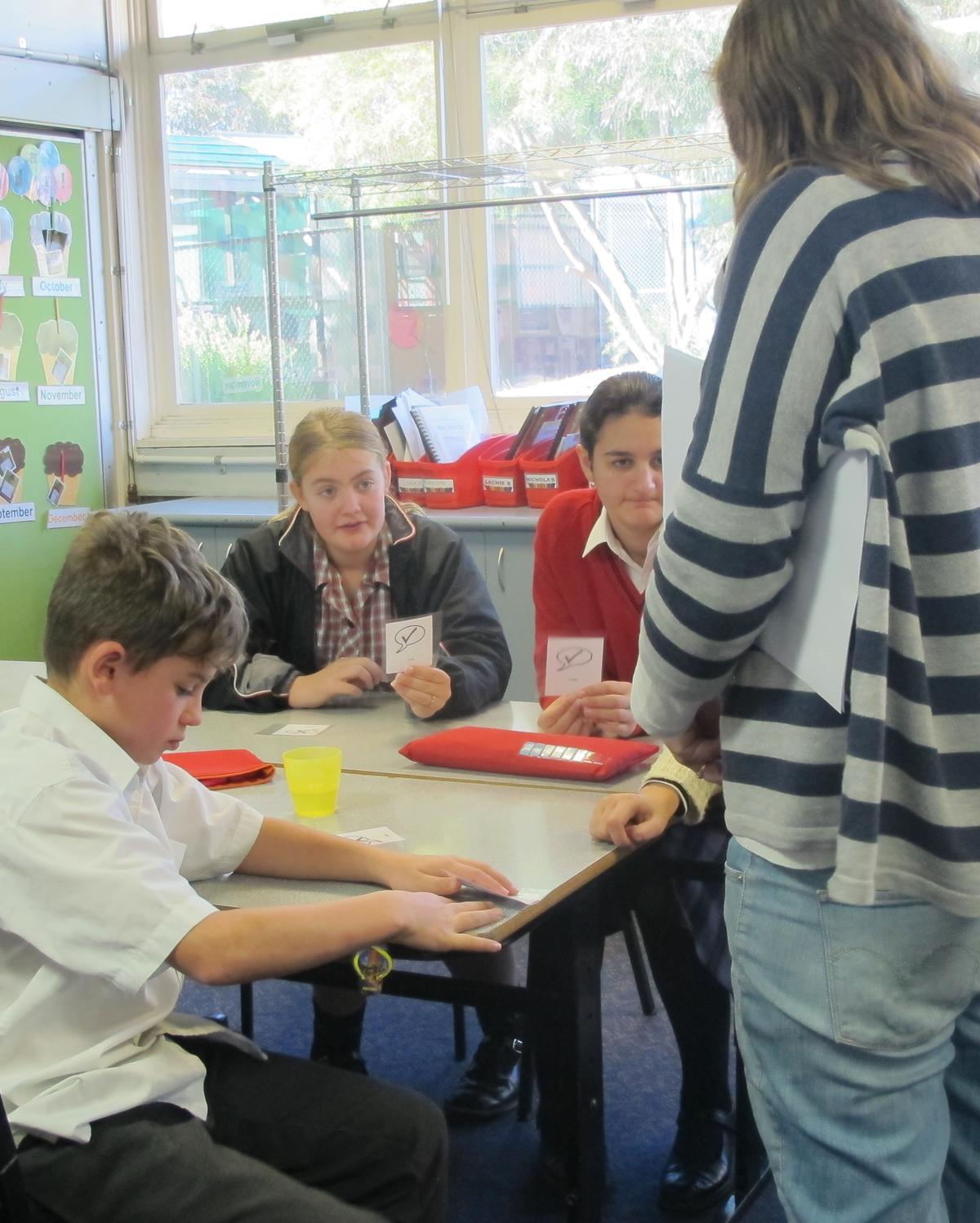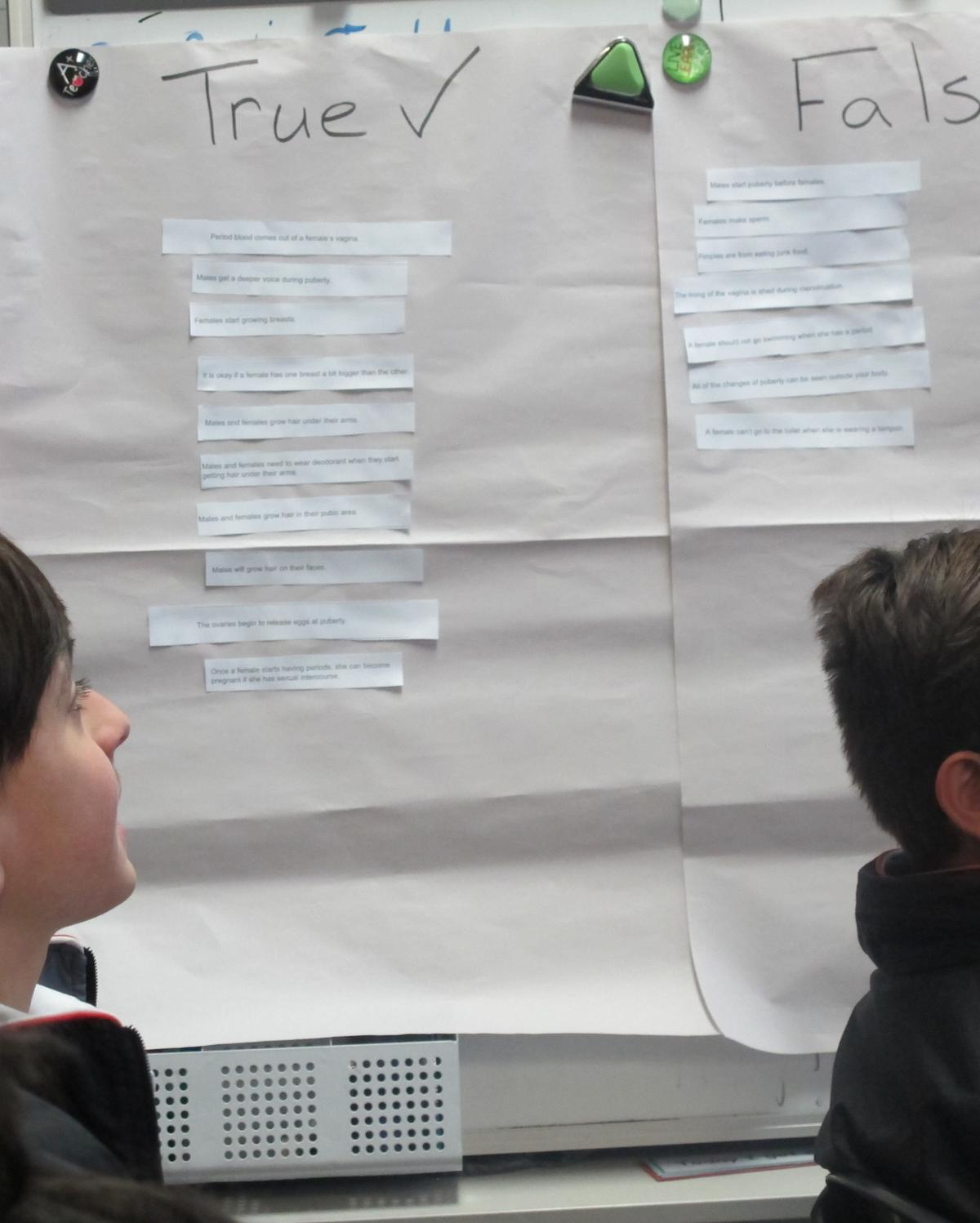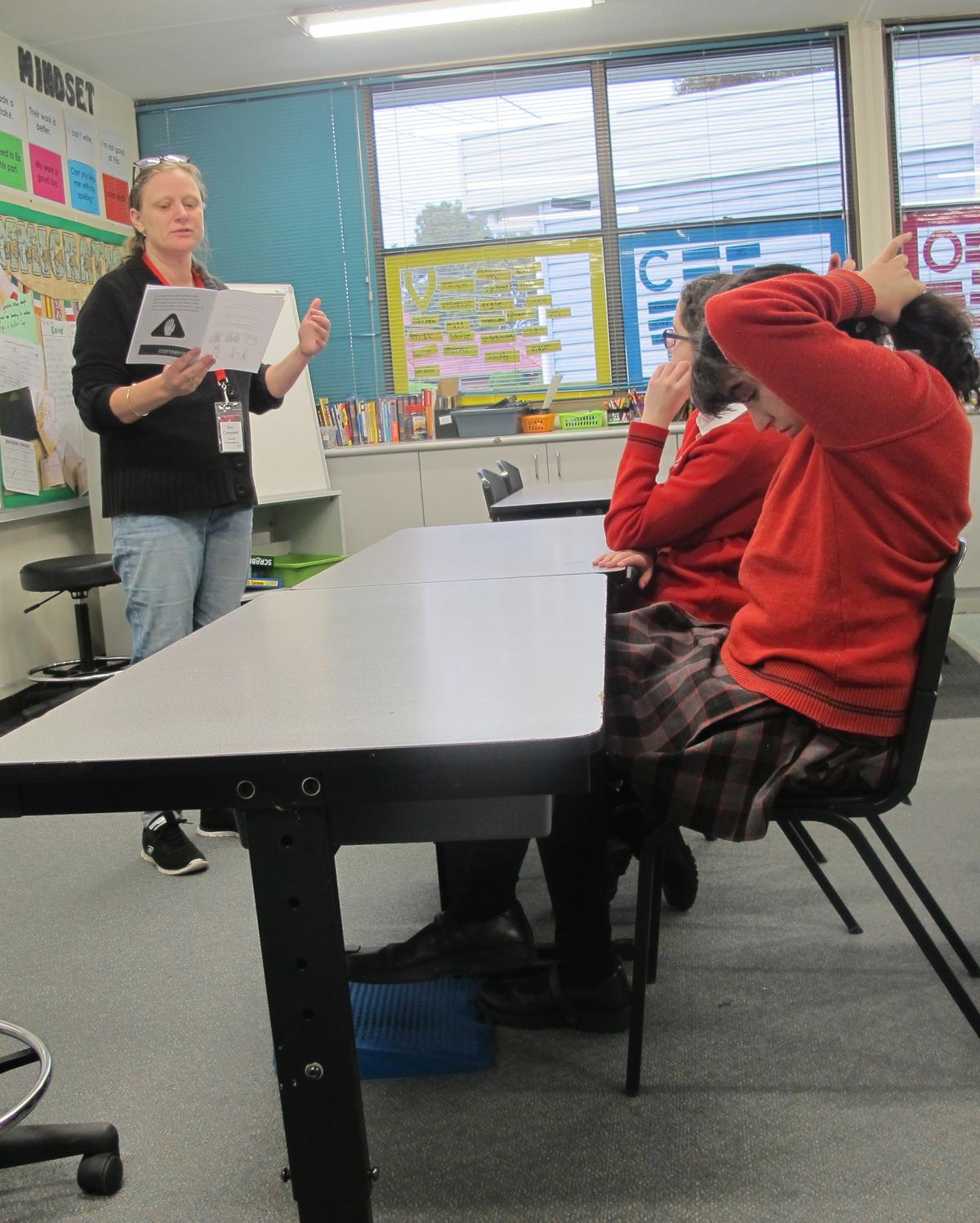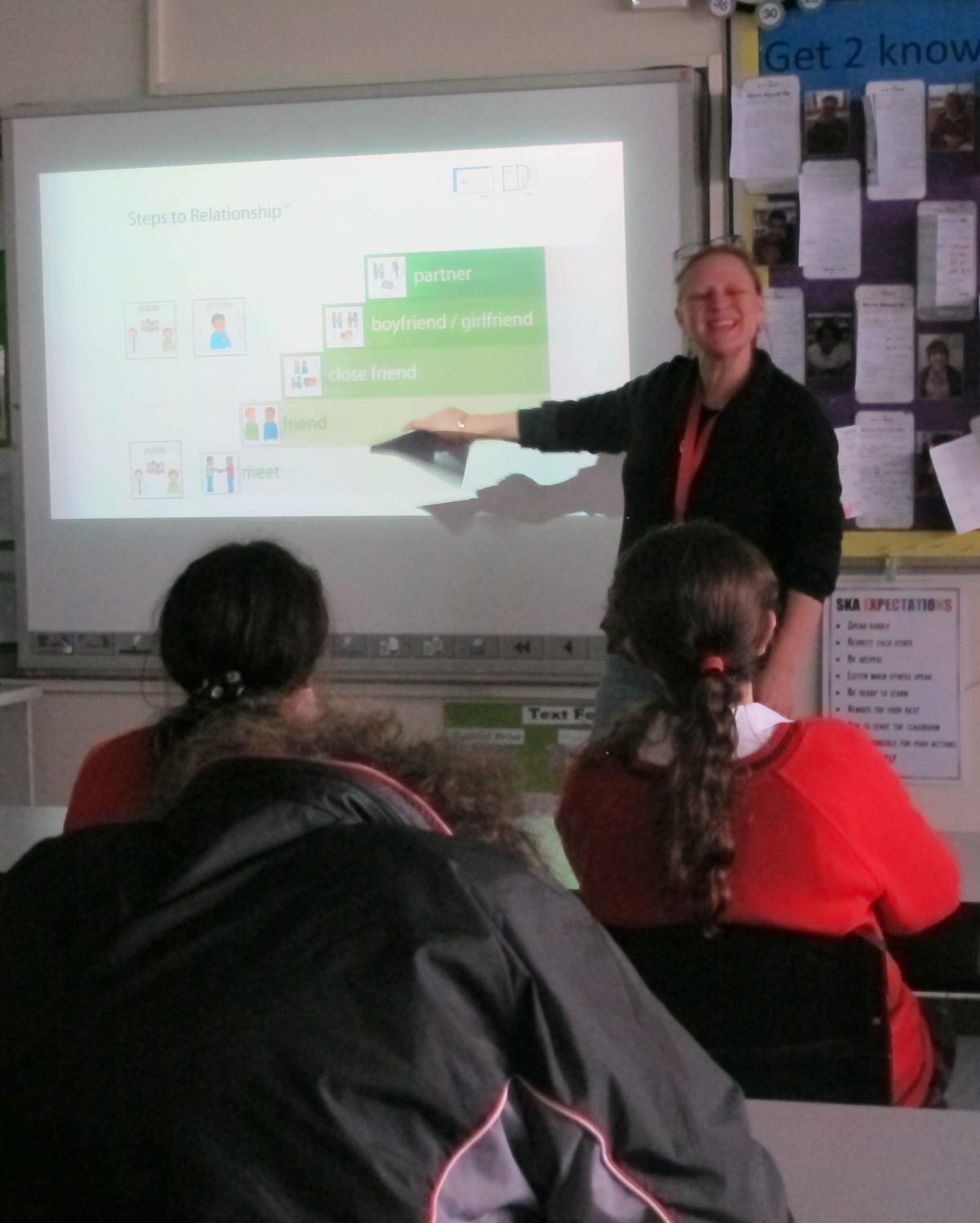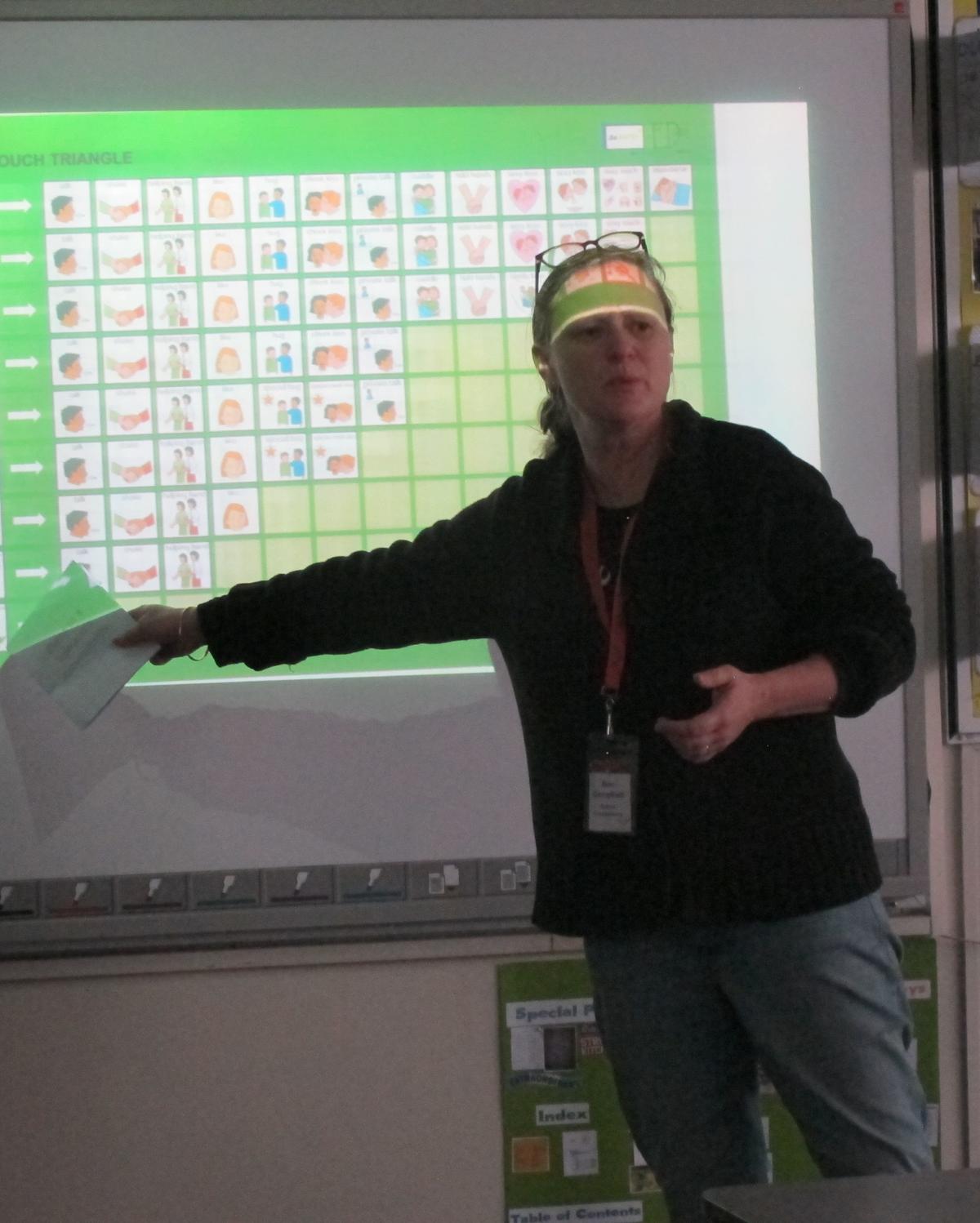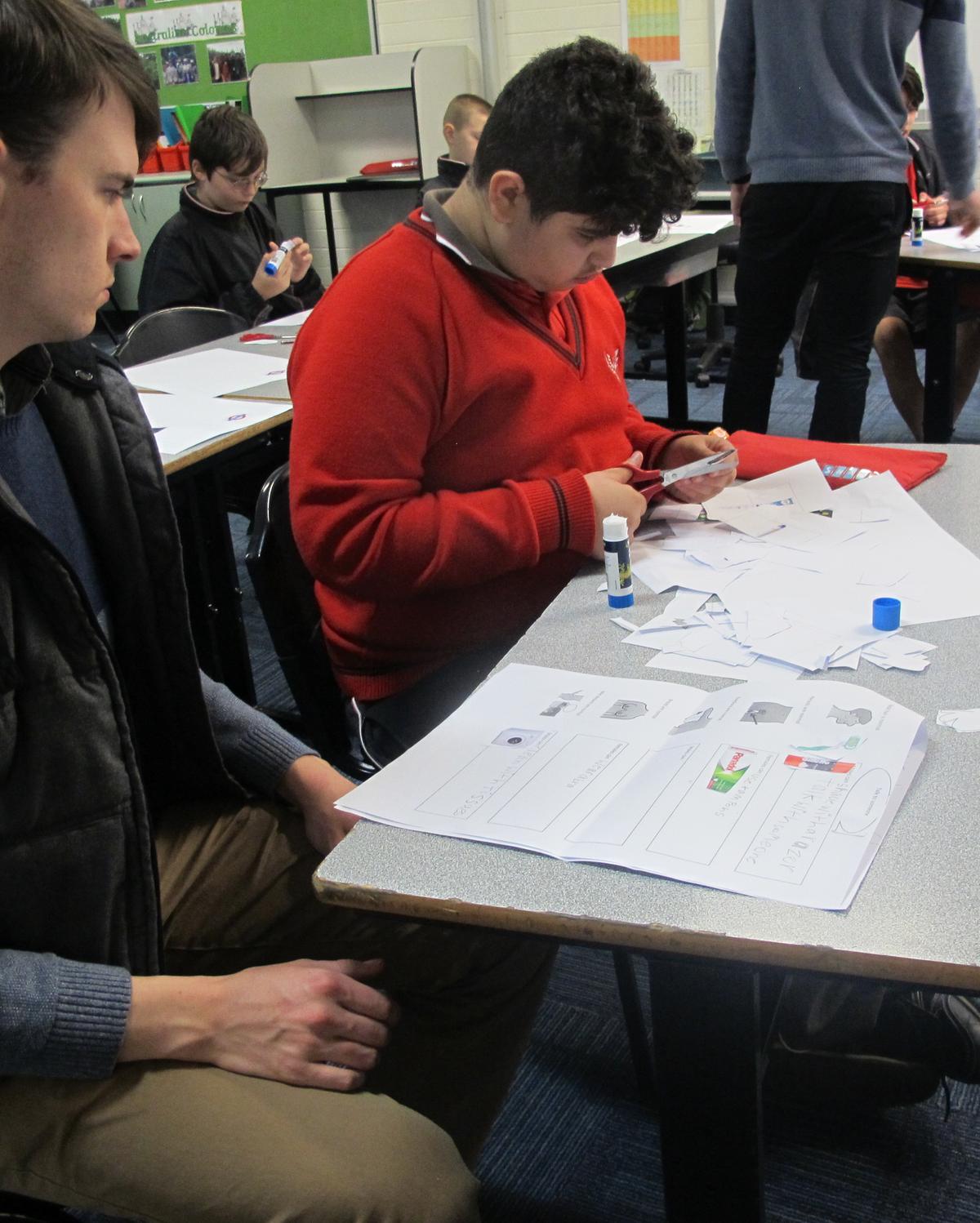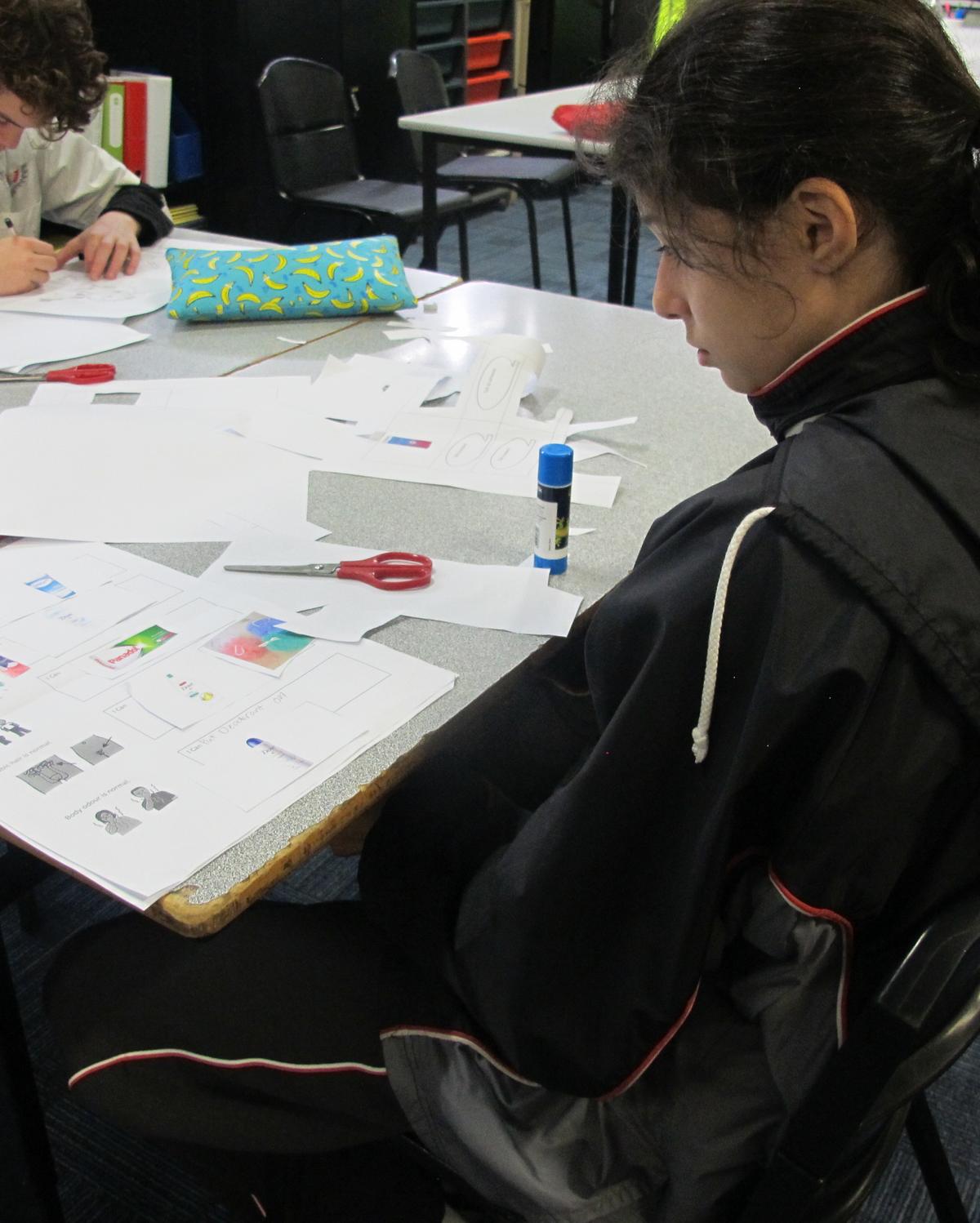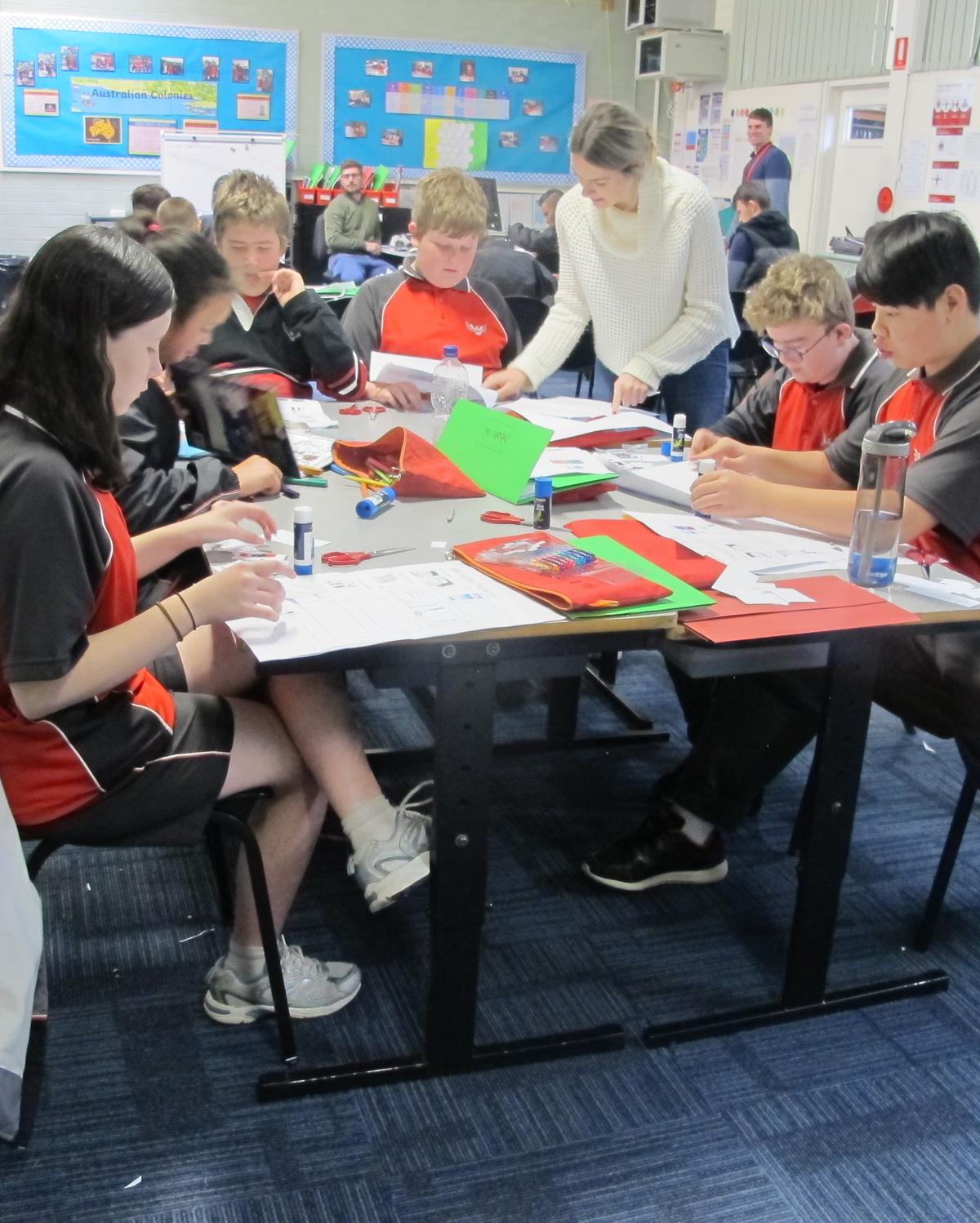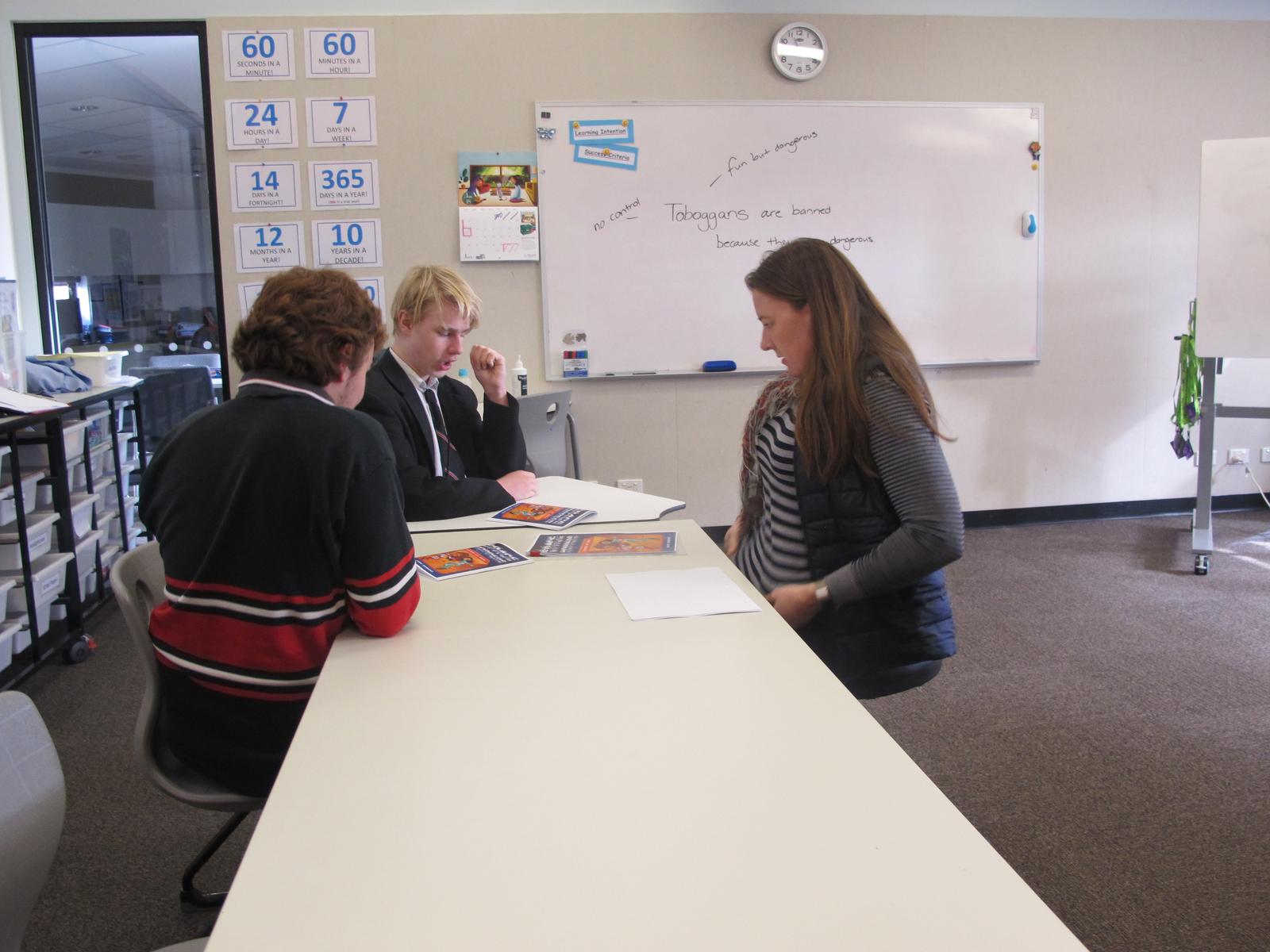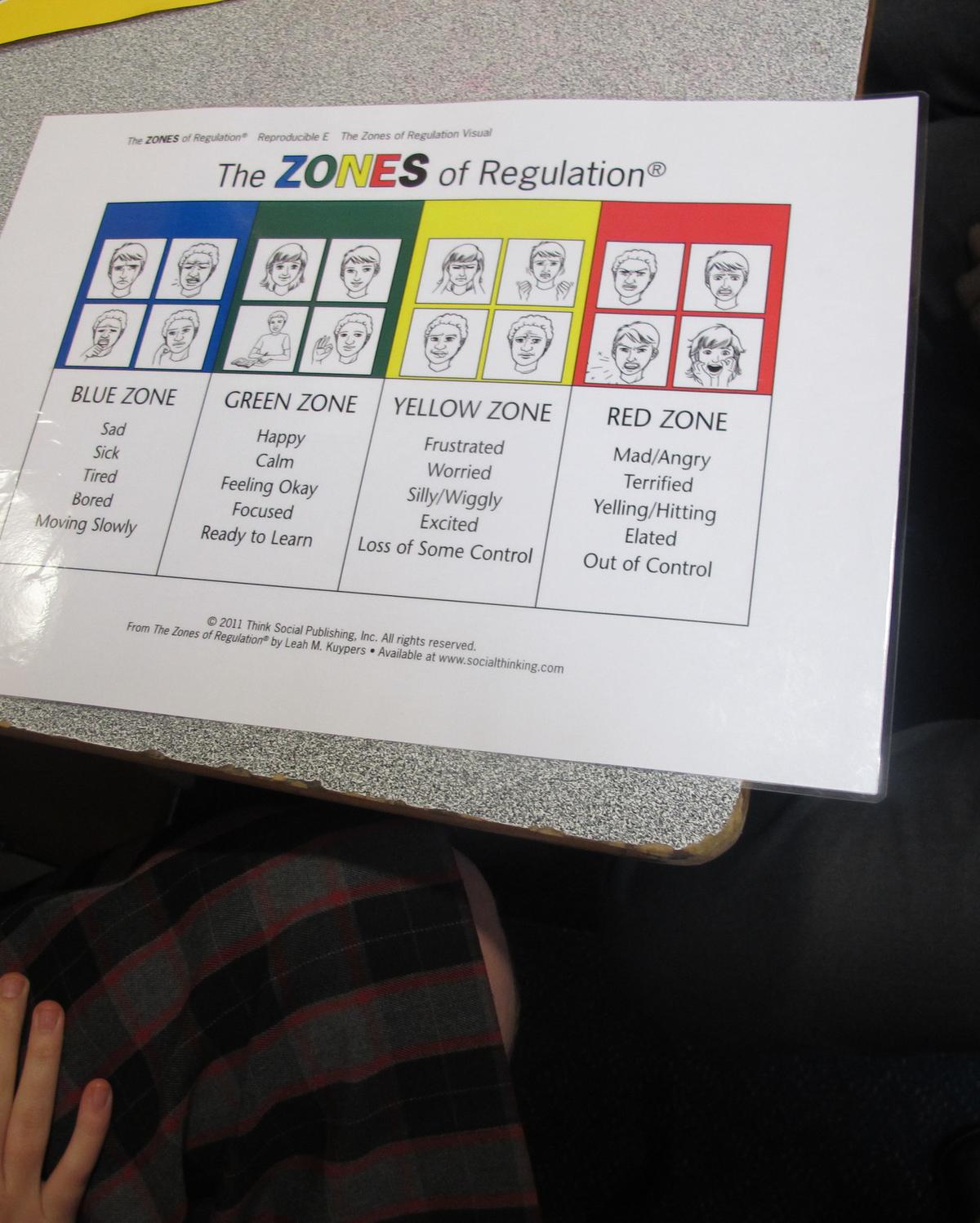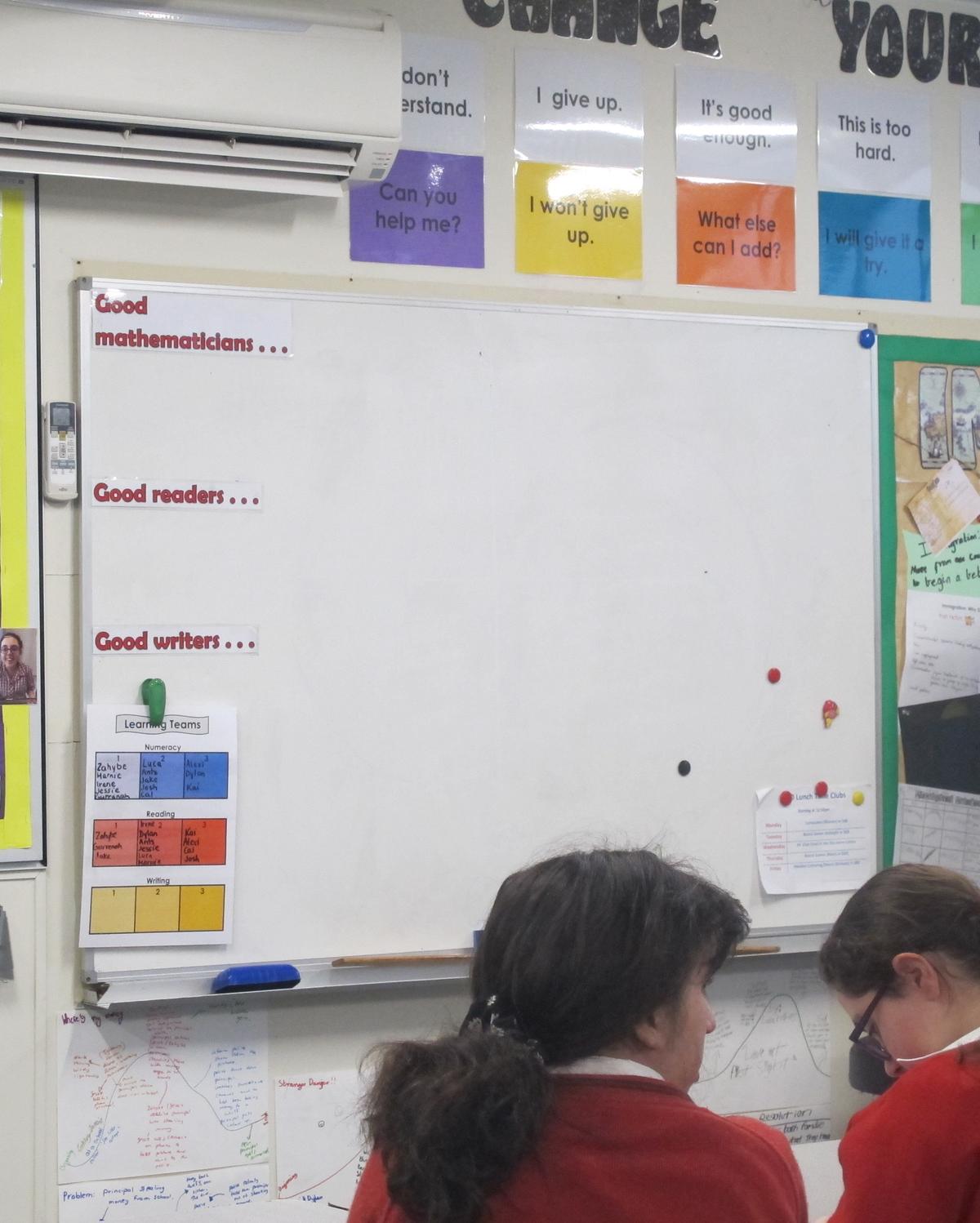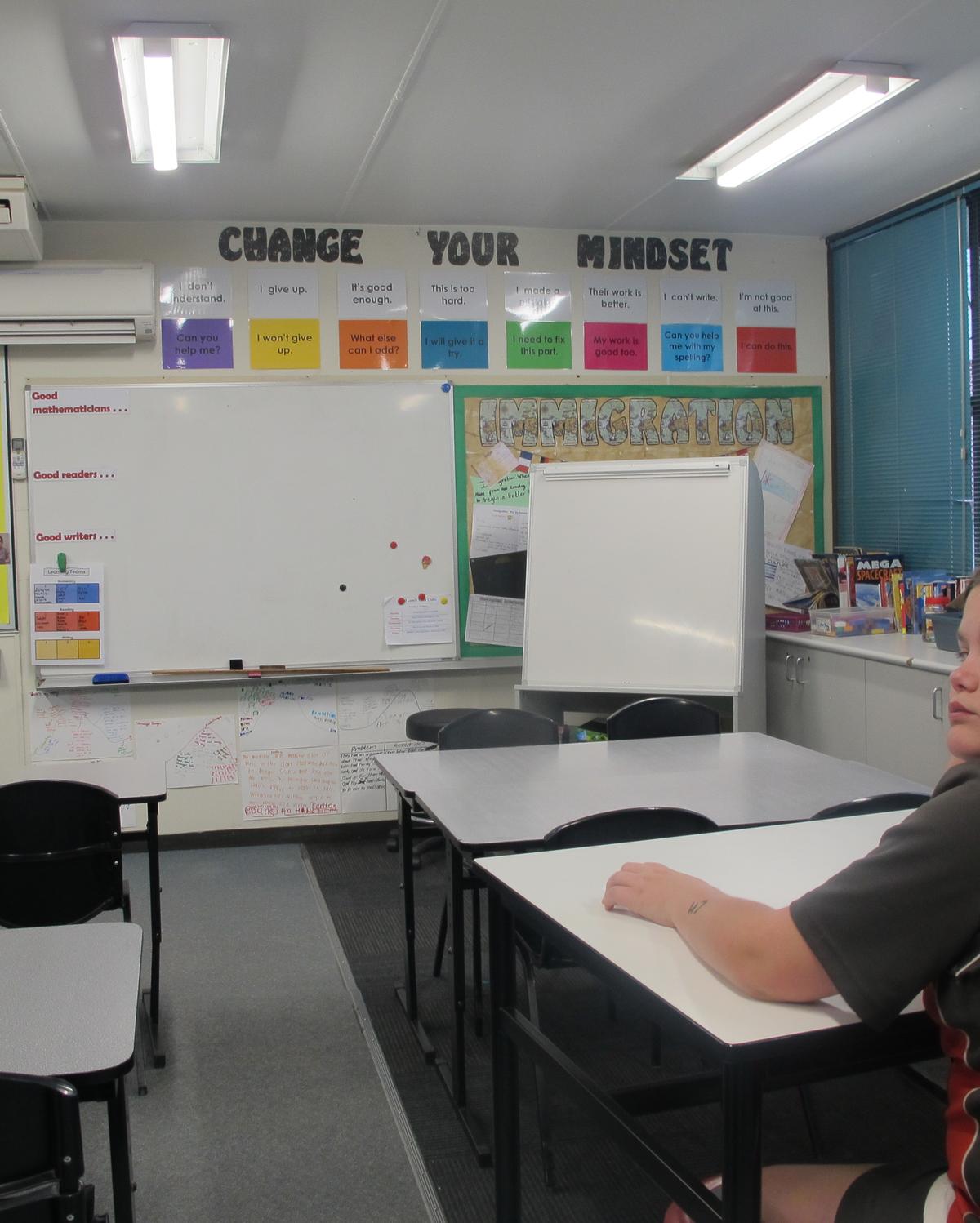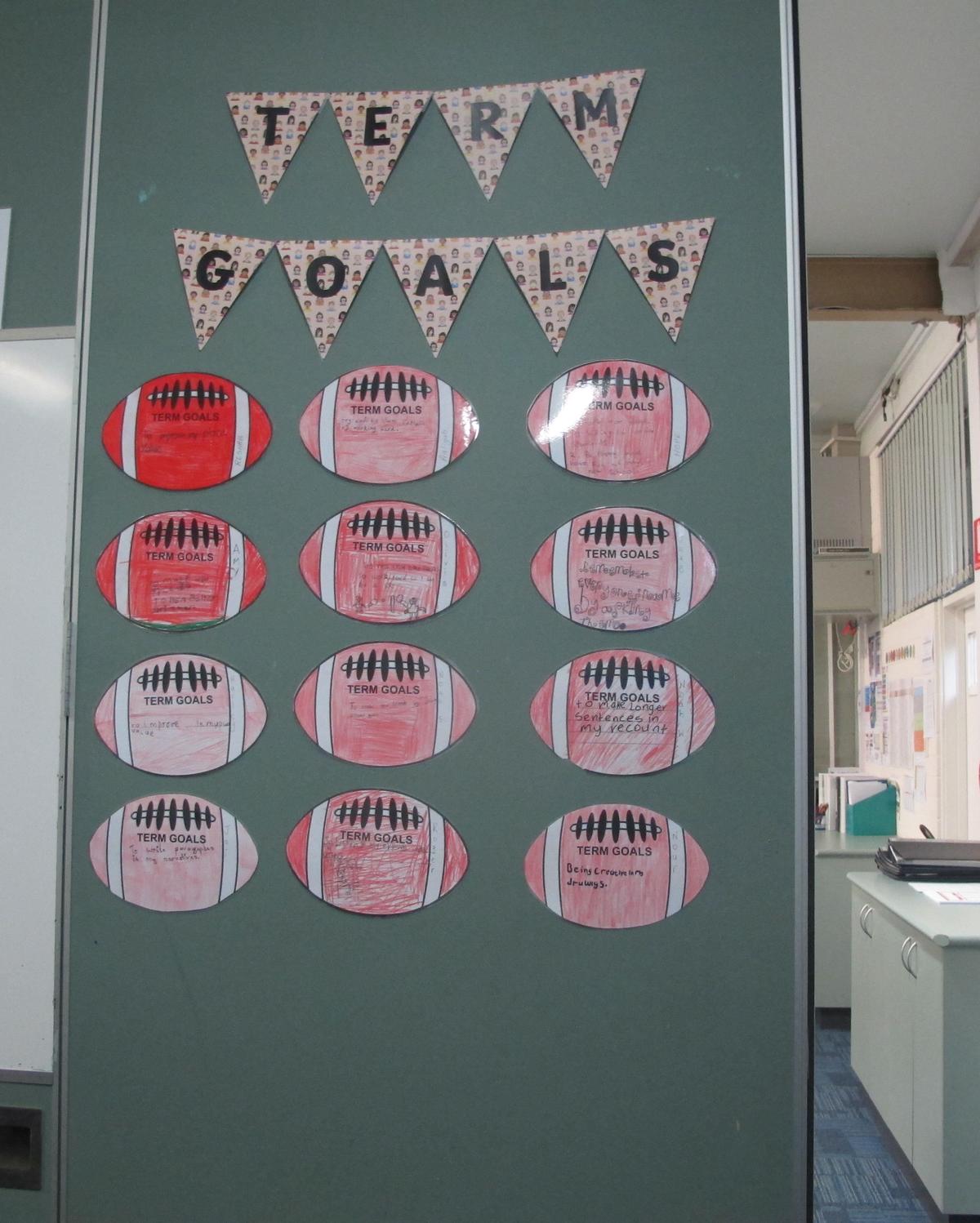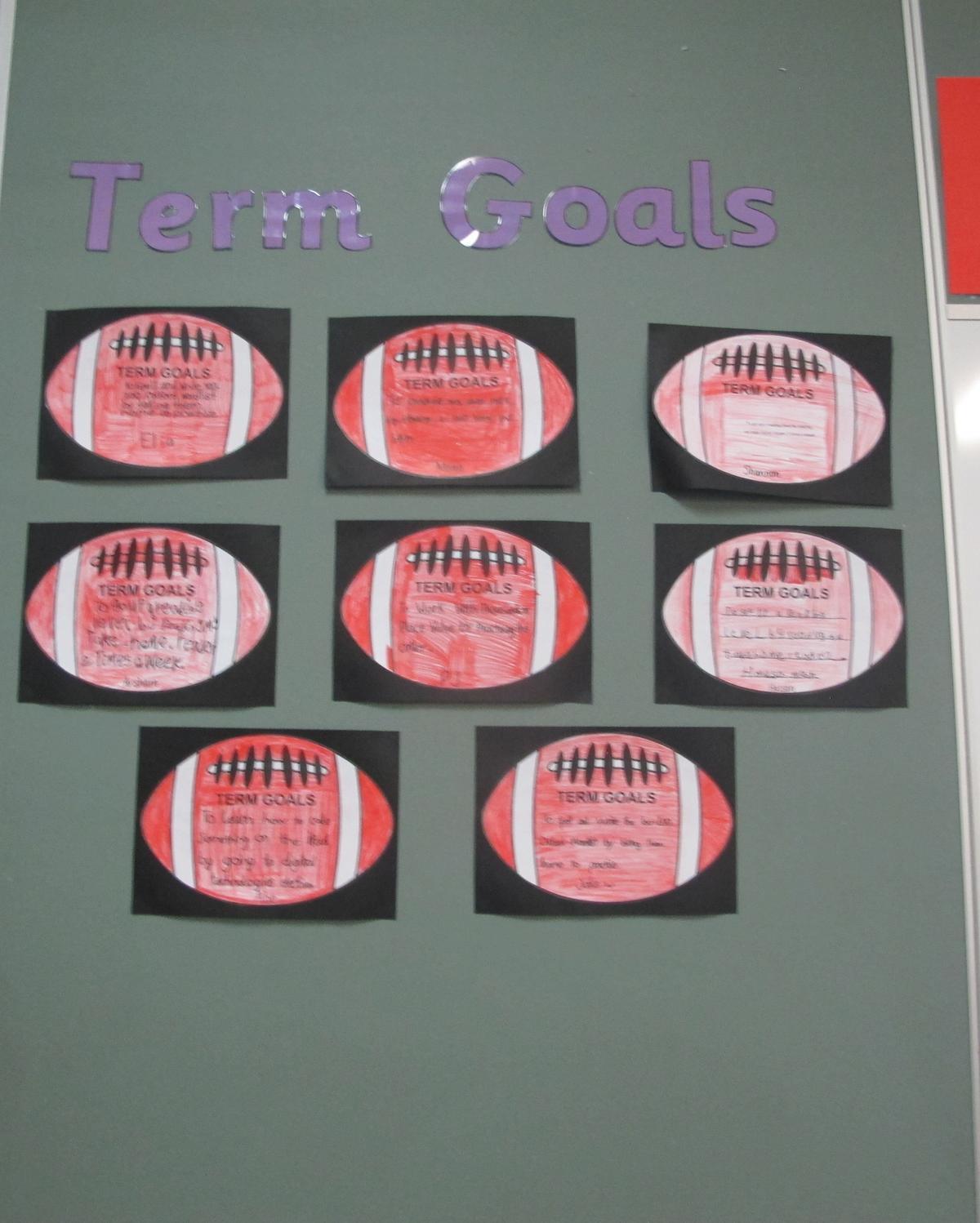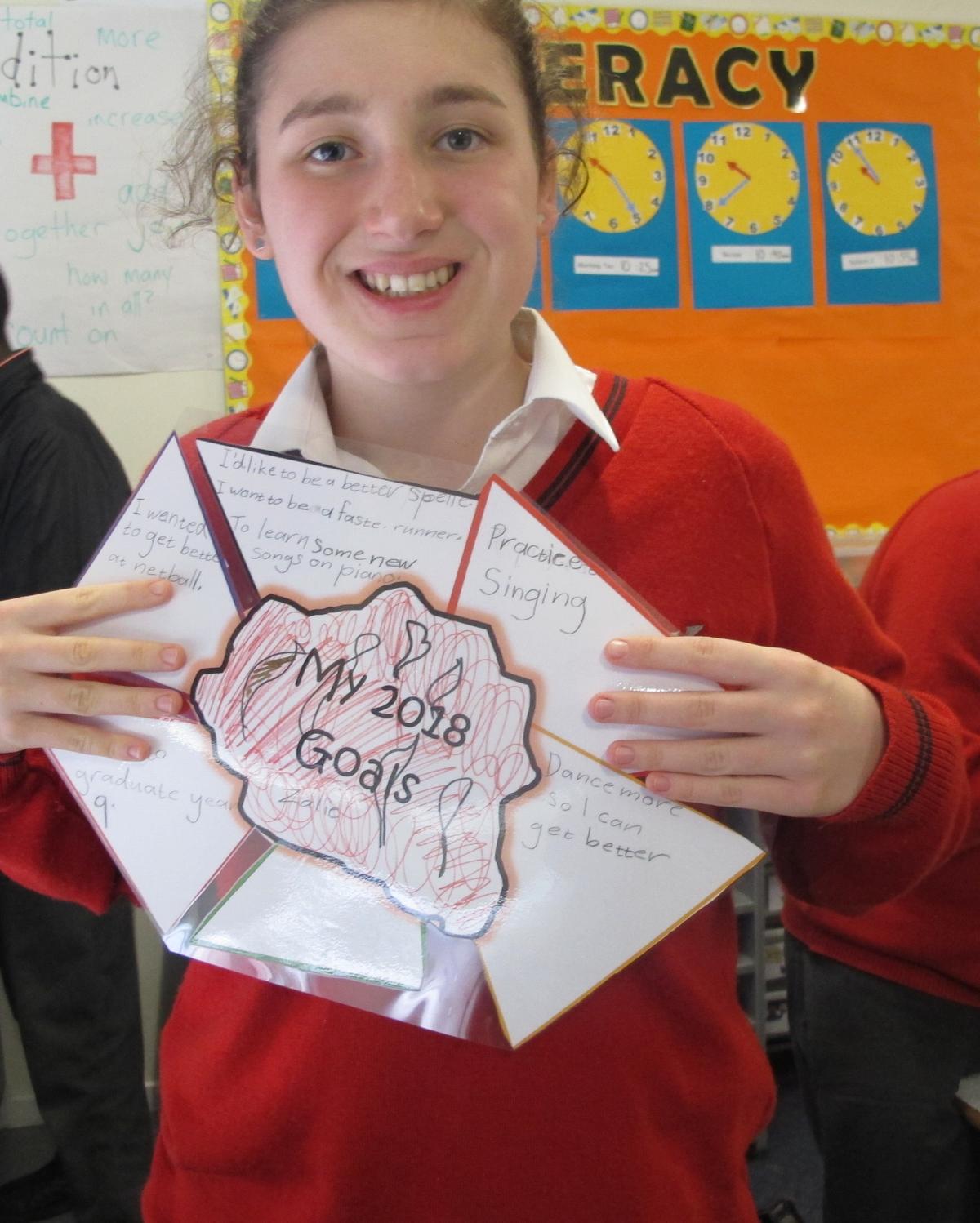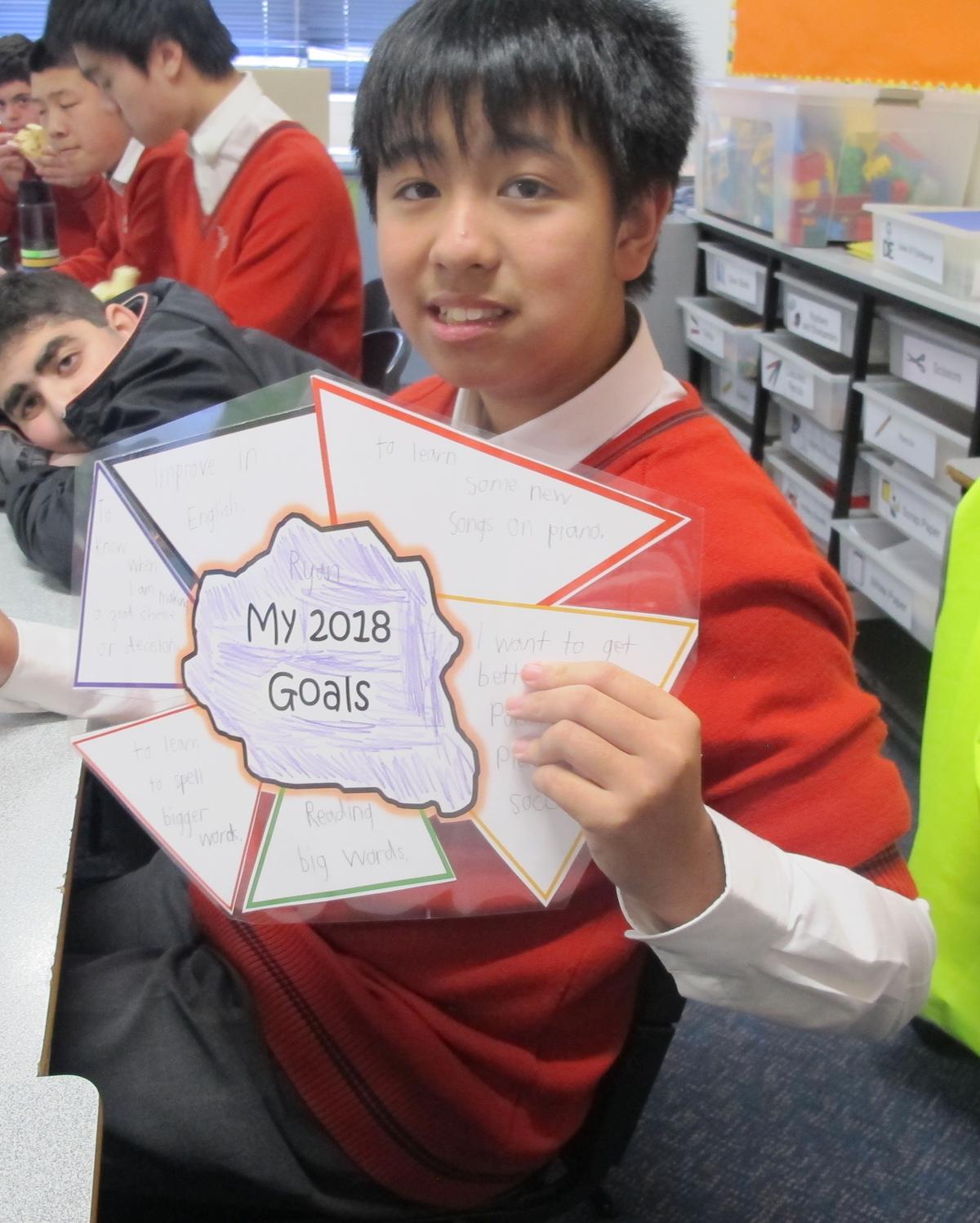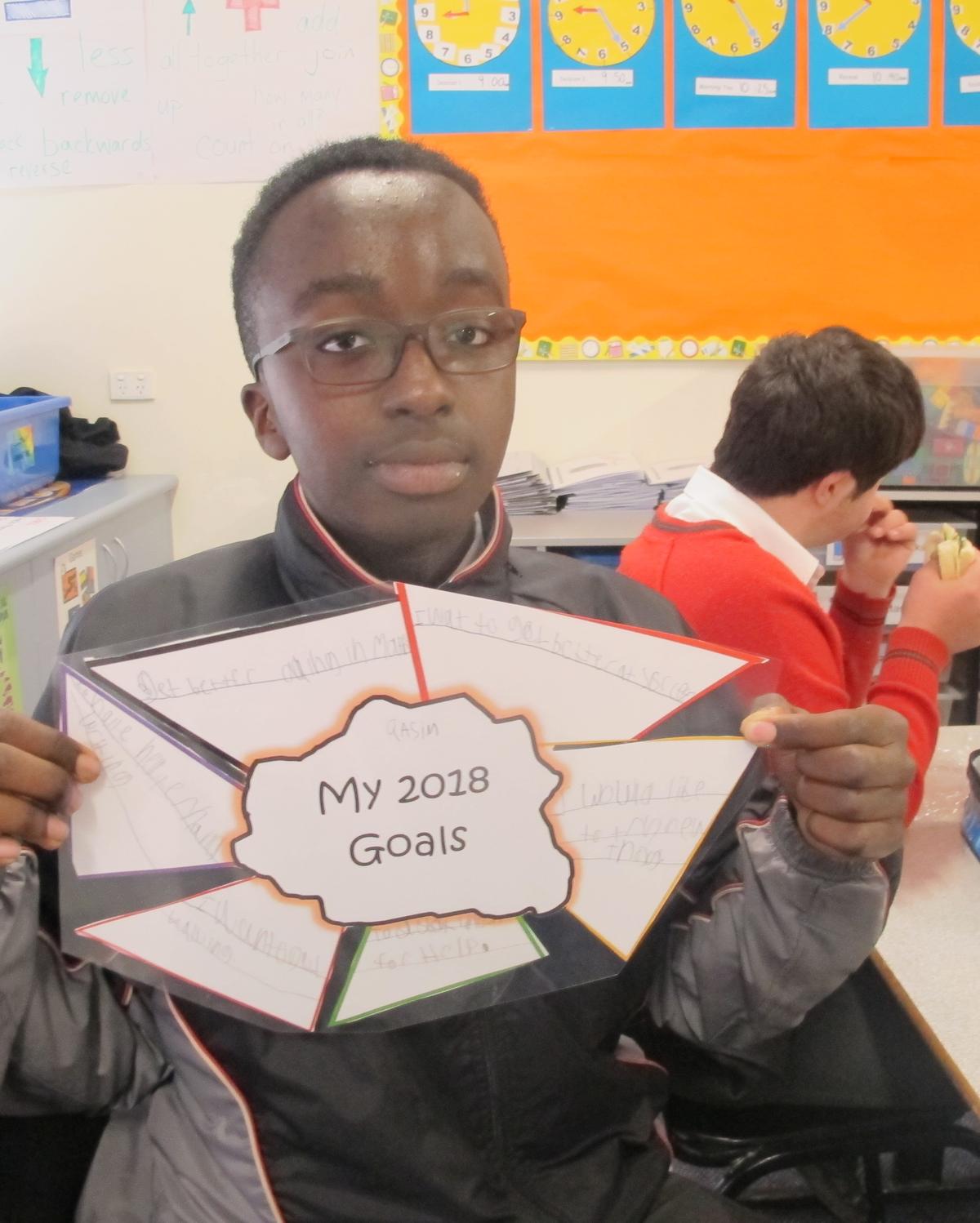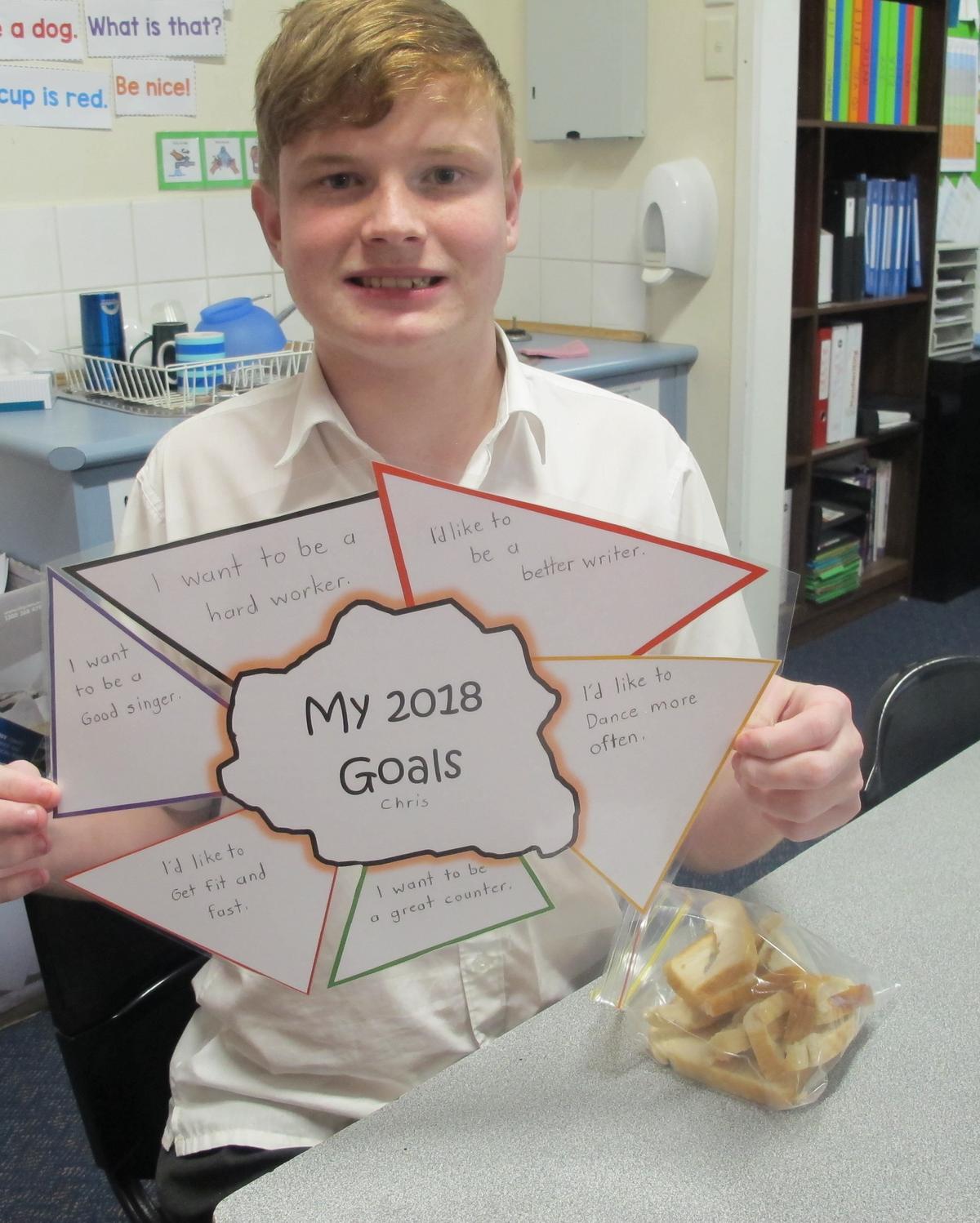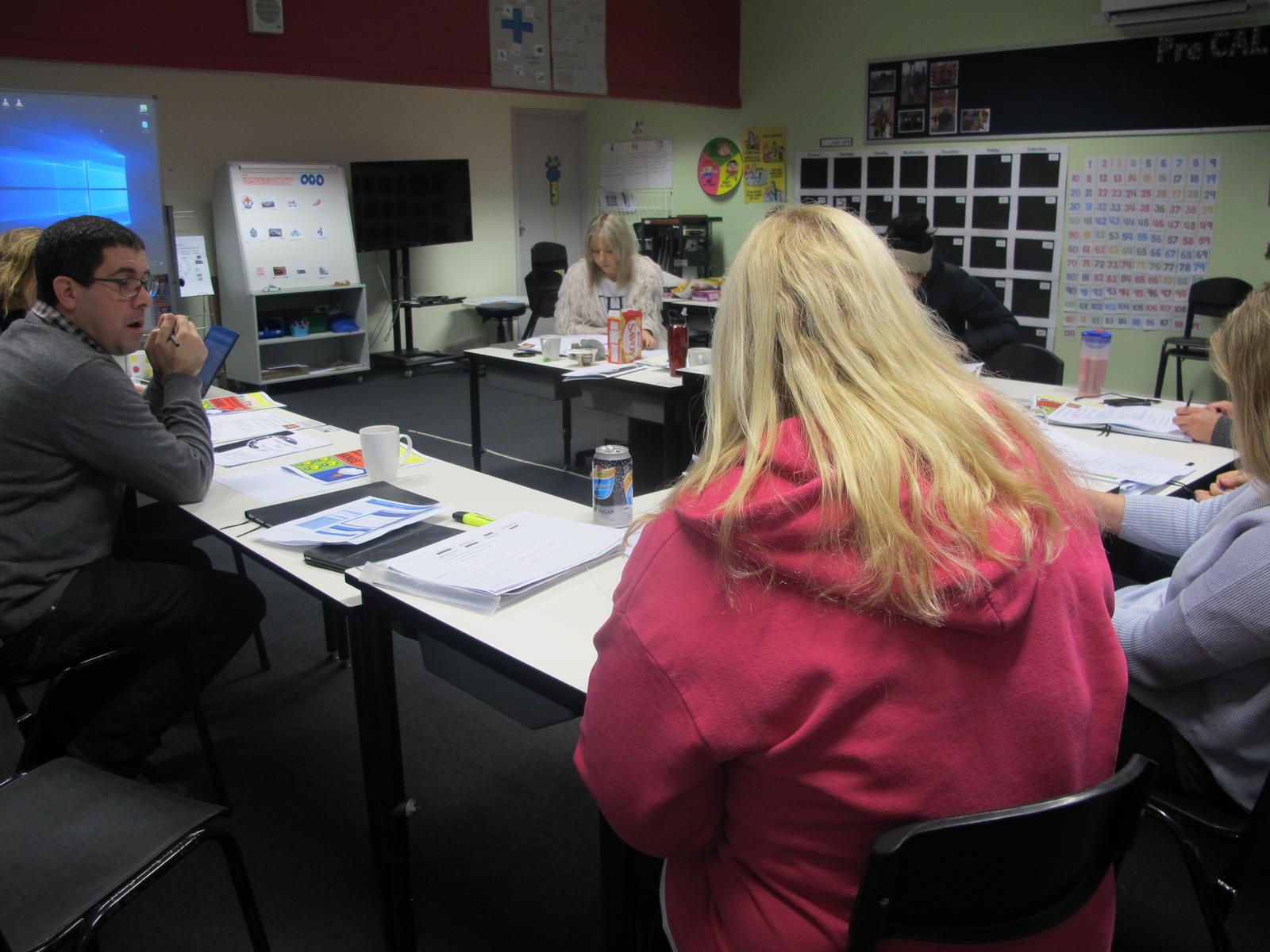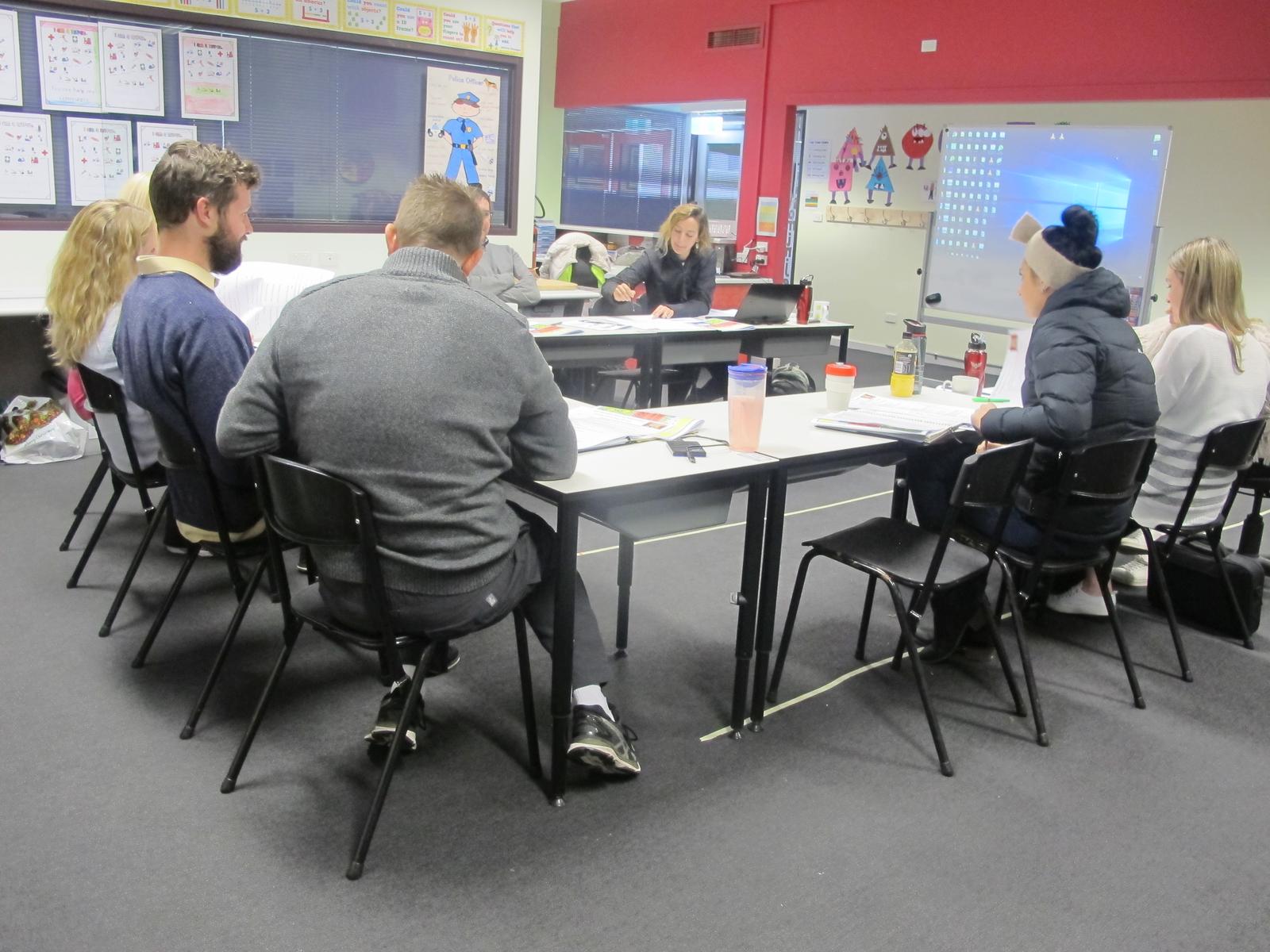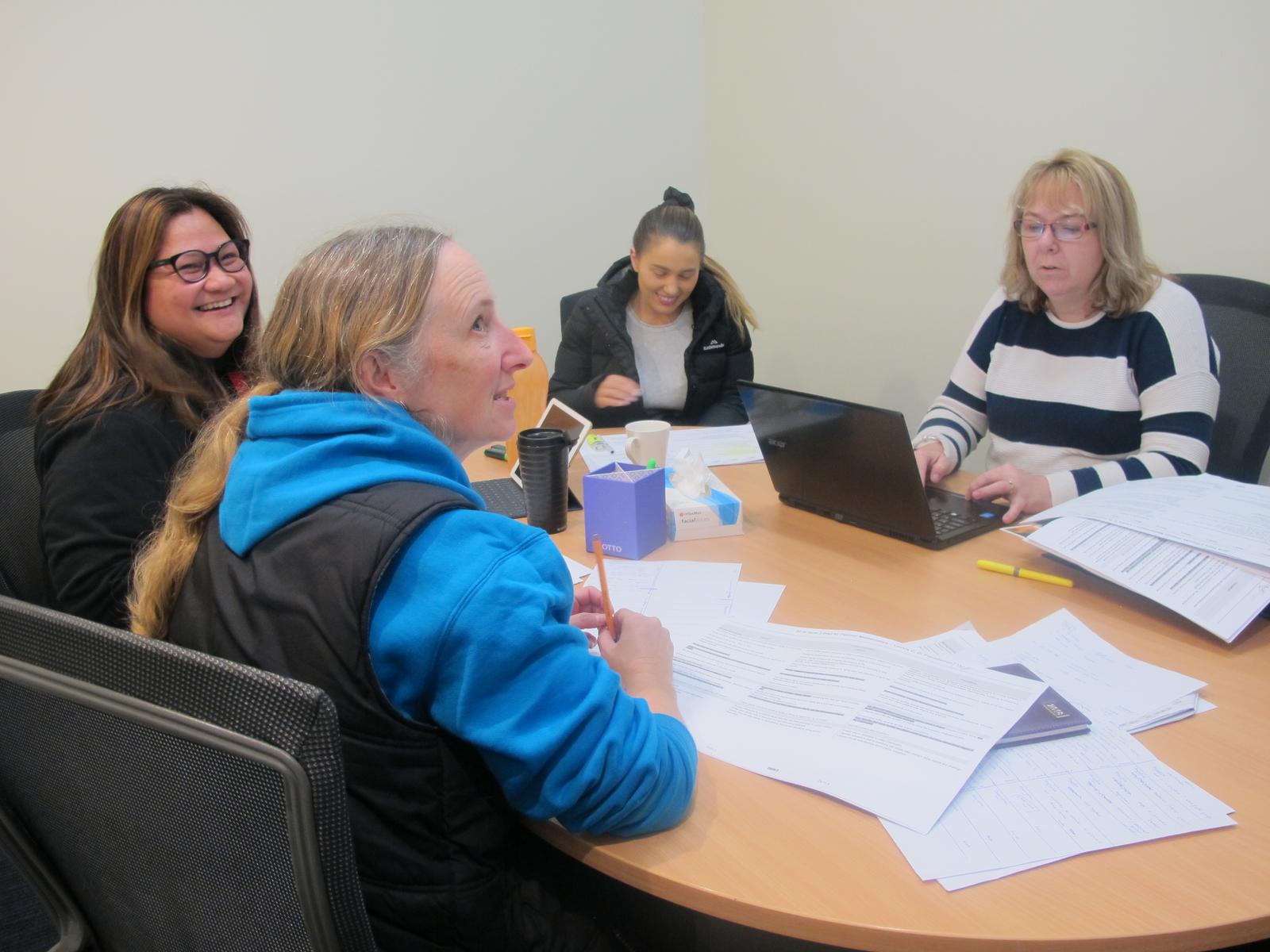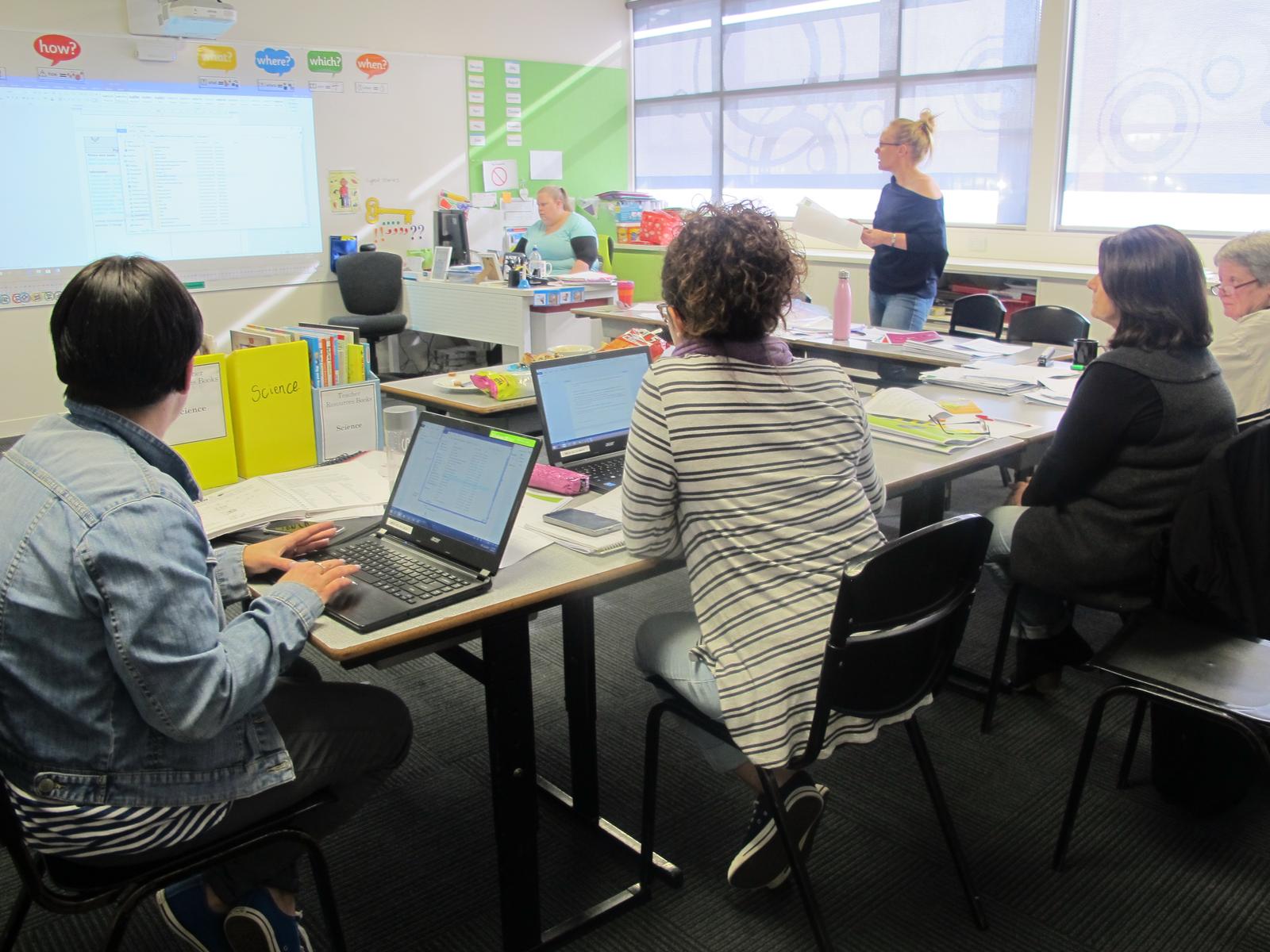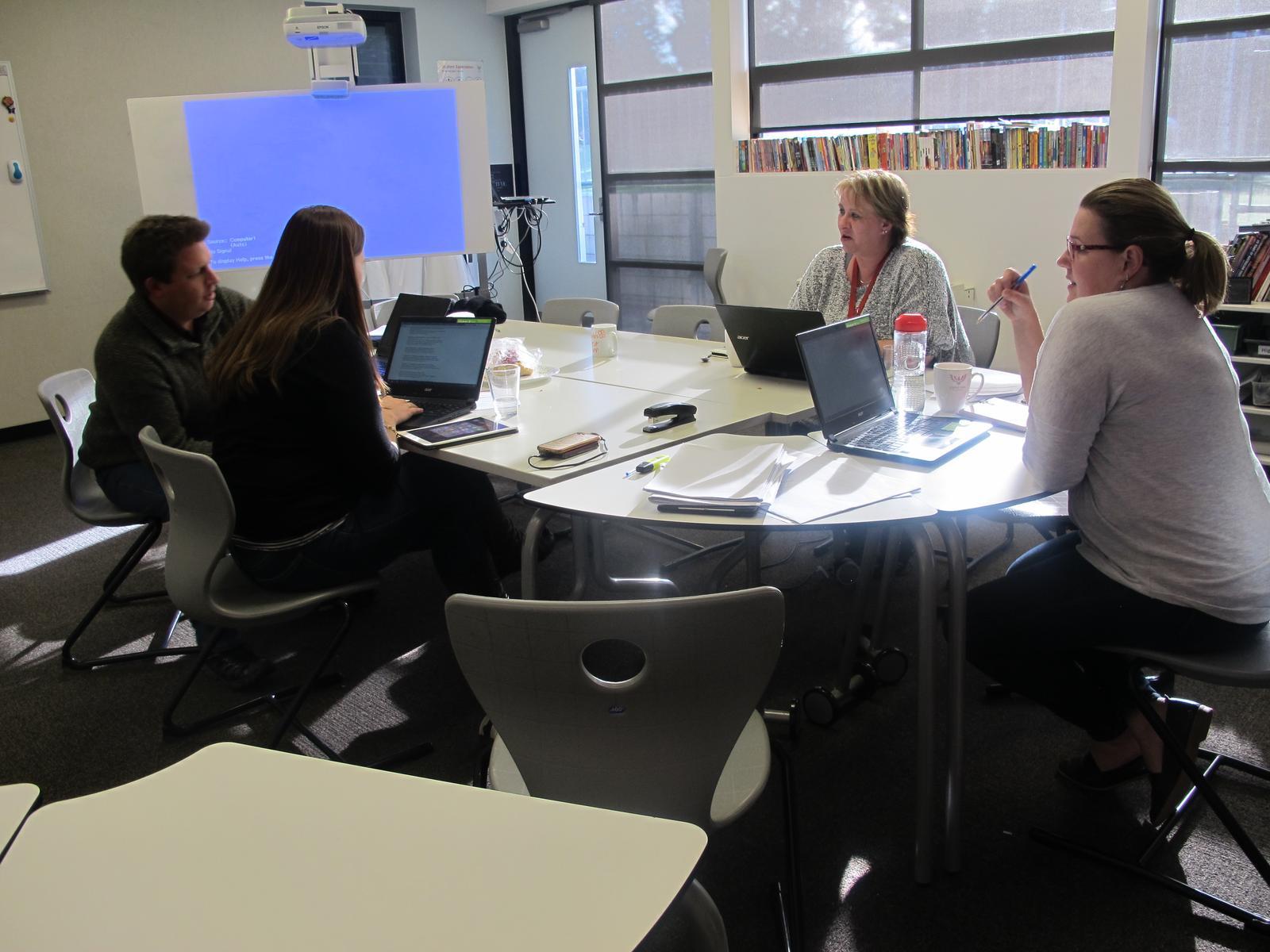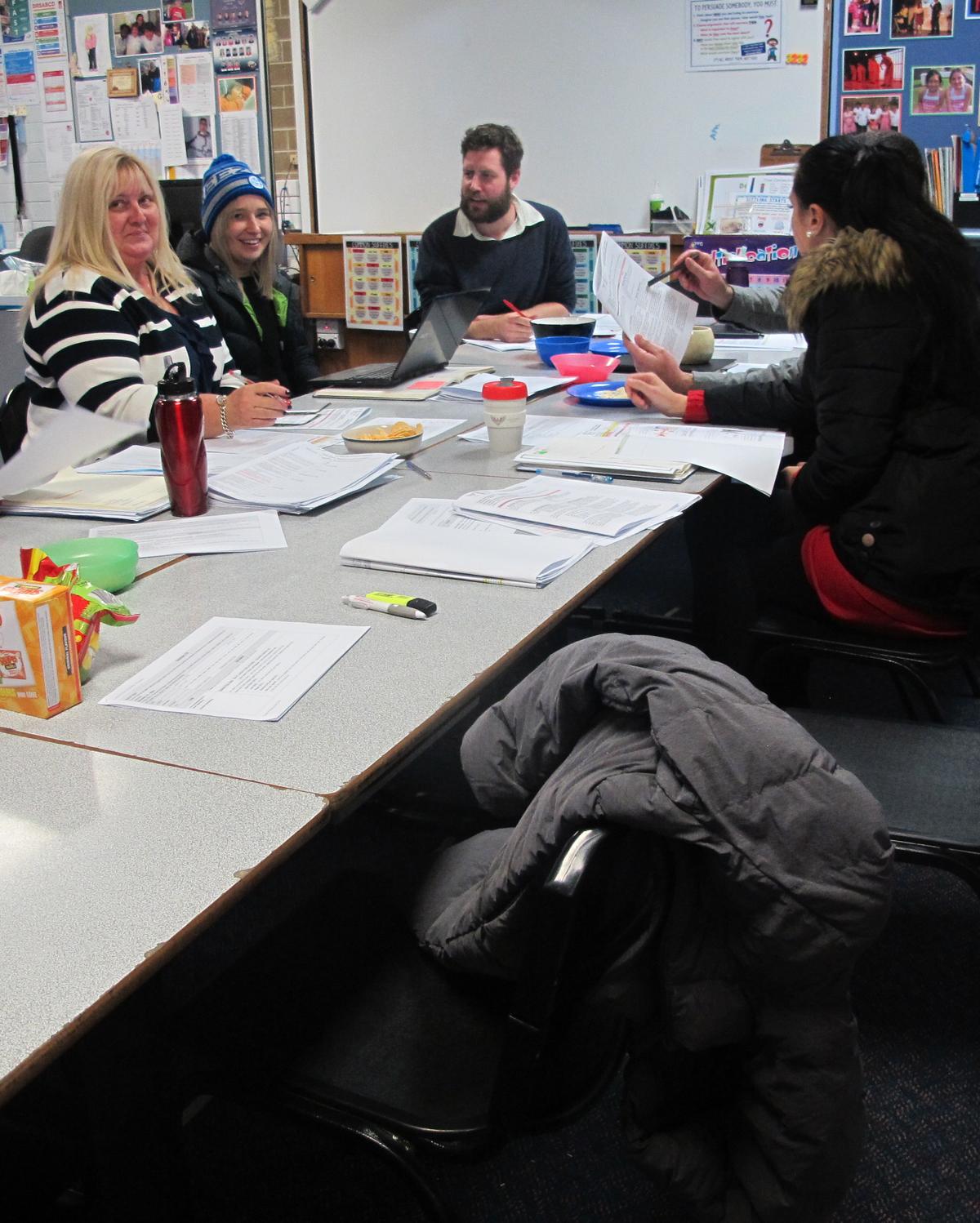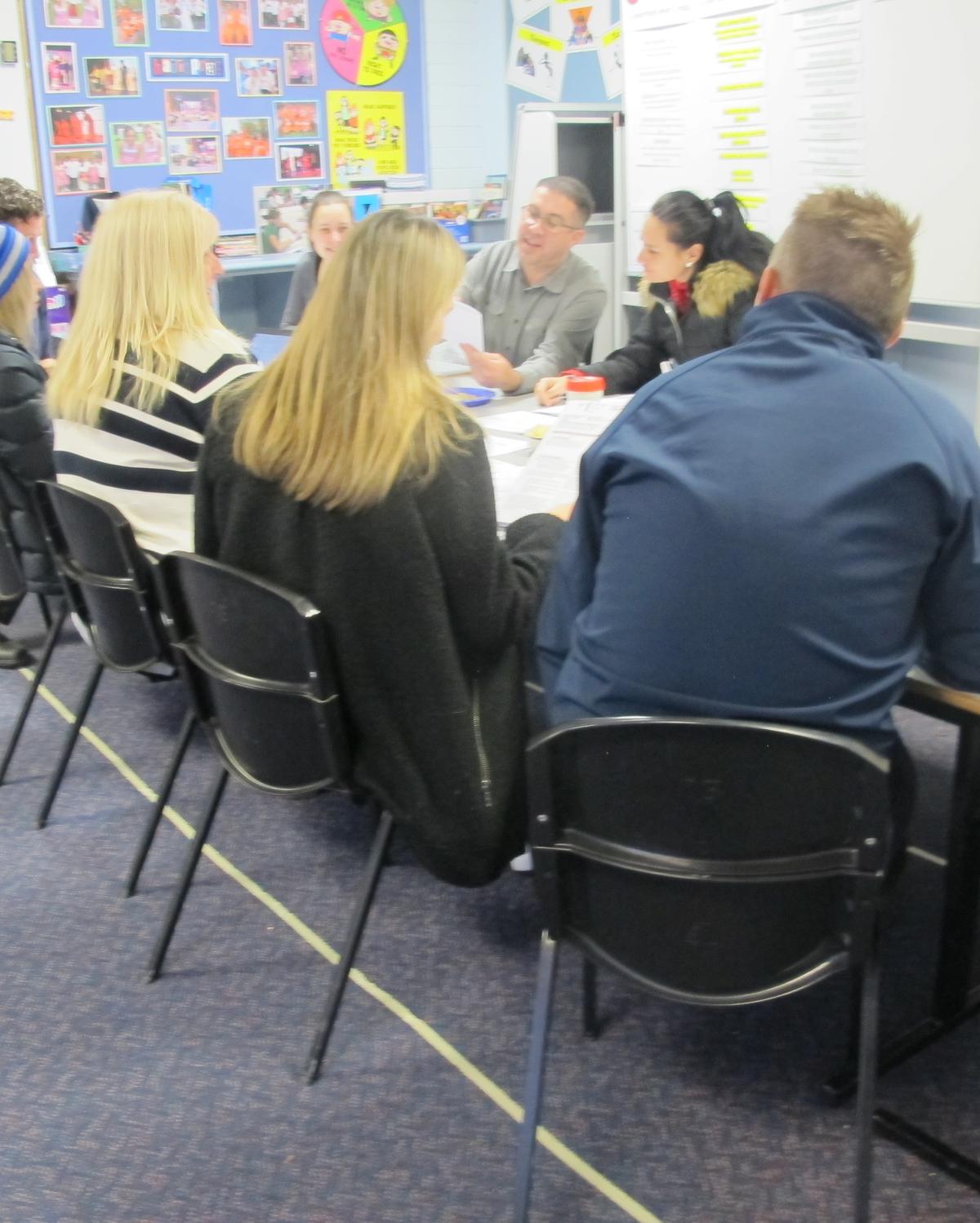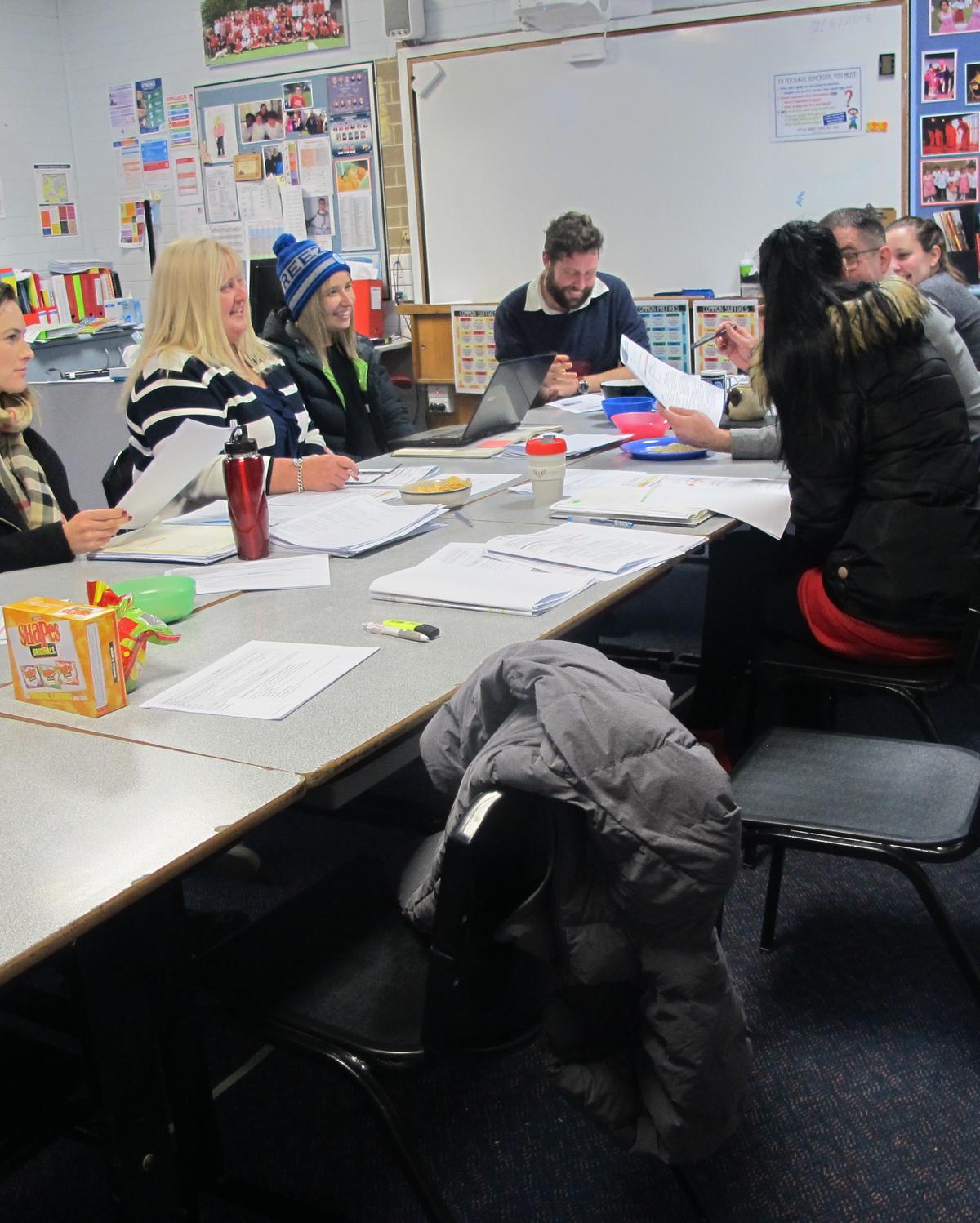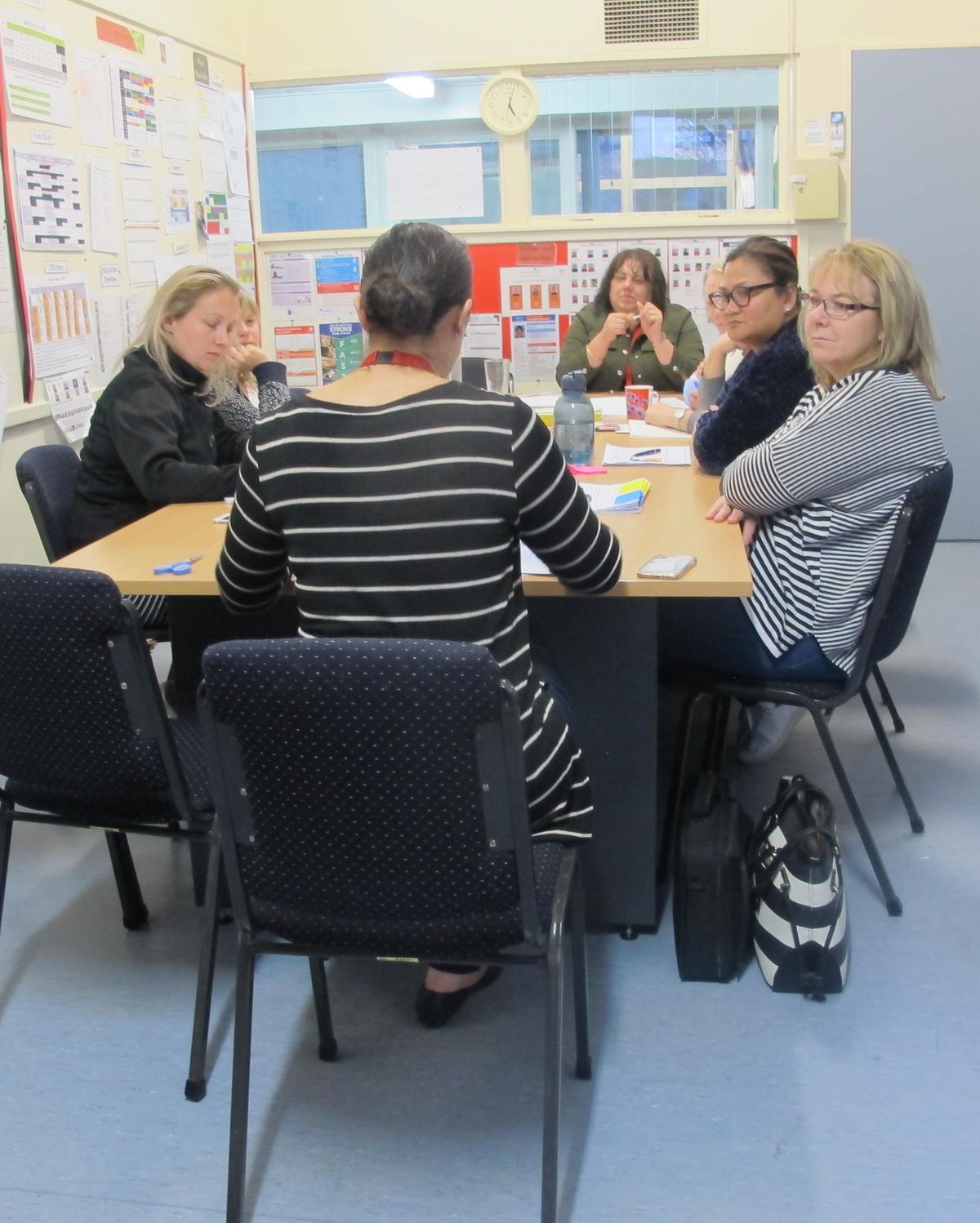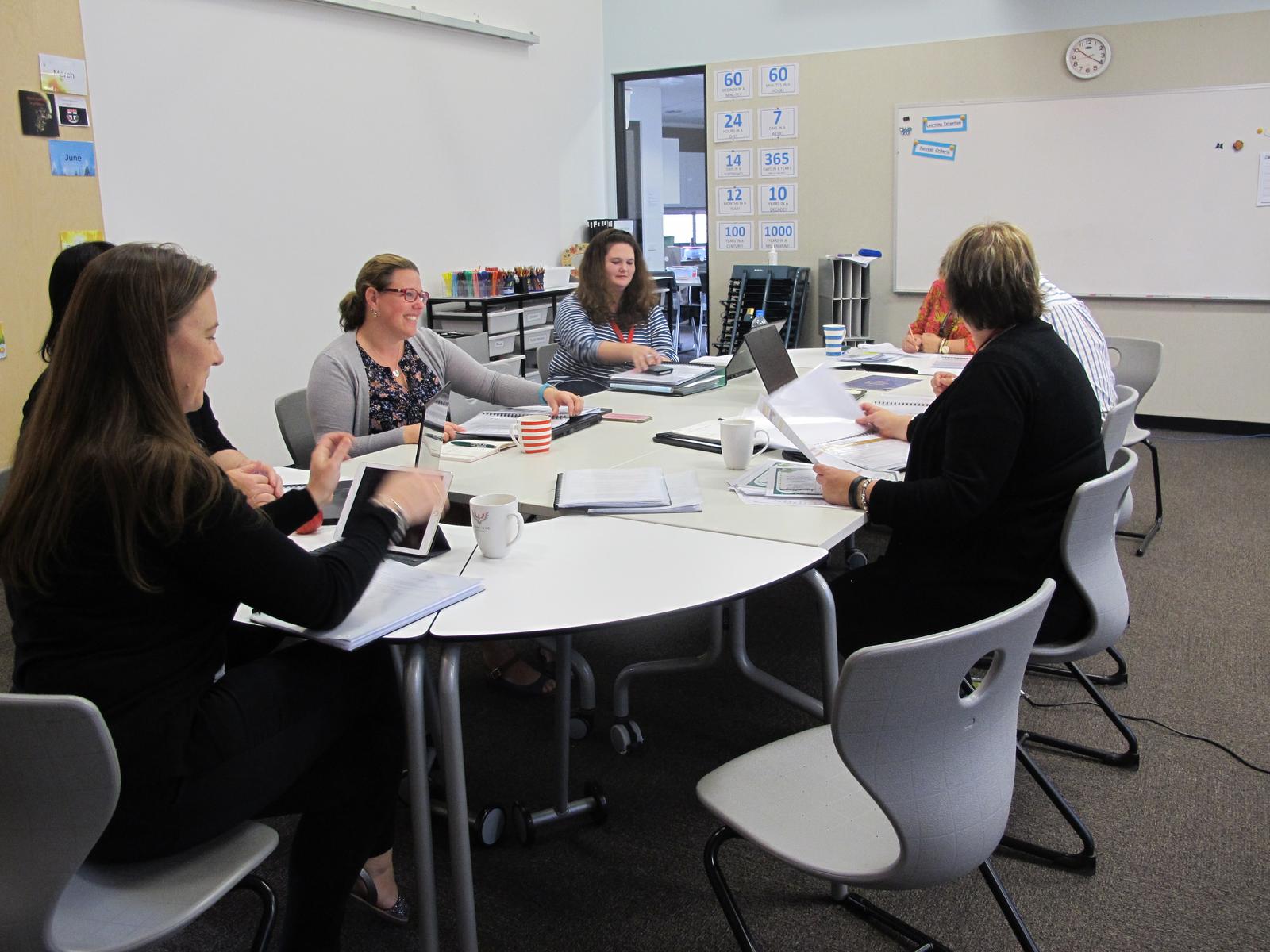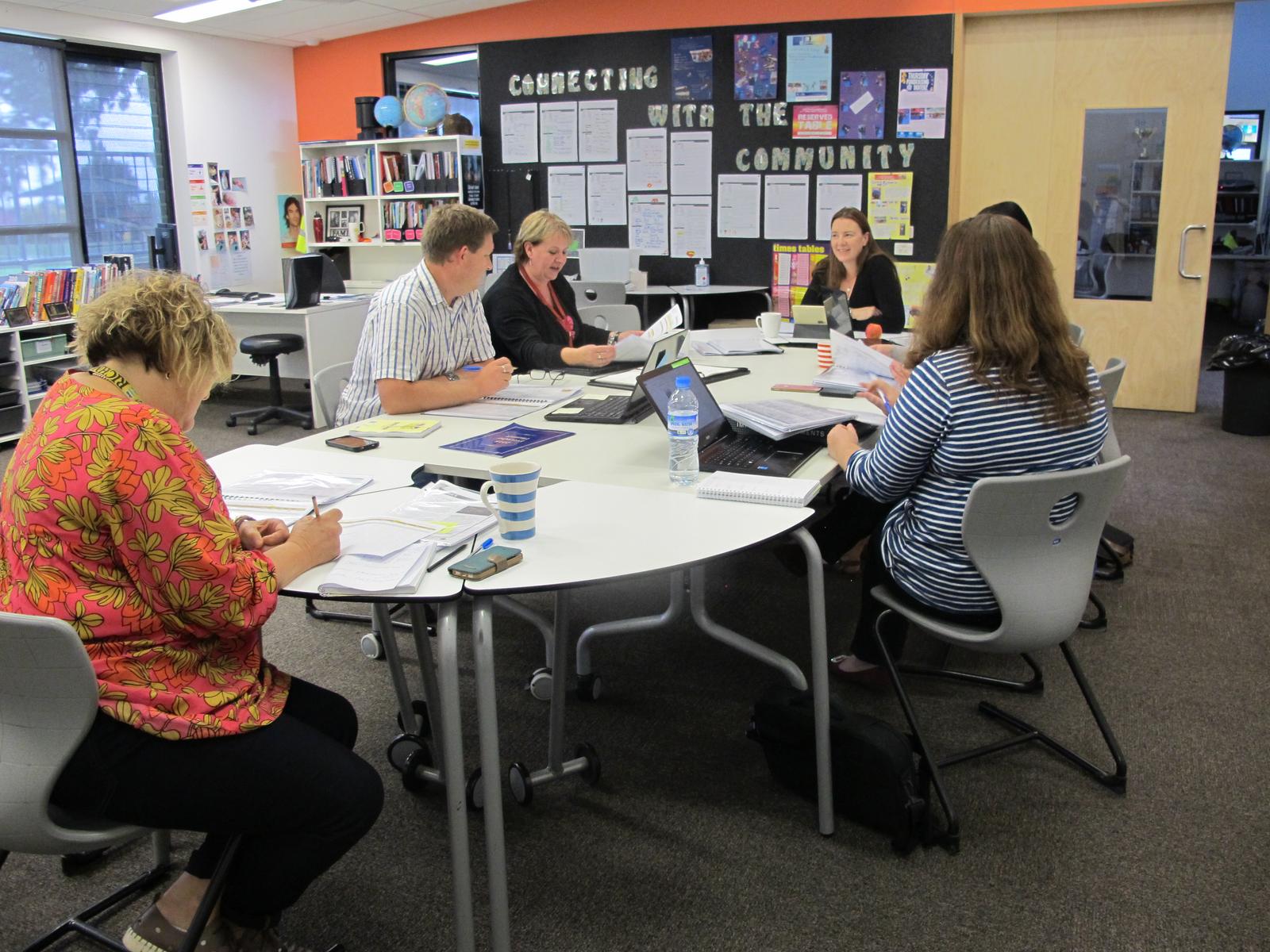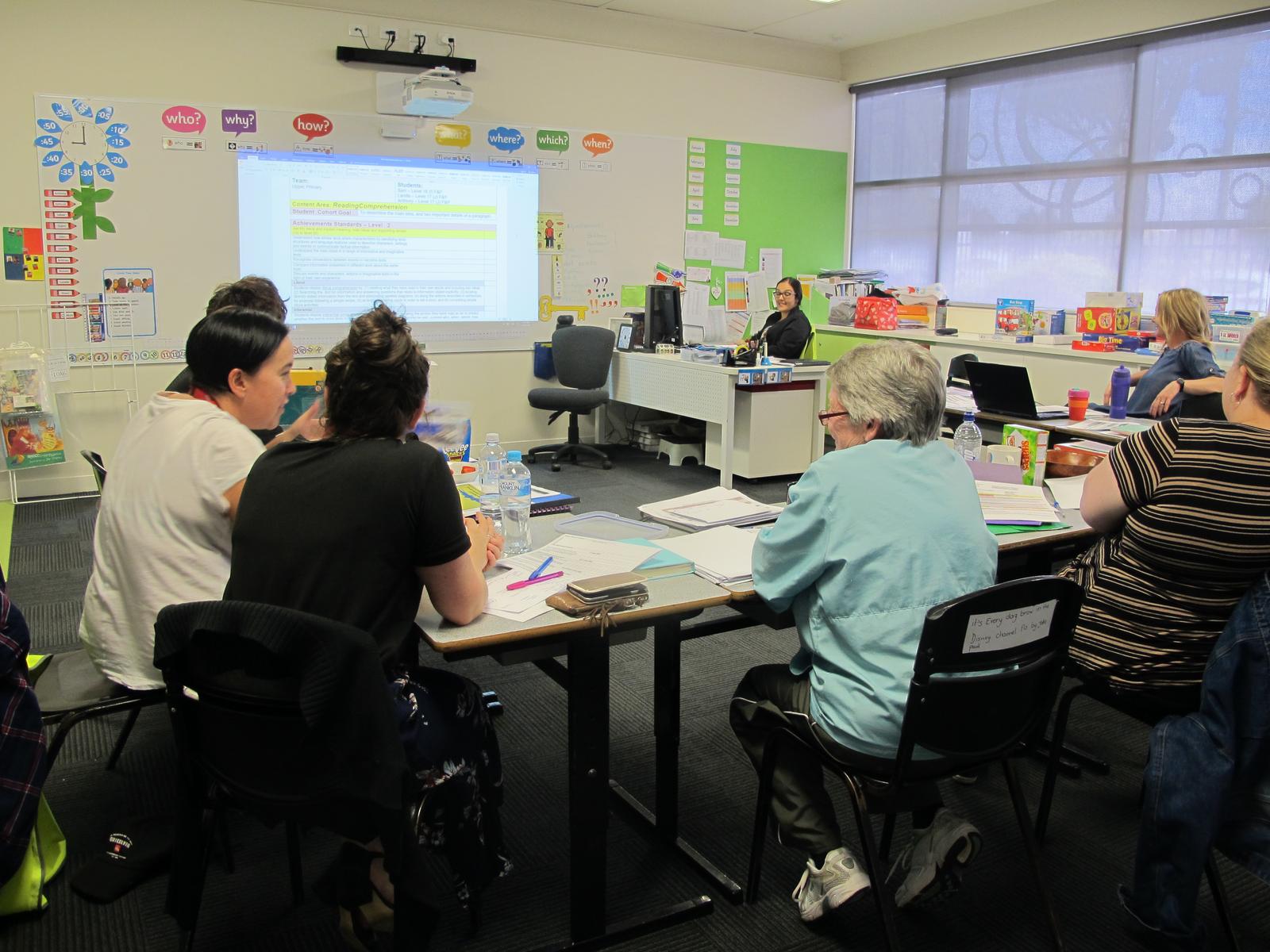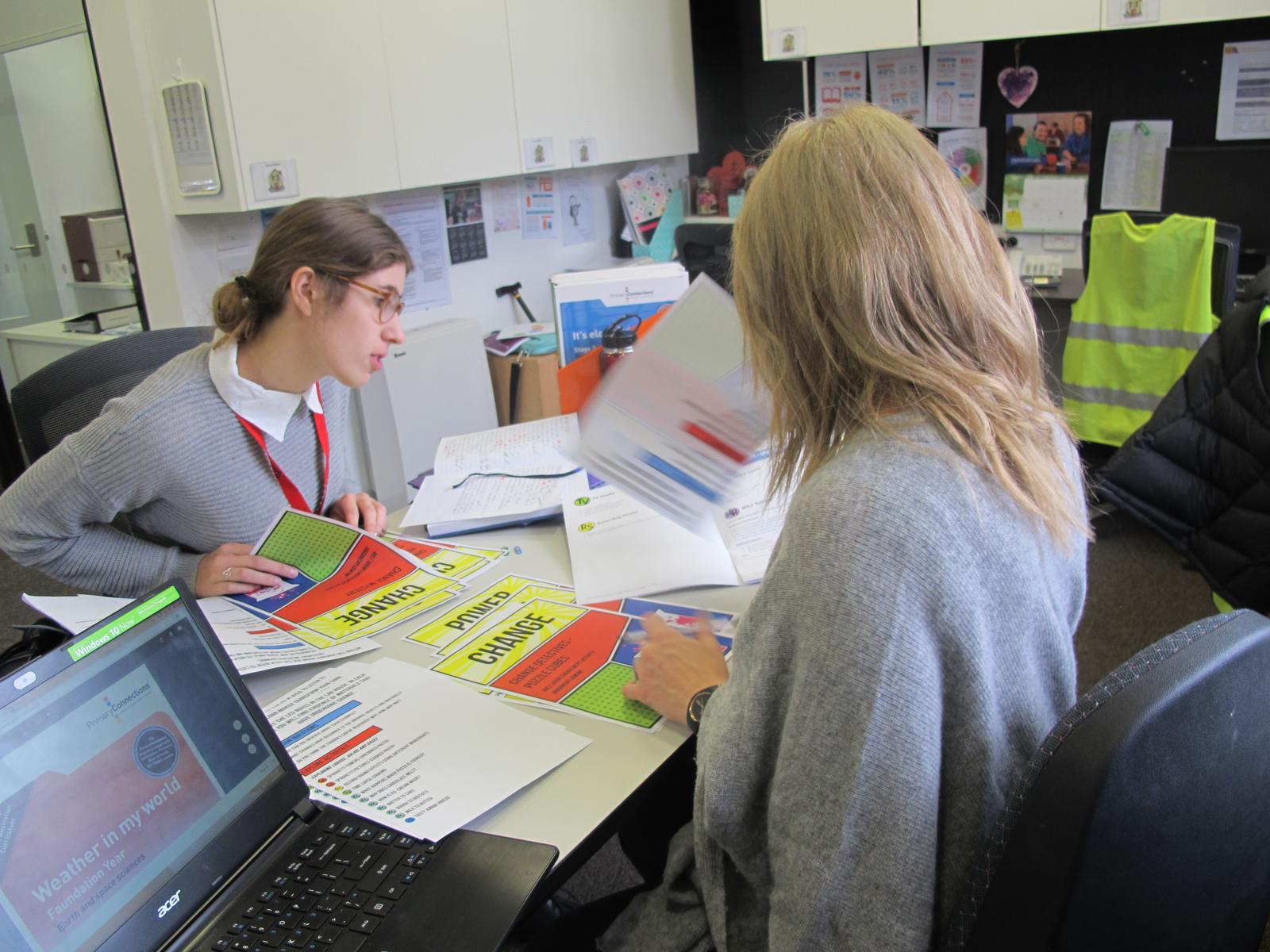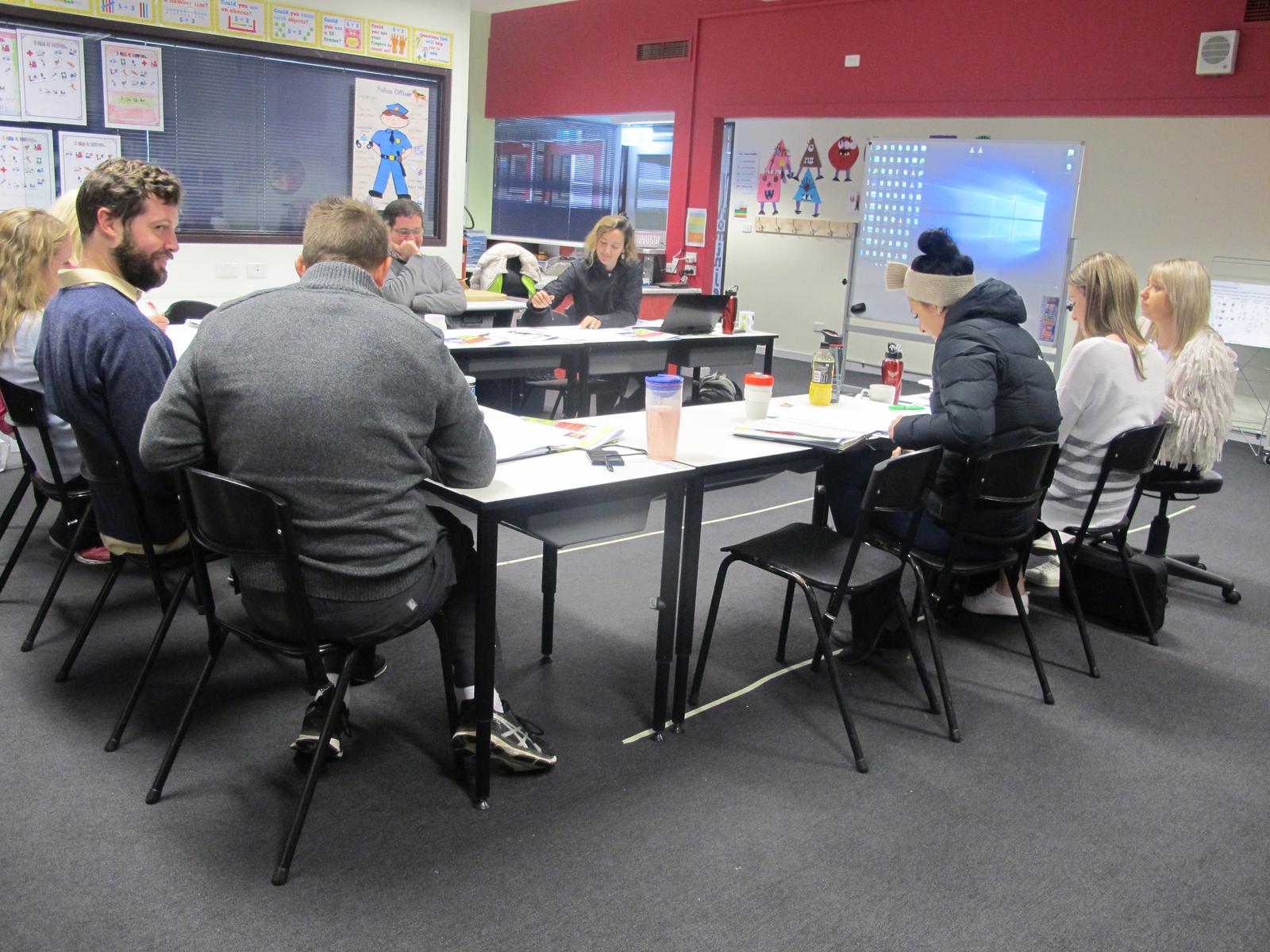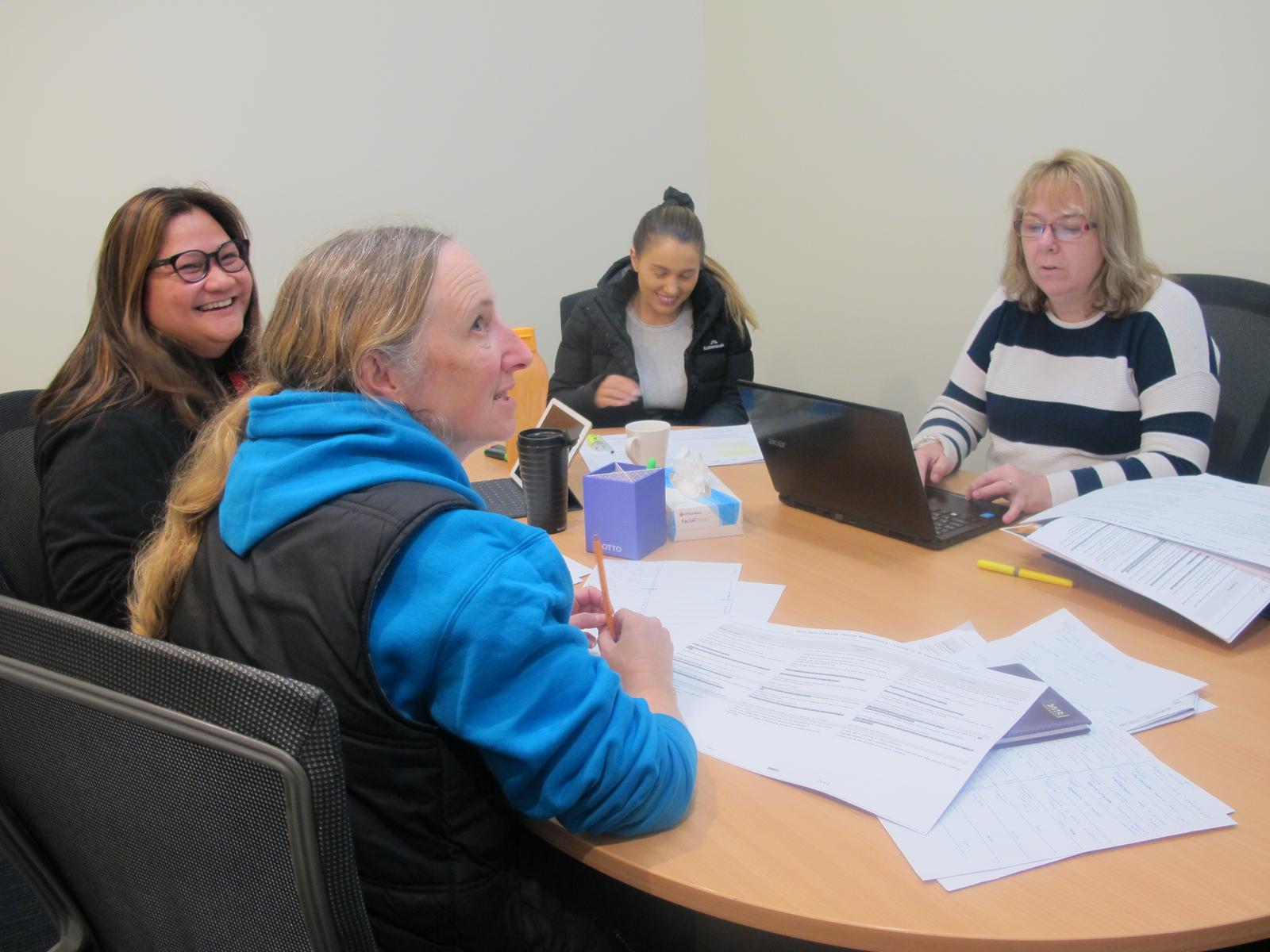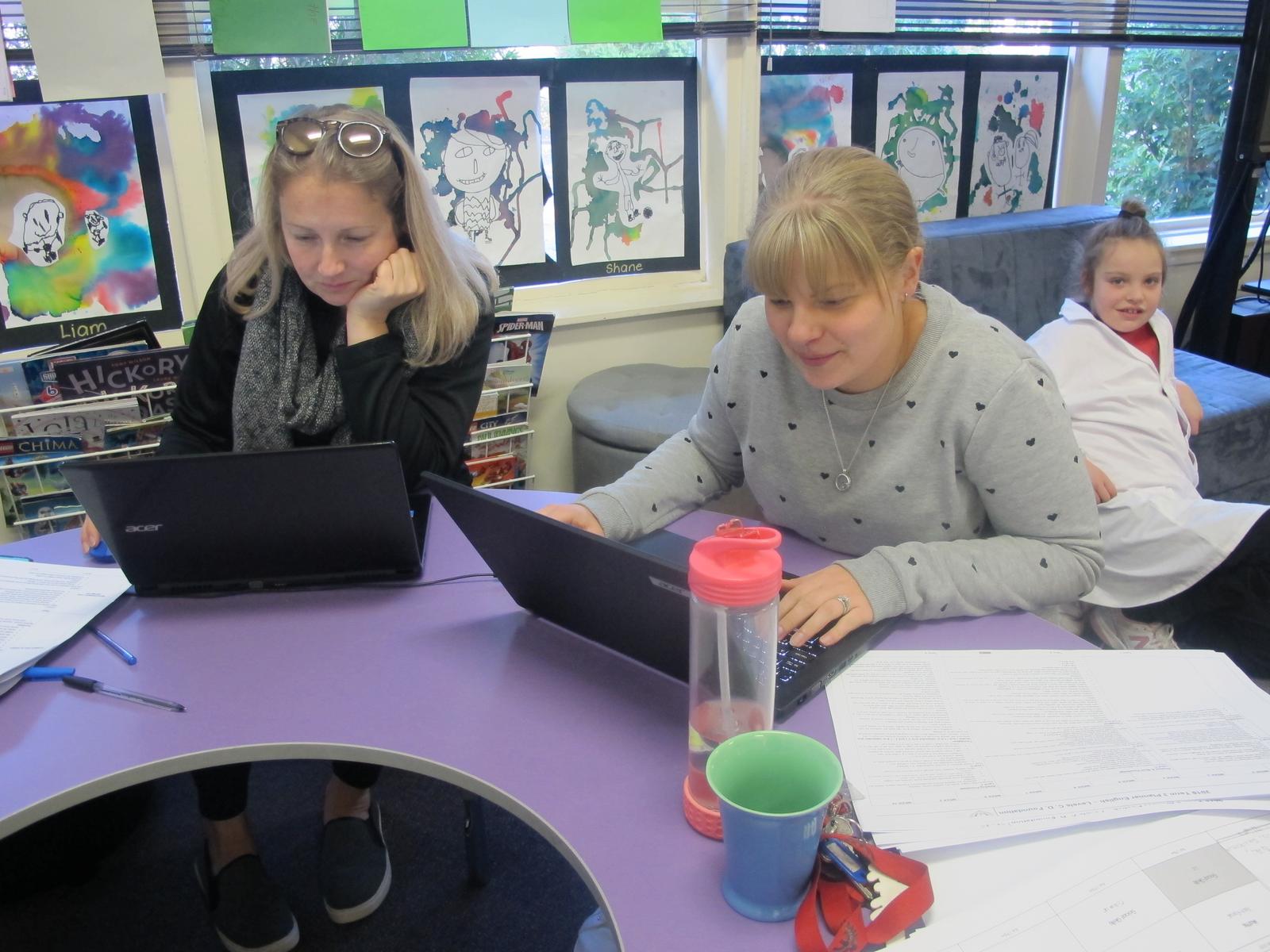Teaching and Learning
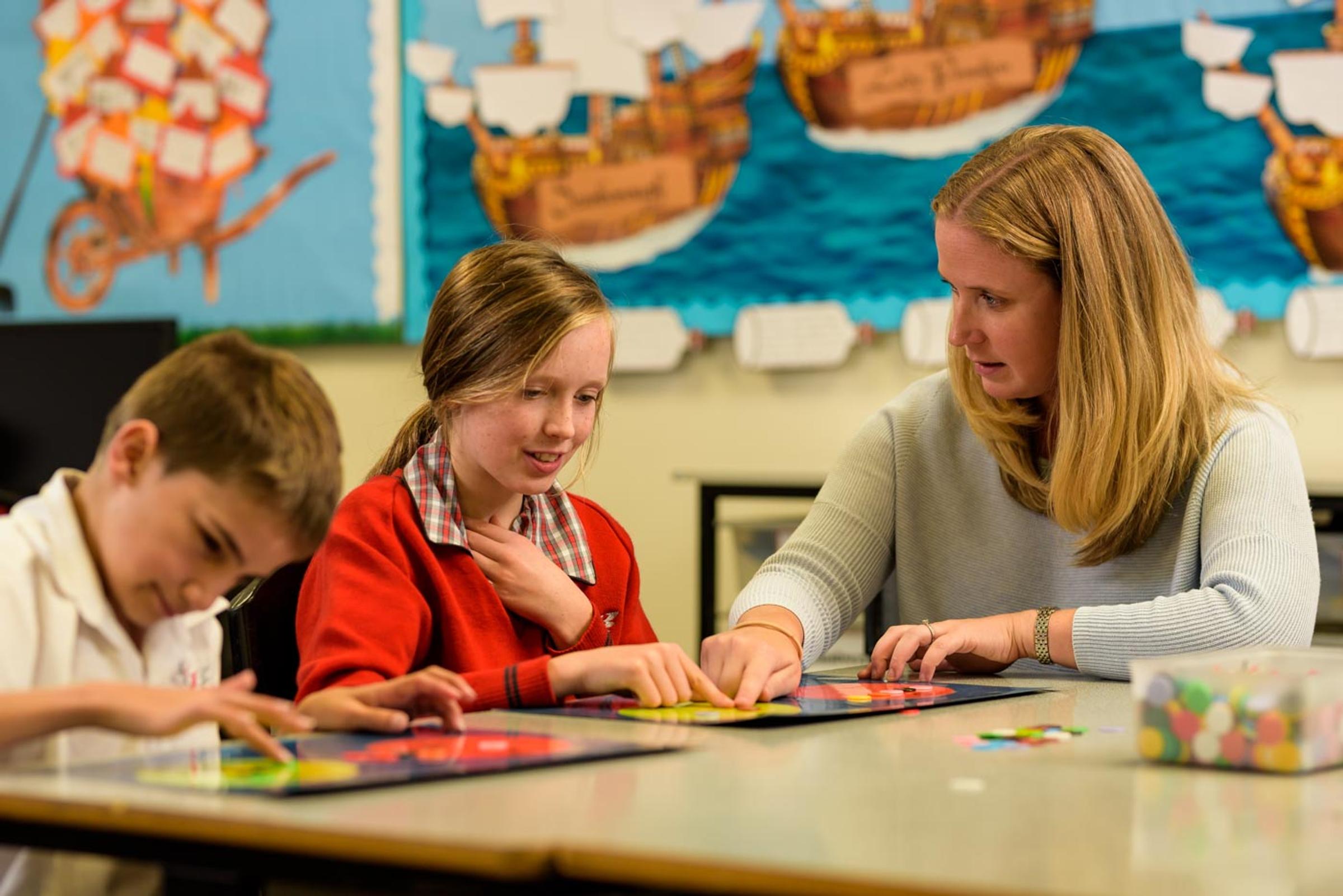
English - Writing
All students continue to be engaged in both reading and writing informational text.
Our Primary students are enjoying writing recounts about familiar experiences linked to their Integrated Curriculum. After attending the current Chinese dance workshop Lower Primary students shared their experiences by drawing, dictating a sentence or writing their own responses. To assist with the process, students used photos as well as visual information such as pictures, picture words and picture word sentences. Teachers also provided clear orientation prompts using the signal words: first, then, next and finally to guide students’ recounts. Many classes engage in regular language based programs such as science, cooking, movie-making, movement and mindfulness. Students are able to draw on these rich experiences in their recount writing.
Upper Primary students are also writing recounts about a variety of class experiences. Photo prompts have also been used to generate discussion and build ideas. Classes are planning their writing by recording what, where, who, when, why information on posters. Graphic organisers continue to help students’ list the key vocab (wow and connective words), frame their main ideas and sequence events, Teachers have conferences with individual students to work on their writing processes at their point of need. I was delighted to see many students, this week, successfully writing, editing and publishing their recounts of the Polly Woodside, Bee Incursion, Science investigations and the long weekend. PJF and PMB are certainly looking forward to writing about their recent camp activities at Blackwood.
Secondary students are now tackling persuasive writing. This involves identifying and stating an issue or point of view, expanding ideas, considering perspectives, justifying and supporting opinions, analysing and evaluating information and determining importance. Examples of persuasive text include arguments (expositions), debates/discussions, advertisements and commercials that promote social comment and cartoons and reviews.
In the early stages students are provided with plenty of opportunities to share opinions and ideas before writing a persuasive text. Students need to identify the issue and take a stand on it or make a judgement before writing to persuade. They need to anticipate the arguments of the opposition and form a compelling response. They will be explicitly taught to organise reasons for a particular viewpoint using a graphic organiser such as a T chart. Teachers will also introduce students to a range of persuasive techniques, particularly those used in advertising.
Students will look closely at examples of persuasive text, they will discuss and list the steps in planning, drafting, revising, editing and publishing an effective exposition. They will use graphic organisers to list arguments for and against. They will, also, be supported to use modelled structures and organisation, vocabulary and language features over the next three weeks.
Persuasive language features include the following:-
- Emotive language (such as I strongly believe, it breaks my heart) that appeals to values, feelings and reasoning.
- Facts and opinions
- Writing in the first person
- Using conjunctions to link cause and effect, e.g. therefore, because, so
- Using connectives to sequence points, e.g. firstly, secondly, finally
Persuasive structure varies according to the type of text. Teachers will provide models of expositions and discussions and help students identify the parts and purposes of each. They will demonstrate how to write an exposition, emphasising the need to state the issue and stand taken, the reasons for a particular standpoint and a recommended solution. Already this week, I captured many students framing their own opinions on a topic and writing two or three supporting arguments before rounding off with a persuasive conclusion.
When writing a discussion they will be taught to state and examine alternative views on an issue and then form an opinion based on the evaluation of the differing points of view. They will recognize and record points for a stance and provide supporting evidence. Students will differentiate between facts and opinion. They will learn that opinions need to be justified by provable facts.
PreCAL students have an ongoing focus on informative texts till the end of term as they work collaboratively on multimedia projects related to either emergency services (Yr. 7/8) or workplace safety (Yr. 9/10). Year7/8’s have written interview questions for a number of emergency workers, most recently a firefighter, and they have recorded these in-depth interviews. Year 9/10 PreCAL students have toured a number of different workplaces such as Endeavour Industries, Melbourne Polytechnic and Bunnings to see workplaces operating. They prepared and asked questions during the visit and focused on identifying the safety aspects seen. Arising from these experiences students have designed and refined workplace posters and are now using the slogans they’ve created in ambitious workplace safety advertisements recorded in the Discovery Centre TV studio.
We are all looking forward to viewing both of these multimedia presentations
Reading and Viewing
The Reading and Viewing focus for the remainder of the term is word level grammar. This describes how a student becomes increasingly proficient at reading and creating written texts with higher levels of grammatical accuracy. Students display an increasing ability to decode and compose coherent texts for a wide range of purposes, making appropriate choices at the word group level. At the most basic stage students will be connecting objects to names.
Most students will be exploring different examples of nouns, common and proper and identify verbs as they are reading. They will readily identify and compare nouns and verbs. At the highest level students will be looking at the different ways adverb groups and prepositional phrase work.
Mathematics
Algebra is often viewed as an abstract part of the mathematics curriculum; however, algebraic thinking begins as soon as students notice consistent change and seek to describe it. Thinking algebraically involves both understanding patterns and number sentences or equations.
Patterns are an important focus in the early stages of the development of algebraic thinking. Patterns are everywhere and the patterns in algebra fall into two broad categories: repeating patterns and growth patterns.. Initially, students learn to recognise, make, describe and continue repeating patterns. They will need to recognise how many parts (or elements) make up a pattern. Initially, these patterns may be created from shapes, objects or pictures before moving to number patterns. Students will use number charts to:-
- Count by 10's, 5's and 2's
- Examine patterns found in two digit numbers
- Identify odd and even numbers
As students progress they look at patterns in addition and subtraction. When they discover these patterns, this helps to strengthen skills and concepts in Mental Math. Here are a few ideas:
- Adding "one more" to a number
- Skip counting or adding +2
- Adding 10 to a single digit number
- Adding and subtracting zero
As students develop their skills further, they learn to find missing numbers in patterns and discover relationships between addition and subtraction, and multiplication and division. They will also describe patterns in words and be able to determine a rule to describe a pattern.
Helping your child initially with pattern and algebra
- Discuss the numbers on houses in the street and ask your child to describe what is happening to the numbers as you walk along.
- Look at samples of wallpaper and talk about the pattern. How many parts of elements make up the pattern? Where does the pattern start? How many times is it repeated across the paper?
- Play games involving body actions such as clapping and stamping your feet. Ask your child to repeat the pattern and then to make up a pattern for you to repeat.
- Have your child use beads, buttons or pegs to make a repeating pattern and tell you about the pattern. Patterns could be based on colour, size, shape or items (e.g. peg, peg, spoon, peg, peg, and spoon). Ask your child to describe the pattern and to tell you how many objects make up each pattern.
- Ask your child to make as many different patterns as they can from three blue, three white and three red pegs.
Helping your child develop more skill in pattern and algebra
- Help your child create beaded jewellery.
- Look for patterns in the numbers on a calendar. Why do these patterns occur?
- When driving for long distances in the car, play number games to investigate patterns such as, ‘Guess my number (x)'. For example:
- My number (x) is between 20 and five; it's an even number and a multiple of three.
- When watching sporting games, calculate scores or investigate combinations of scoring possibilities. For example:
- The Swans scored four goals and three behinds in the first quarter. How many points did they score?
- The Bulldogs scored 39 points in the first half. What combinations of goals and behinds will give this score.
Measurement and Geometry
Students are consolidating their learning around location.
- In Primary classes the focus has been following directions in everyday situations and locating specific objects to complete a task. Initially simple directional language such as ‘on’, ‘in’ or ‘under’ has been reinforced. As students gain confidence the positional and directional language becomes more complex and includes words such as behind, forward, backward, through, left, right, near and next to. Students have enjoyed using the outdoor spaces. Many classes have listened to and followed directions (over, under, between, around) to complete obstacle courses and have followed directions to navigate around different areas of the school.
- Initially, Secondary classes have linked their location learning to the Integrated Curriculum by using maps of Australia to locate capital cities, states and territories. They have identified the four compass points and used their knowledge to describe the eastern states or the most southern Australian landmass. Secondary 9/10’s have examined world maps to locate the various countries they are exploring and are starting to use their compass skills to describe a country’s geographic features.
- Many Secondary classes are supporting students to read maps and locate features or follow pathways by using co-ordinates and referring to the x and y axis. Additionally they have further developed students’ positional language by challenging target students to find a hidden object. Teachers have supported students to develop a set of instructions to help a seeker find the object. They have used language such as right, left, north, south, east, west, underneath, behind, inside, outside , around, half turn, ¾ turn etc More proficient students are challenged to design maps. They are beginning to accurately describe position and pathways and interpret more complex maps that include compass points, co-ordinates, legends and map scales.
- PreCAL classes have used a map of the school to create and follow a pathway. They have learnt about grid lines on a map and practiced finding co-ordinates to locate familiar school yard features. To assist students with interpreting the birds-eye map view classes have colour coded features such as buildings pathways, gardens and playing areas and added a key tabling the coloured features. On community experience days PreCAL students have practised following location and positional instructions as teachers prompted them to navigate around stores, businesses or facilities.
Integrated Curriculum
Over the next few weeks, a tantalising multicultural cooking program forms a significant part of the Lower Primary Integrated Unit on “Stories of the Past".. Through food and cooking students are investigating different cultures each week. Once the dishes such as Vietnamese rice paper rolls, Macedonian zucchini slice and Indian tamarind rice are prepared students have a special afternoon tea.
Additionally Lower Primary students have recently enjoyed telling Chinese stories through movement and drama. The Chinese dance workshop, featured the traditional Chinese dragon or lion heads encouraged students to respond to Chinese stories and culture as they participated in an engaging dance performance.
Upper Primary students have engaged in a smorgasbord of activities related to the First Fleet:
- Painted clay love tokens
- First Fleet Facts
- Sketching tall sailing ships with cargo
- Jigsaw Map of the First Fleet voyages
- Making replica tall ships with edible materials-cheese sails, grissini masts etc
- Responding to historical accounts by drawing ‘A day in the Life of a Convict”
Secondary 7/8 students have investigated colonial conflicts such as the Eureka Stockade and the Myall Creek Massacre. After watching video footage, students were guided to reflect on the causes and the consequences of both conflicts. They used thinking tools such T-Charts to sequence key events and summarise the effects of those conflicts on indigenous people and early immigrants.
Students in Secondary 9/10 have been looking at the push and pull factors that prompted migrants to settle in Australia. They have moved on to examine the impact of certain cultures on Australian society. With a focus on famous Greek, Italian, Vietnamese or Chinese Australians students have selected and researched a famous person. Students plan to share their knowledge and showcase their research skills as they present their findings to the class.
Over the next few weeks Yr. 7/8 PreCAL students will have honed their public transport skills, locational language and knowledge of emergency services as they visit the MFB Museum City, the Thomastown Fire display and the Diamond Creek Fire Station. At school, students have been examining route maps and inspecting journey planner instructions and checking progress on the journey. Also they have been able to apply the language and skills around location, positional and directional words.
Yr. 9/10 PreCAL students have explored a number of businesses and educational facilities. Next week they are visiting Bunnings. They plan to examine job safety hazards and identify where to be careful, what to wear and the reasons for that clothing and the physical environment of hardware workplaces. Students will have an authentic opportunity to listen to and following directions as well as ask questions and communicate with Bunnings staff.
Next semester’s units
PreCAL students will undertake a unit of study on Leisure in terms 3 and 4. Feedback from parents regarding students’ current and preferred leisure pursuits and interests was incorporated into the Leisure program for Semester 2. This unit focuses on developing the student’s social interactions and communication skills as they explore a range of leisure opportunities in the wider community. Students will gain confidence as they become familiar with many diverse leisure options. They will identify areas of interest and how to access different hobbies and activities during personal leisure time. Students will explore common interests to develop social groups and practice the skills required to actively participate in an activity and include others. Through these experiences students will improve their ability to engage in meaningful leisure activities in the broader community.
Our amazing Discovery Centre will be transformed at the start of the second semester to support our new integrated unit on Change. Ashley Butler, Courtney King and Kirsten Coulter have developed a range of hands-on multi-modal learning opportunities to cater for all sections’ unique learning focus
There are four learning through-lines in the Change theme as follows:-
- Weather - Lower Primary students’ beliefs and understandings about the air, sun and wind will be developed as they work through hands-on activities. Through investigations, they will increase their knowledge of how the characteristics of weather affect their daily lives.
- Spot the difference- Upper Primary students will observe the diversity of materials in their world. They will explore change through the context of food and other materials including spaghetti, chocolate and popcorn. Students will learn how materials can be combined, mixed, heated and treated and how that can change the properties. They will research whether the change can be reversed or not. As they investigate processes such as melting chocolate or making butter students will learn to draw conclusions about how fast or slow changes can happen and the consequences of change.
- Heating and melting- Secondary 7/8 students will explore how solids or liquids are influenced by temperature. They will experience the way items from their everyday lives can change. Through hands-on investigations, students will investigate how the size of the pieces affects the melting time of chocolate. It provides opportunities for students to investigate different heat sources and how heat moves from one object to another. Through hands-on activities, students investigate the difference in conductivity of materials.
- Changing matter and electricity- Secondary 9/10 students will explore melting, evaporating, dissolving, burning and chemical reactions. Students’ understanding of the factors that influence the rate of change will be developed through hands-on activities and student-planned investigations. Students will become detectives who identify and explain physical and chemical changes in everyday materials. Through experimentation students will also explore the role of electrons in transferring energy in electric circuits. As they investigate batteries, light bulbs, switches, conductors and insulators, they will explain how battery-operated devices, for example, a torch, work.
Social Competencies
Relationships and Sexuality continues to be the focus for learning across the school.
In Lower Primary all students are building on their body awareness and learning how to keep safe. The Preps are beginning to explore the anatomical dolls undressing, dressing and bathing the dolls. Other classes are learning about which people are exemptions to the private body part rule.
Upper Primary students have identified public and private behaviours and body parts and are now recognizing public and private places. Through graphic prompts, role play and discussion students determine what makes a place private or public. Classes identified what makes a room private (it’s just you, closed door, people have to knock). They made signs for their bedroom doors asking people to knock. This process helps students have privacy when changing, bathing or sleeping.
Secondary 7/8s have investigated the physical and emotional changes in puberty and looked at ways to manage those changes. They have taken turns to select a product from a ‘mystery bag’ featuring different products that may assist in managing the changes that occur from puberty (e.g. pimple cream, face wash, shampoo, face washer, bra, razer, shaving cream, after shave, deodorant, etc). Students were, then, challenged to identify the product and say what it might be used for e.g. bra for managing breast growth. The MPower Girls program and the Rock and Water program also reinforced the practical messages about physical and emotional changes that occur during puberty.
Secondary 9/10s have examined romantic and sexual relationships. They have canvassed and consolidated a range of relevant and related issues:
- revising the steps to a romantic relationship
- reinforcing being friends first
- where to make friends
- how to initiate/maintain friendship
- hanging out with friends
- consent, attraction and rejection.
- appropriate talk and touch for each of the different relationships.
Students are learning to be respectful and mature during discussions in which they cover the decisions that need to be made in romantic and sexual relationships. Teachers have explained that sexual thoughts and feelings are normal and often result in body changes/ signals.
Yr. 11/12’s have identified appropriate/inappropriate behaviours within a professional relationship. They discussed a range of professional relationships including workplace relationships and the role of carers or respite staff. Students learnt about respectful professional interactions and what they would do if there was workplace abuse or sexual harassment. Teachers have also discussed romantic relationships and sexual decision–making and covered topics such as; the appropriate age of romantic partners, what the body does when they have sexy feelings, personal safety and how to say no!
Parents are encouraged to access support information on the Family Planning Website https://www.fpv.org.au/communities
3-Way Conferences
A ‘3-Way Conference’ is a shared parent, teacher and student interview where Student Learning Goals (SLPs) are discussed and the progress towards meeting those goals is canvassed.
In term 3 during the SSG meeting 3-Way Conferences will be held for all students in Secondary 7-12. For Secondary Year 12 students, there is another SSG meeting in term 4 in which 3-Way Conferences will also occur. Students are required to attend their scheduled conference time with their parents.
Yr. 11/12 SSG meeting is Tues 31st July
Yr. 7-10 SSG meeting is Wed. 1st August
At Concord School we aim to give the learner increasing responsibility and ownership for their learning so they can develop into independent, life-long learners Student voice and agency is promoted strongly in a leadership capacity in the form of the Student Representative Council and the appointment of classroom captains across our school. A ‘3-Way Conference’, however, is a way to encourage students to take responsibility for their own learning, actions and decisions. It also demonstrates that, together, we will support their learning and celebrate their achievements. The decision to conduct 3-Way conferences stems from evidence in recent student, parent and teacher surveys indicating that student voice is one area in which we can further improve. It forms a key action for improvement in our current Annual Implementation Plan and is strongly supported by the School Council.
‘3-Way Conferences’ are a stepping stone to empowering students to lead their own learning and shape their own educational journey. We have made small steps towards building the capacity of our student community by improving Career Action Plan success which will ultimately lead to greater student learning empowerment.
This year, Secondary 7-10 students have established one meaningful personal learning goal whilst VCAL students have set individual career goals with Career Teacher support. Teachers have assisted students to plan and prepare a relevant personal learning or discipline based learning goal. They have also built students’ strategies to reflect on and monitor what they are learning and how they are learning. They have also developed student confidence to share their goal and provide evidence for their learning at the conference. Parents can contribute to the learning partnership by:-
- attending the next conference with their adolescent
- being active listeners and praising their child’s efforts.
- offering support and encouragement
- indicating (where relevant) how they have supported their child’s learning goal/s.
Professional Learning Spotlight
Professional Learning Communities
Sections meet as Professional Learning Teams (PLTs) to collaboratively support colleagues to plan, implement and evaluate intervention plans for groups of students. The clear aim of this collaborative inquiry is to progress student learning outcomes and improve teacher instructional practice. Consistent with our Annual Improvement Plan the Foundation to Year 12 (F-12) PLTs are focusing on improving student literacy outcomes, specifically reading comprehension skills. In contrast, specialist teachers, logically centre on improving student outcomes in their specialist learning areas. Collectively our section PLTs are referred to as a Professional Learning Community (PLC)
Over the last few weeks classroom teachers and specialists have been analysing the learning evidence and preparing a final intervention review presentation. Team leaders assist teachers to critically reflect on the impact of the intervention on both their professional practice and student learning. I have been fortunate to participate in many review sessions in different sections of the school. I could not be more proud of the work our teams are doing in 2018 as our students are showing improvement and feeling successful. Across the school, the formal PLC cycles of inquiry along with the protocols and procedures are very similar, however the scheduling of the processes varies, at times.
This semester teachers have, initially, been mentored by their Instructional Leaders to interrogate student learning data and prepare a learning intervention plan that identified the comprehension or specialist needs of a group of students. Individually, teachers have presented their plans at PLT meetings and received collective feedback on high reliability strategies and activities to meet student learning goals. Teachers have also reflected on their professional needs to achieve intervention success and selected a few PLC support options. These options ranged from peer observation, mentoring, coaching, professional learning, research and behavioural/allied health support (e.g. speech pathology, occupational therapy, student well-being). As the inquiry cycle continued teachers implemented the agreed intervention in the classroom and undertook complementary PLC support options. The role of the Instructional leaders was pivotal in guiding teachers’ professional opportunities; undertaking the coaching and mentoring, timetabling peer observations and sourcing/presenting relevant research and professional learning to enhance their teams’ instructional practice. Again, with Instructional Leader support, teachers prepared and presented their current intervention reviews for team feedback.
Next semester most teachers will engage in another PLC inquiry cycle with a different group of students. The content focus for Secondary teachers will continue to be comprehension however the Primary teachers are focussing on reading processes, particularly decoding. This is an as area of reading and viewing that has been identified as needing deeper professional attention and skill improvement in the Primary area.
The PLC model supports teachers to improve their expertise through high impact professional learning- learning that is targeted, collaborative, improvement focused and part of a cycle of inquiry.
TEACHERS PLANNING FOR LEARNING
Planning Week this term kicks off on Monday June 4th. During this week students have one day when their class teacher jointly plans with their team and the students have specialist instruction.
At Concord School we work hard to build effective teamwork and improve practice excellence. Each term sections are allocated a shared learning day, towards the end of term, to audit the terms’ teaching and learning and plan for the next terms’ curriculum.
On planning day teams reflect on student progress as they examine, plan and organize the new terms’ curriculum content. Teams take collective responsibility for student growth. They sequence the learning opportunities to scaffold student understanding and build student confidence and engagement. Using consistent curriculum planners, teams support each other to document their planning programs and strategies for all areas of the curriculum. Throughout next term, teachers will use the common planning documents to develop more detailed and differentiated weekly programs. Each week teams will use a common research based planner (i.e. reflecting the Concord Lesson Model) to collaboratively elaborate on high impact strategies and activities to meet the students’ point of need.
During planning days leaders often further build their team’s curriculum content knowledge by sourcing and workshopping relevant best practice curriculum research and materials. This term, leaders are continuing to support classroom teachers’ knowledge of reading comprehension and decoding strategies. They are using cutting edge strategies to analyse student reading behaviours and applying effective guided reading prompts to expand student decoding and meaning making capabilities.
Helen Edmonds
Acting Assistant Principal
